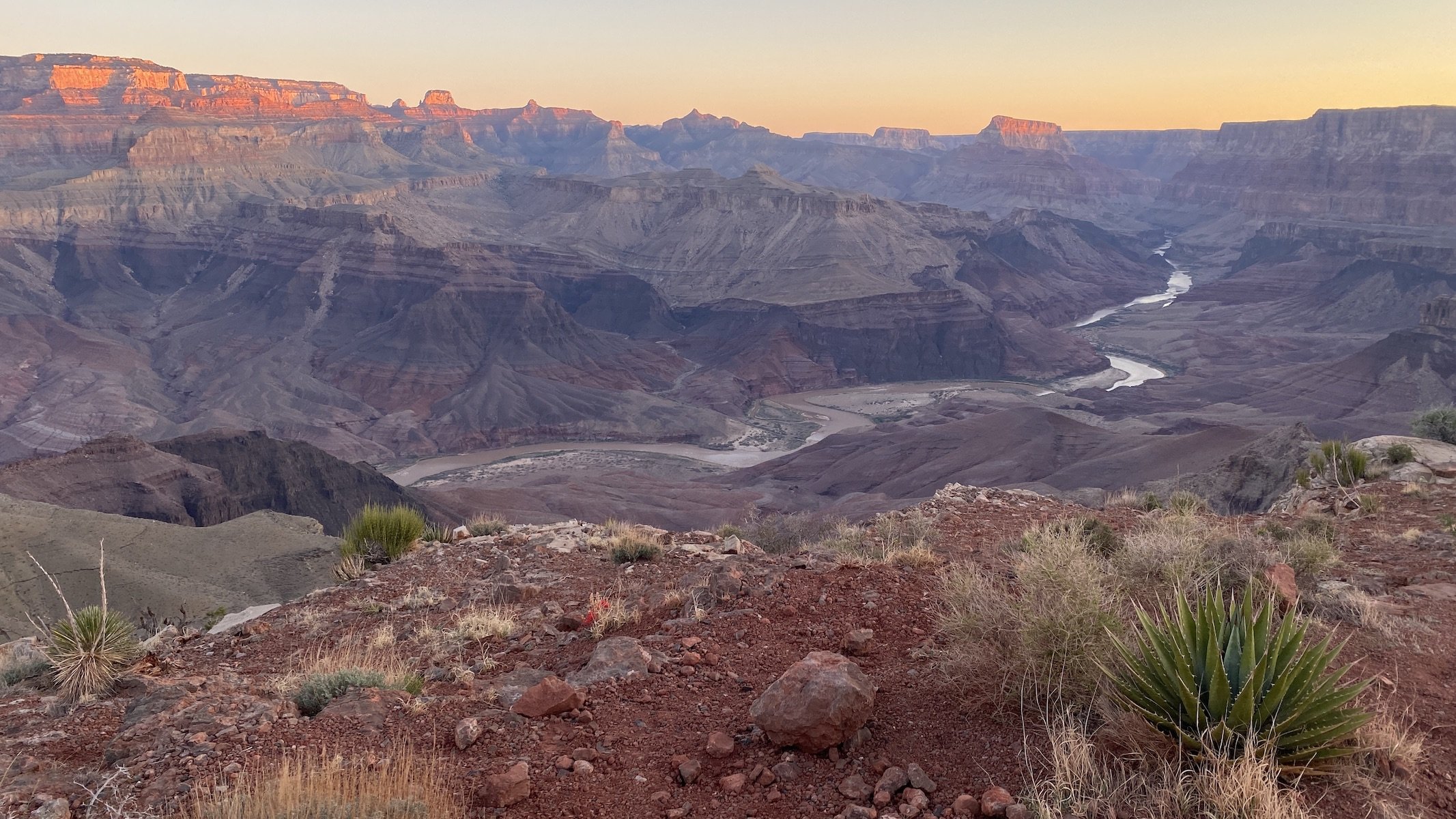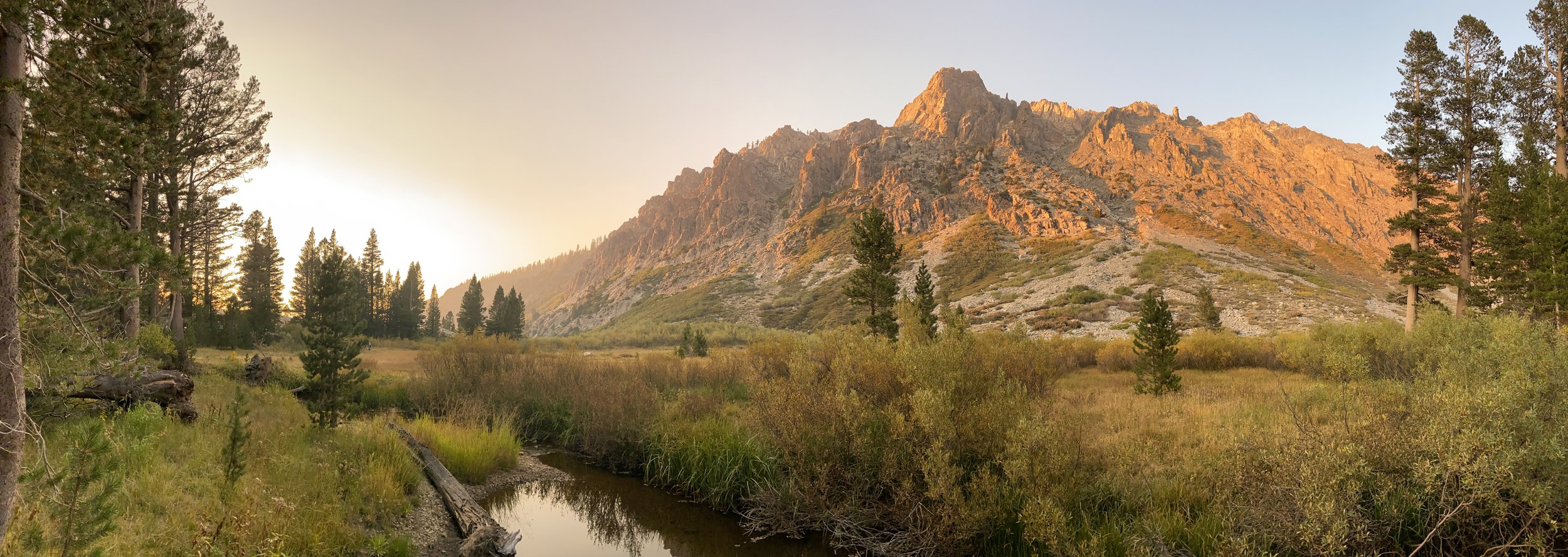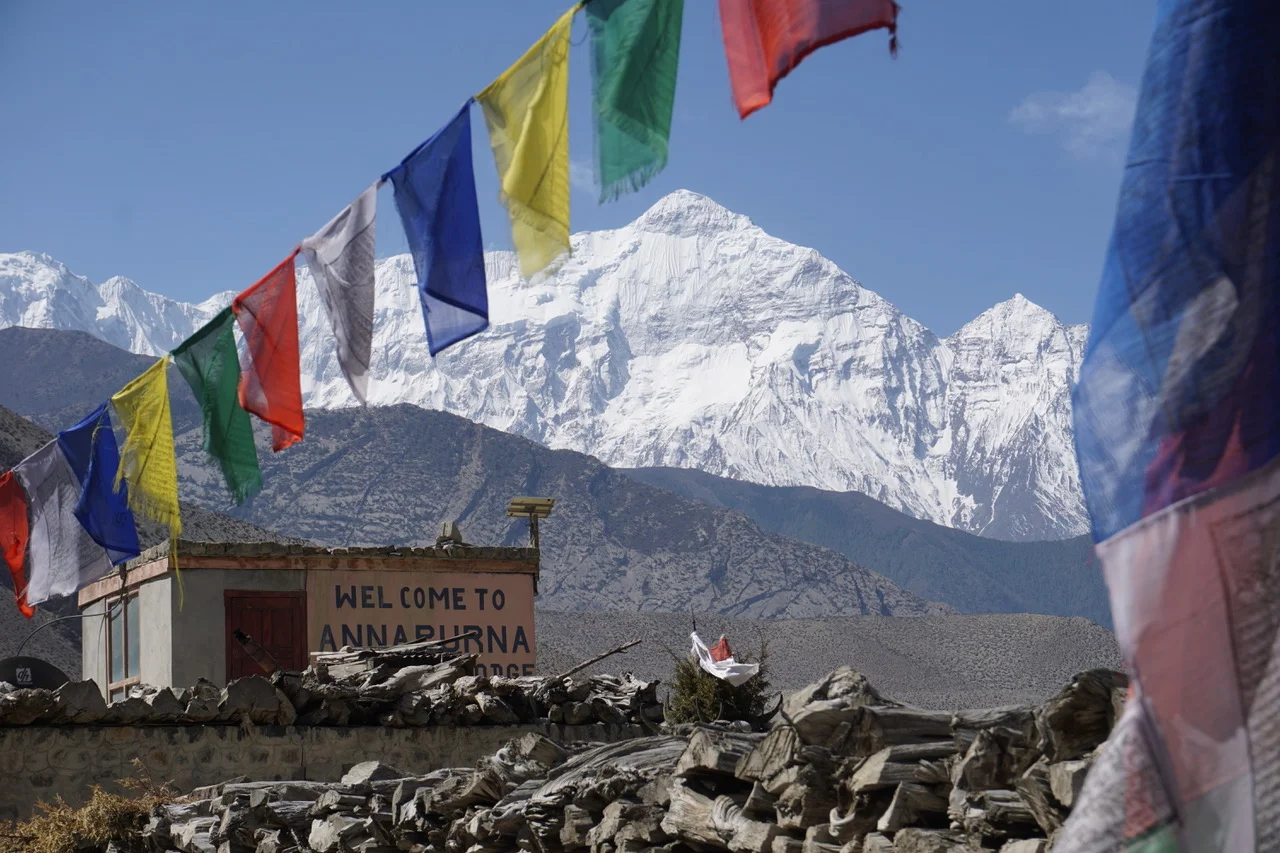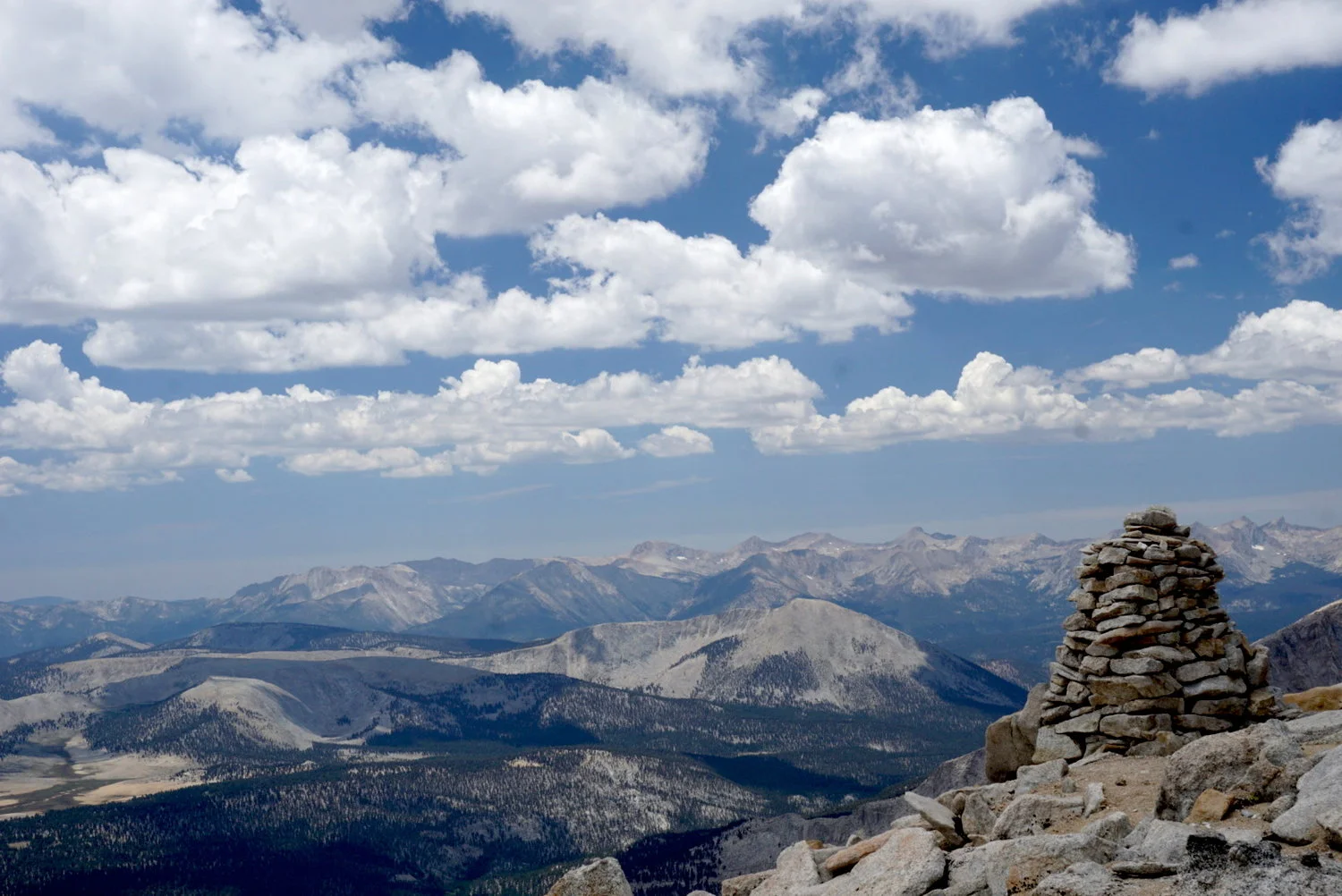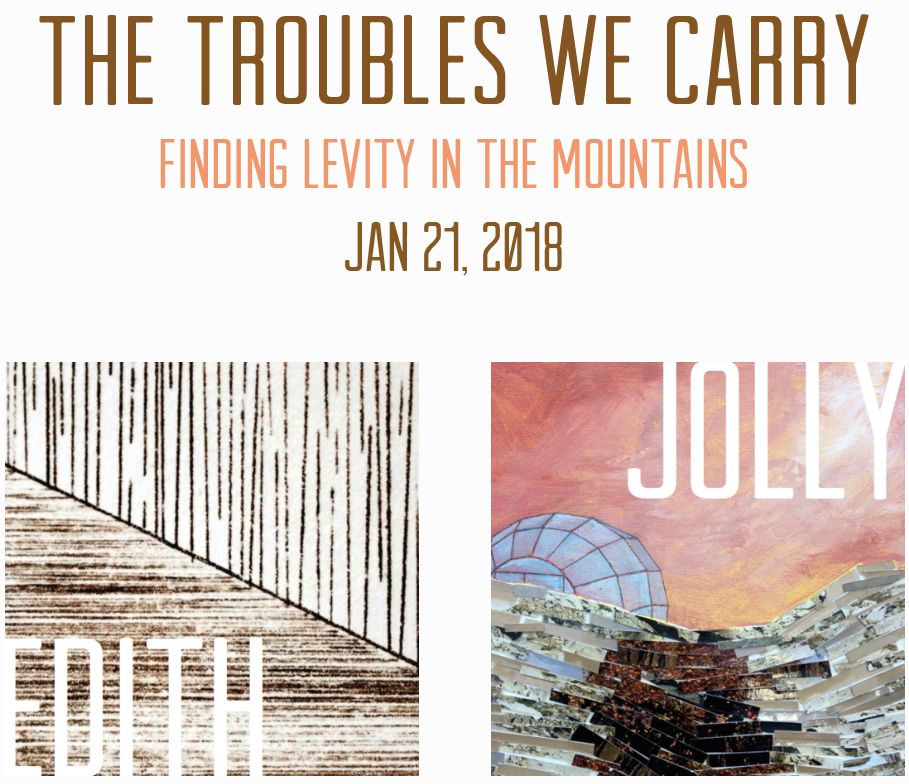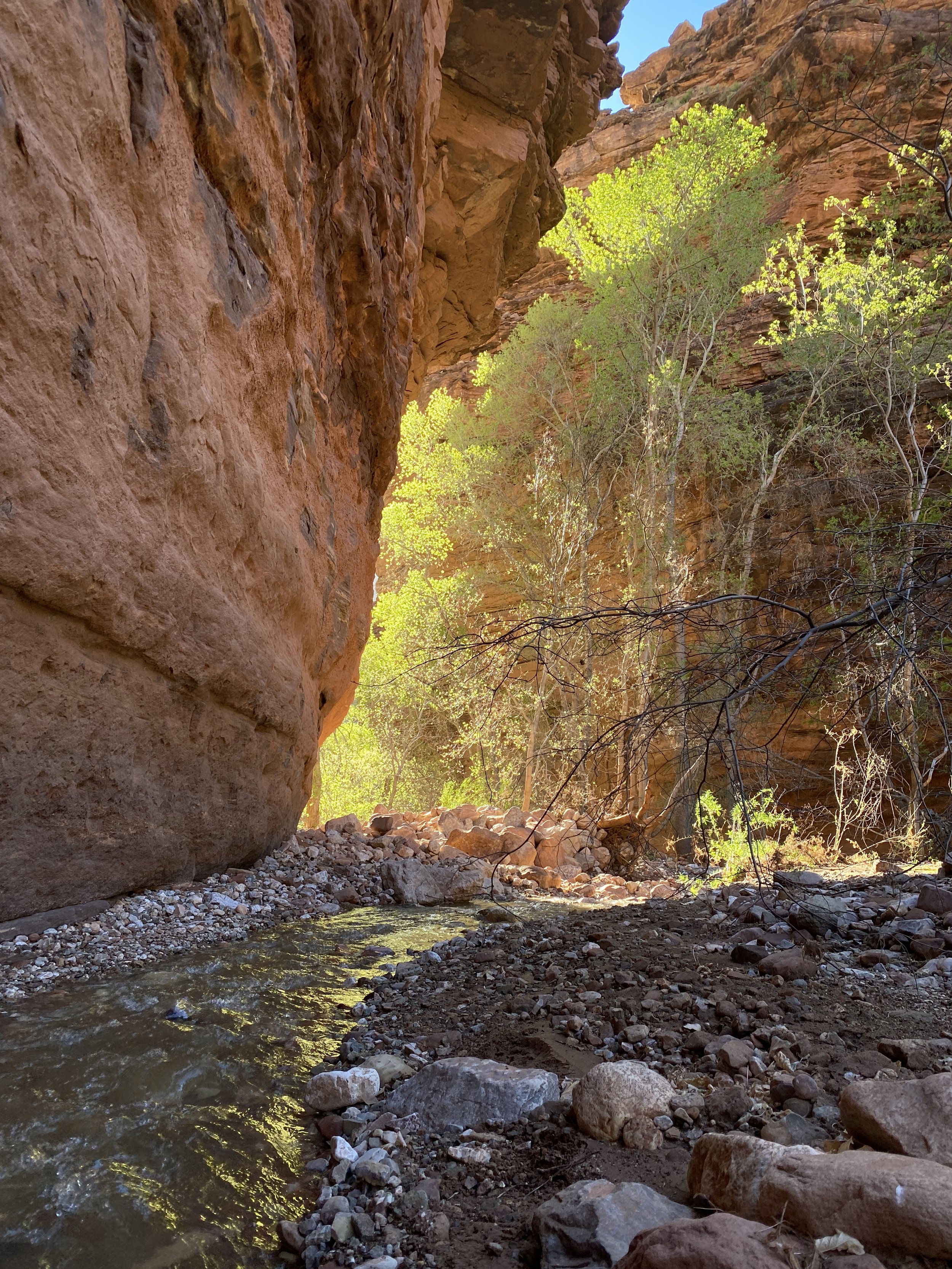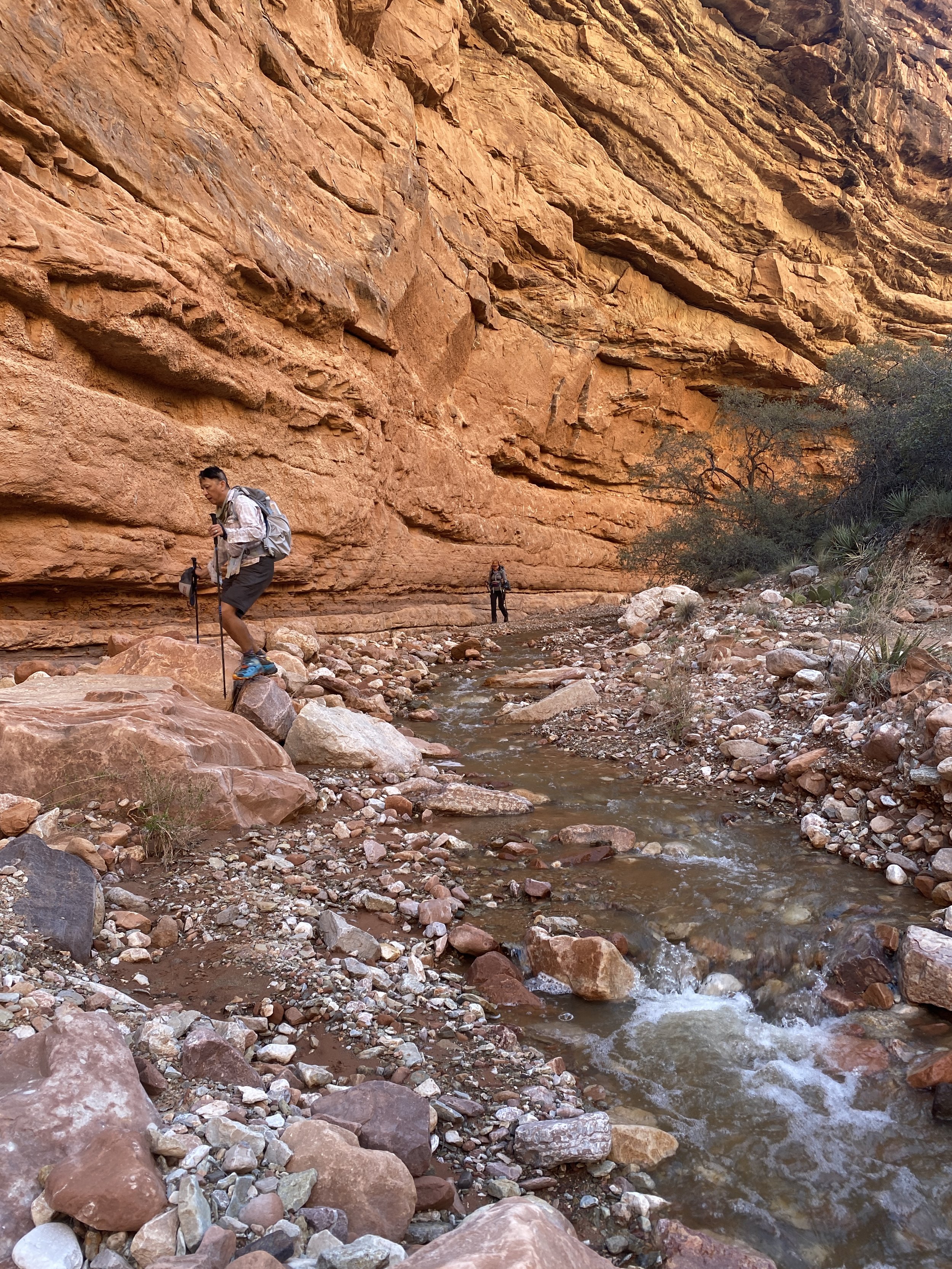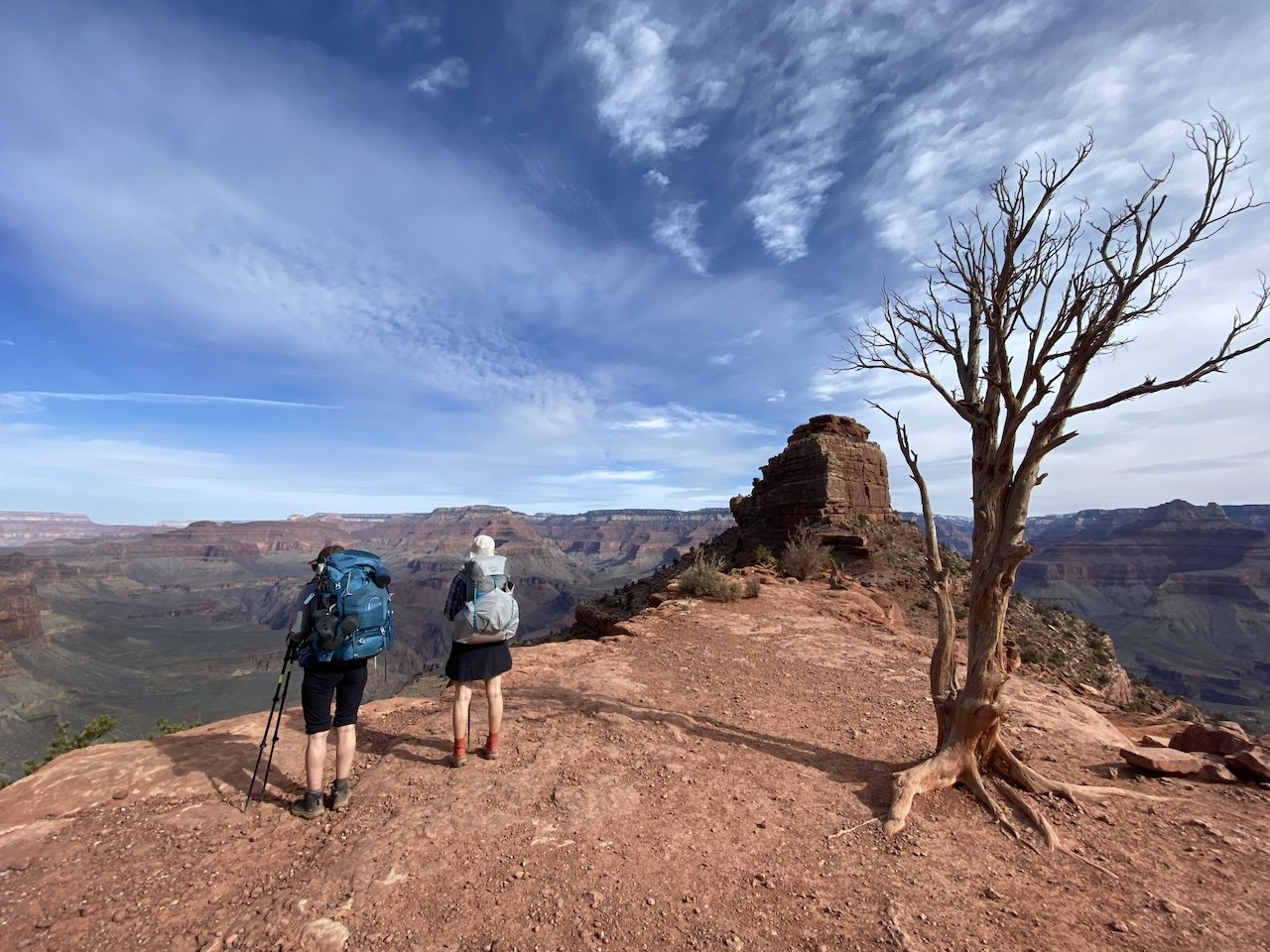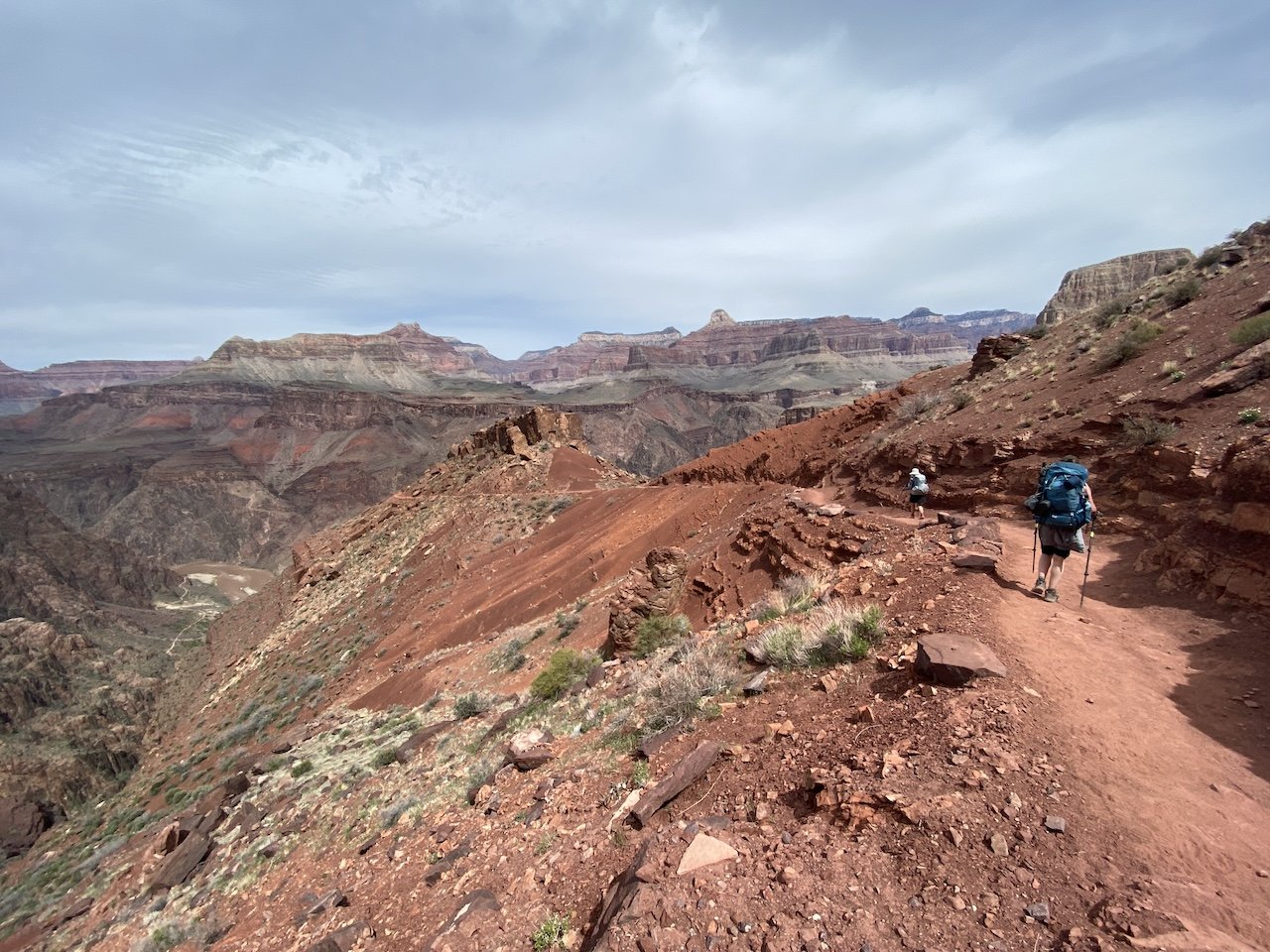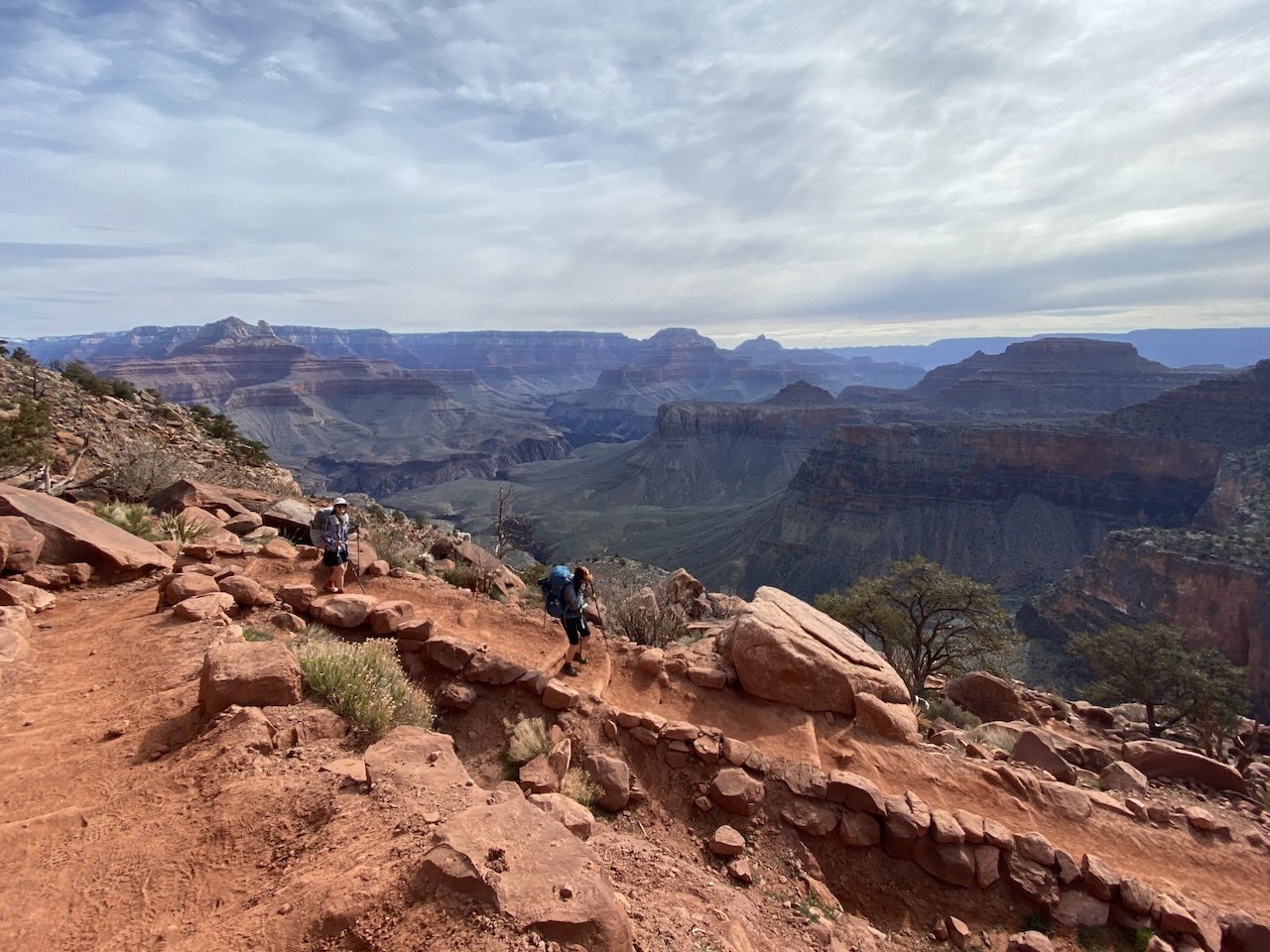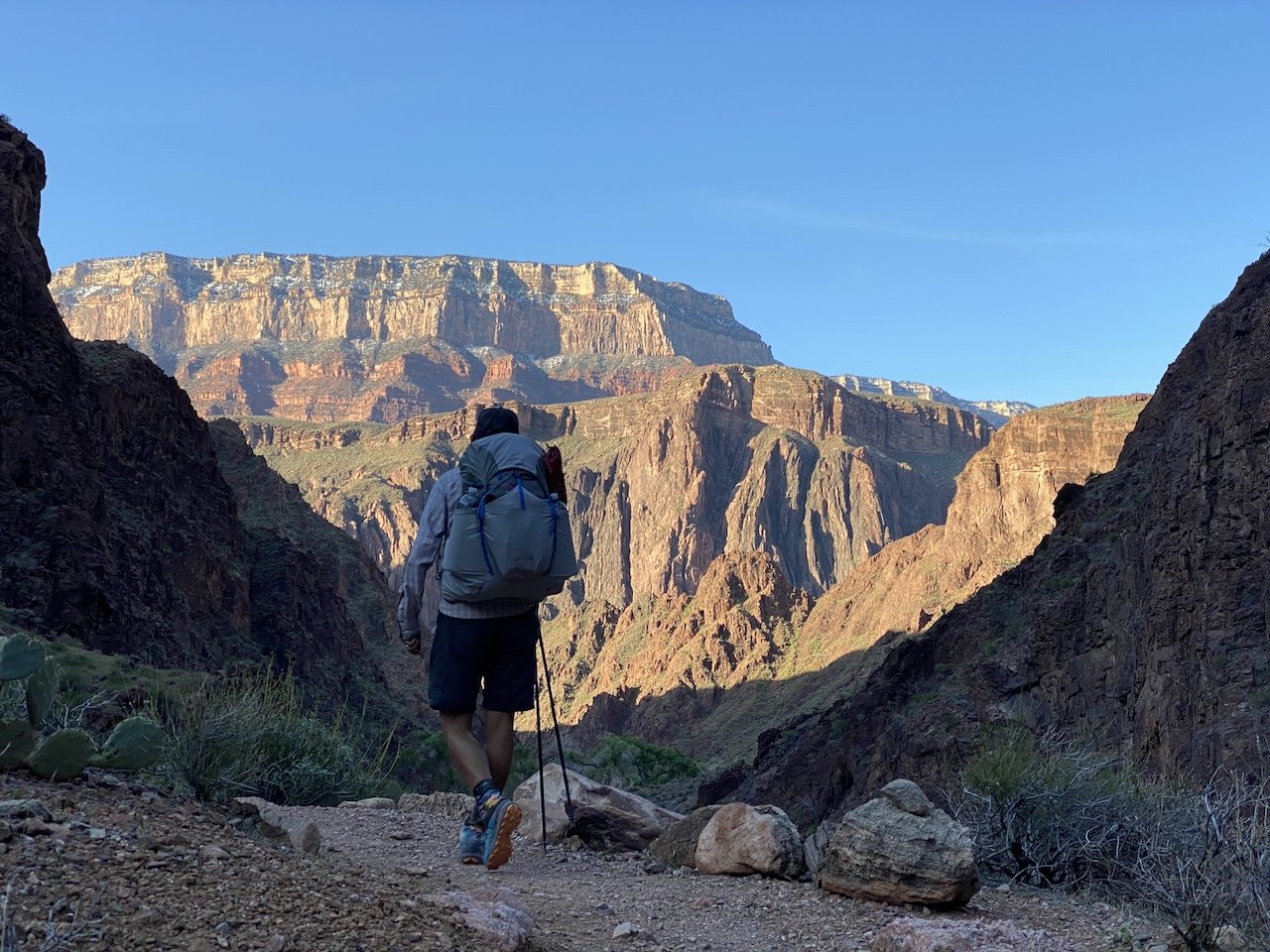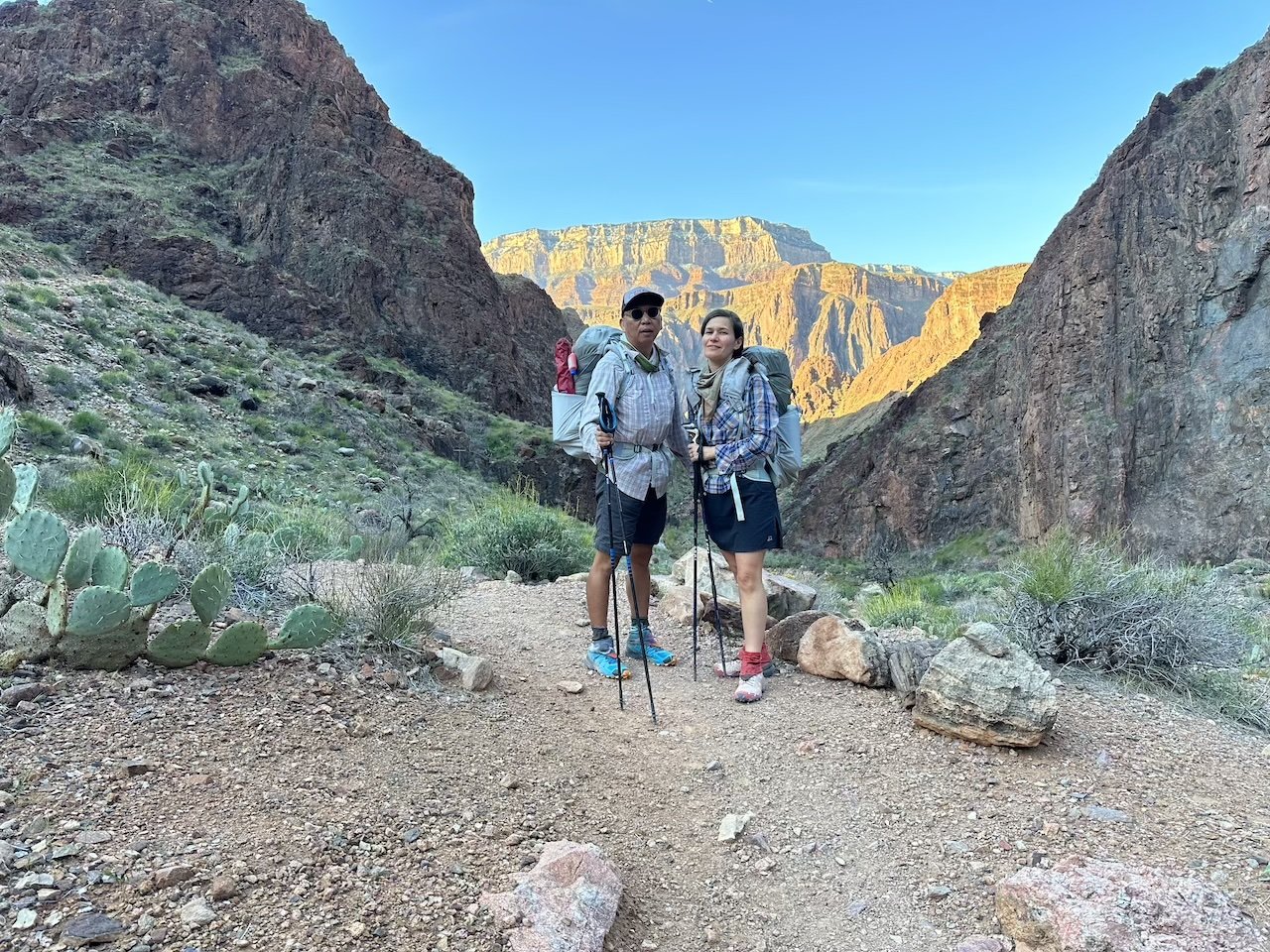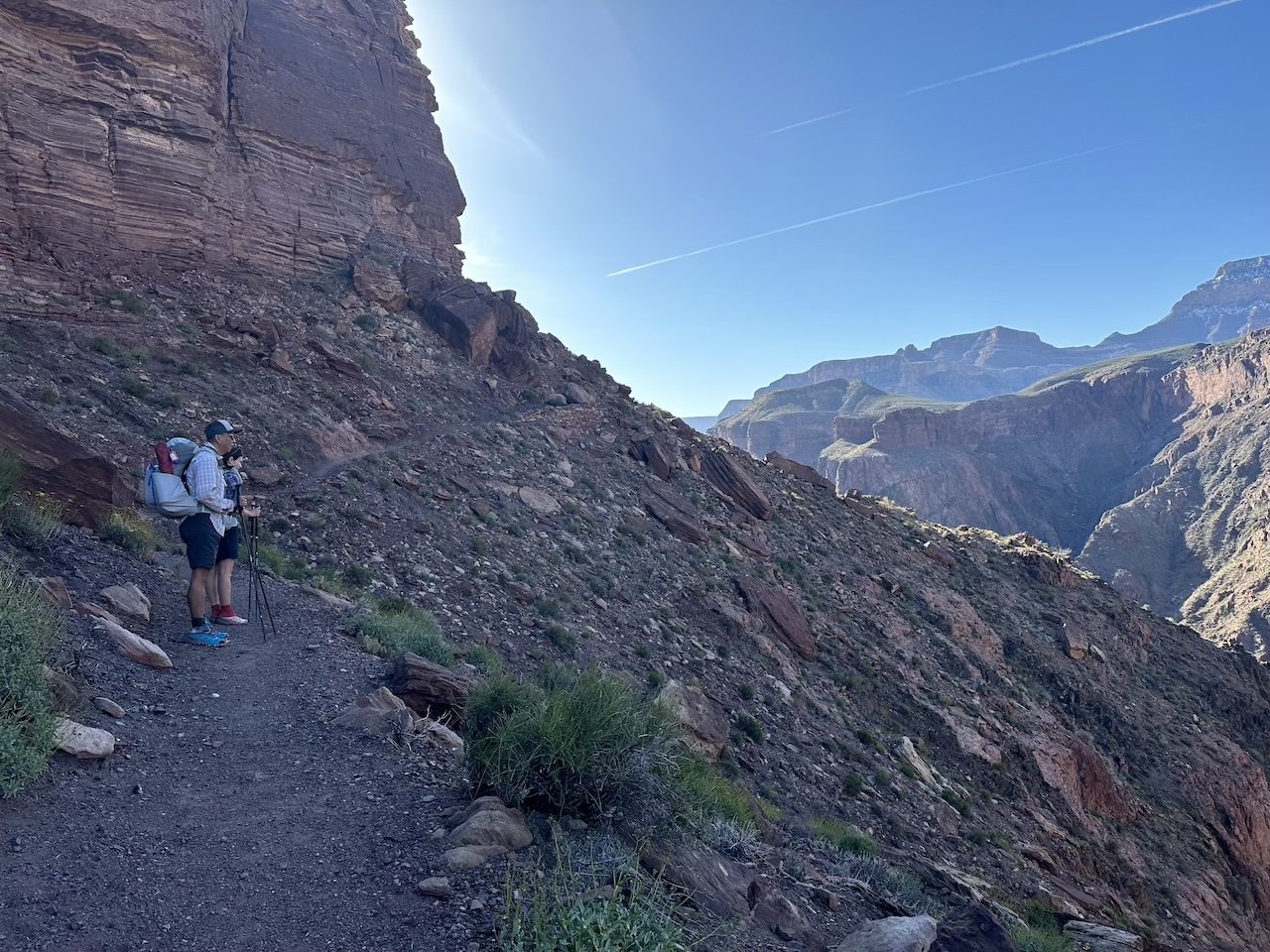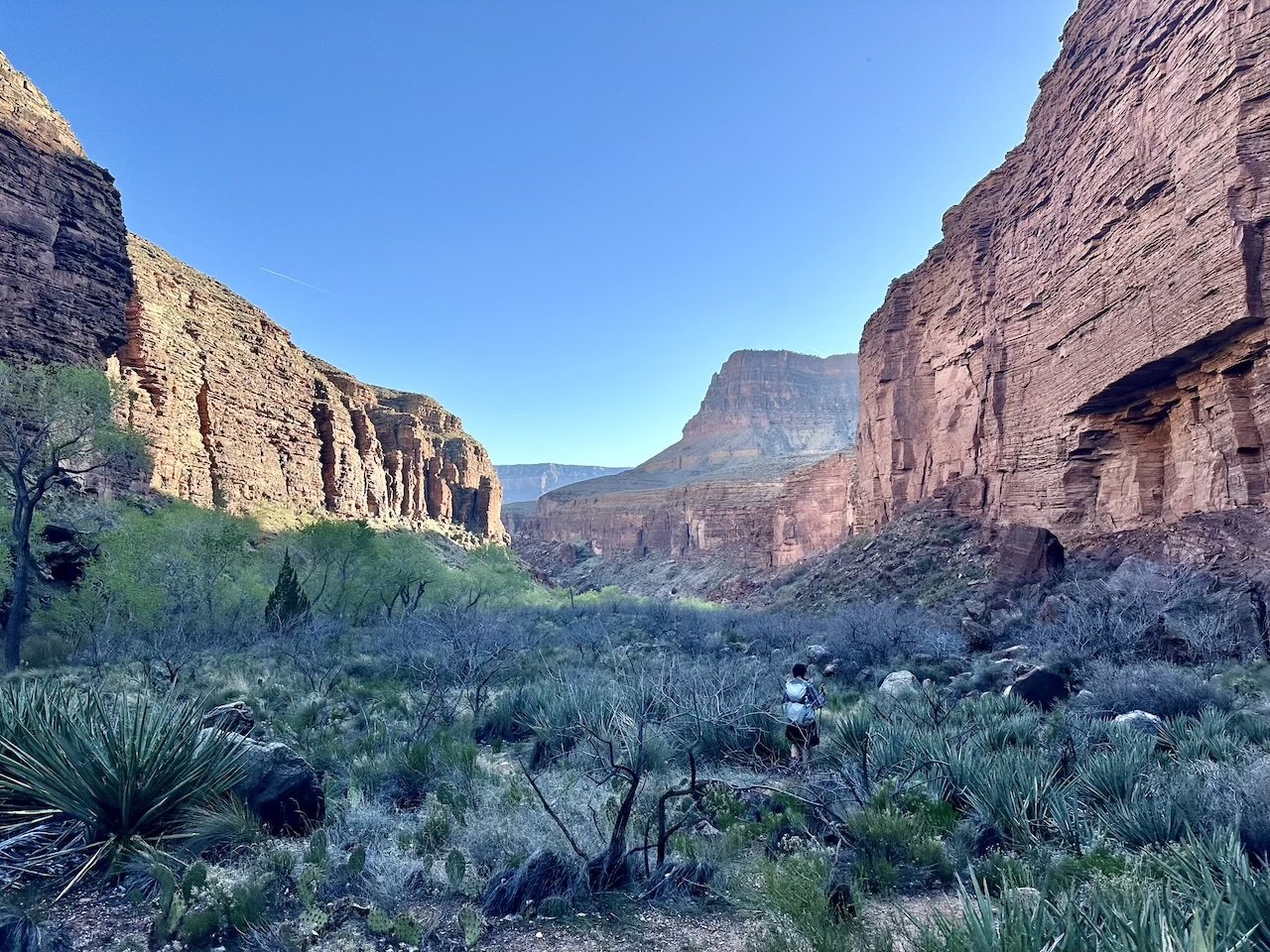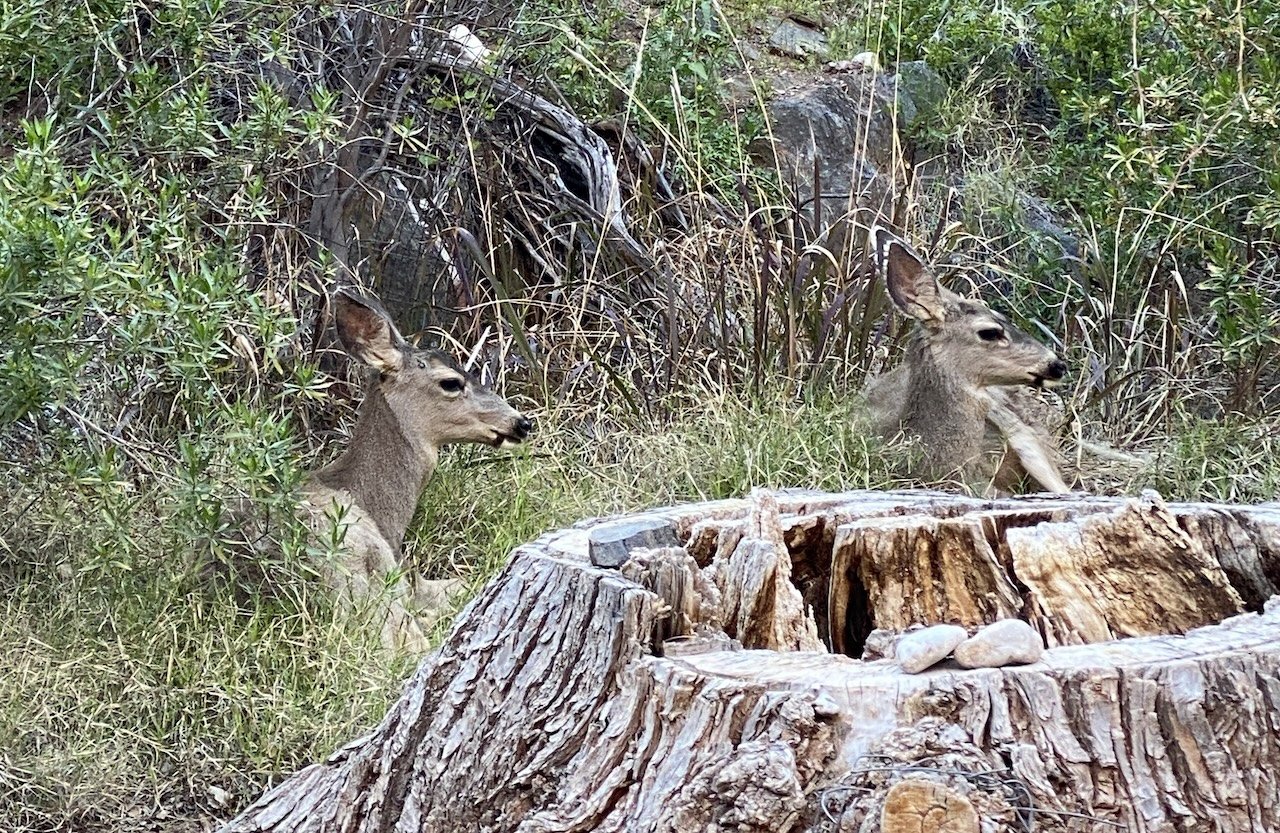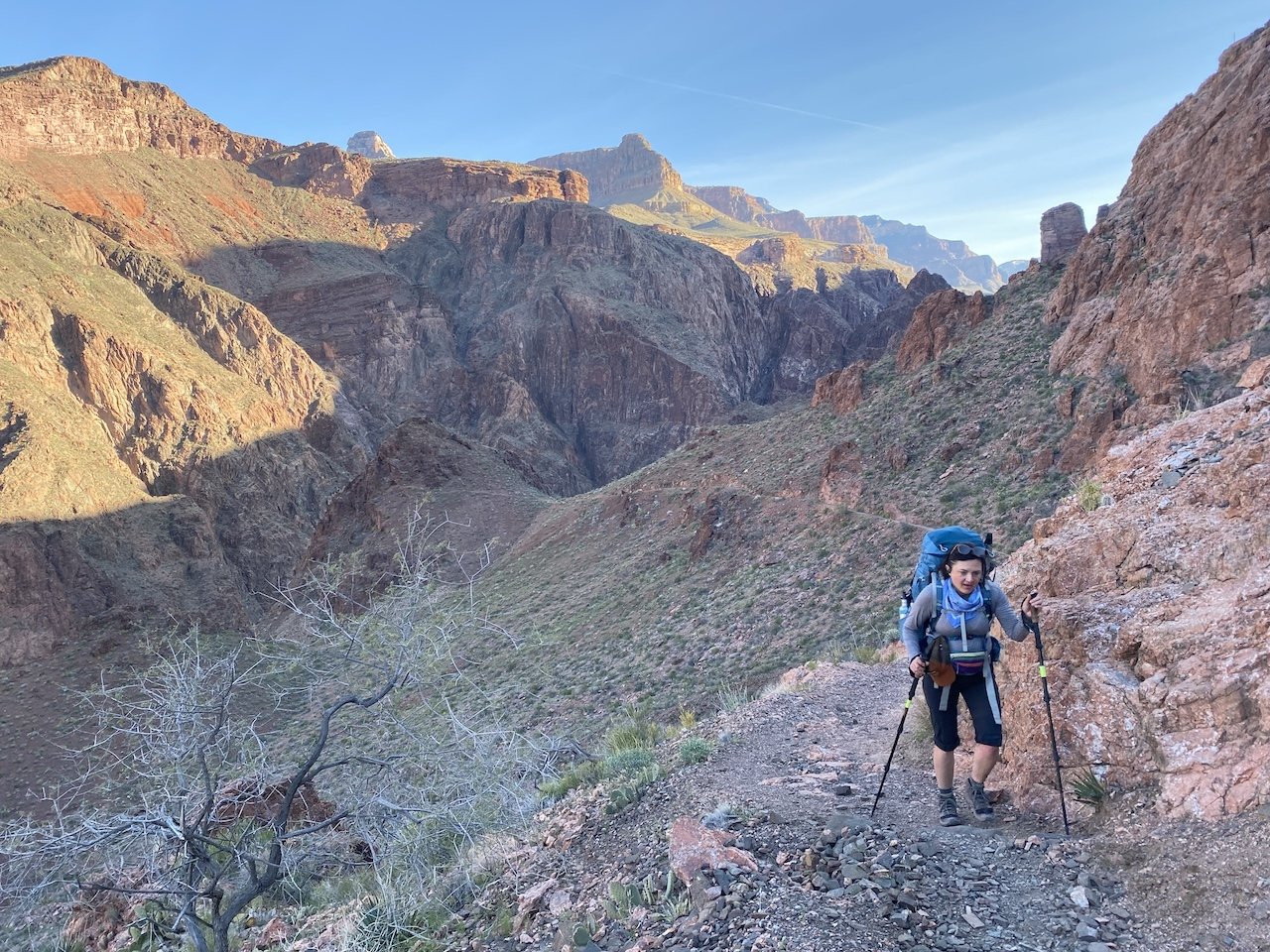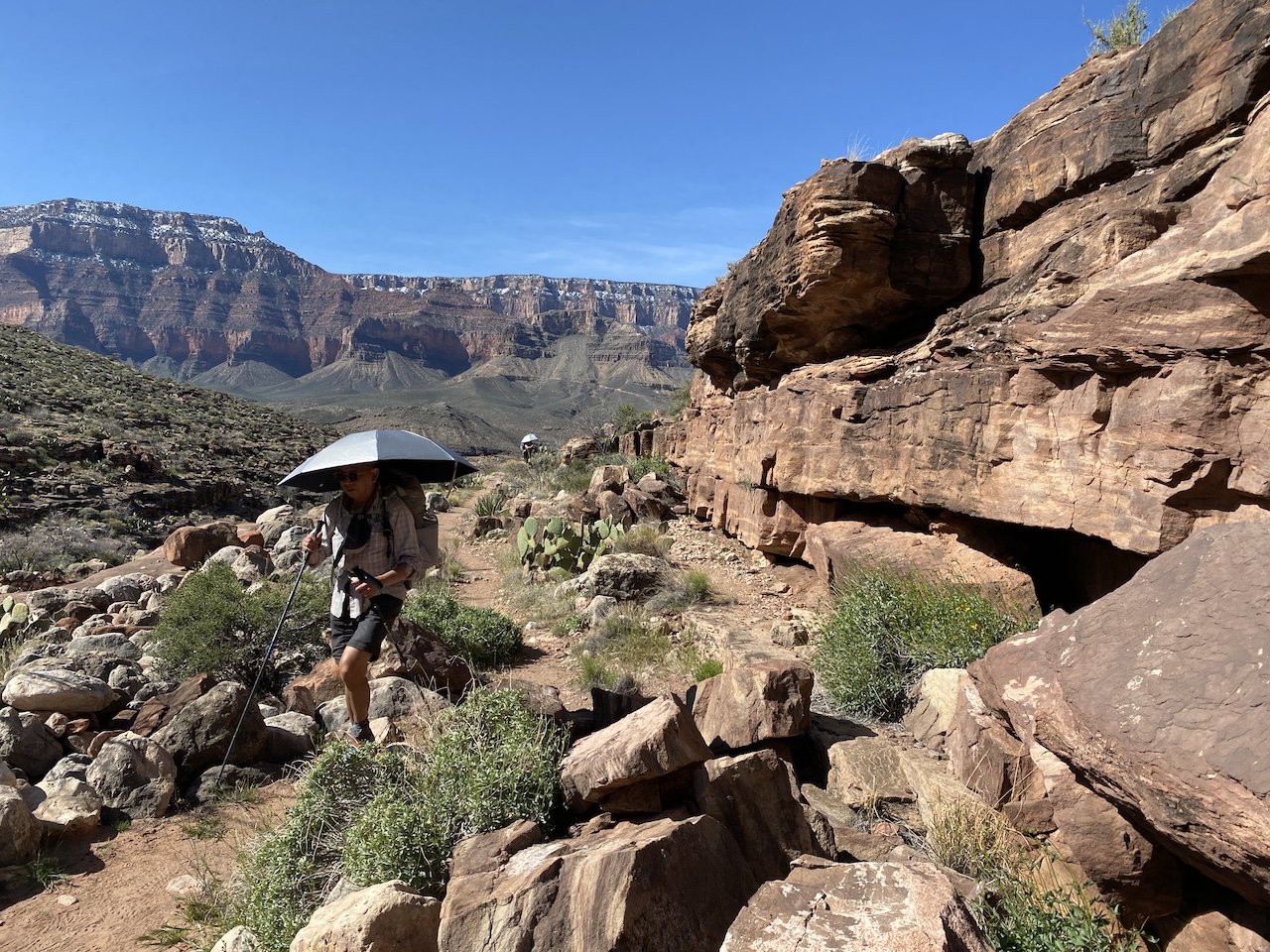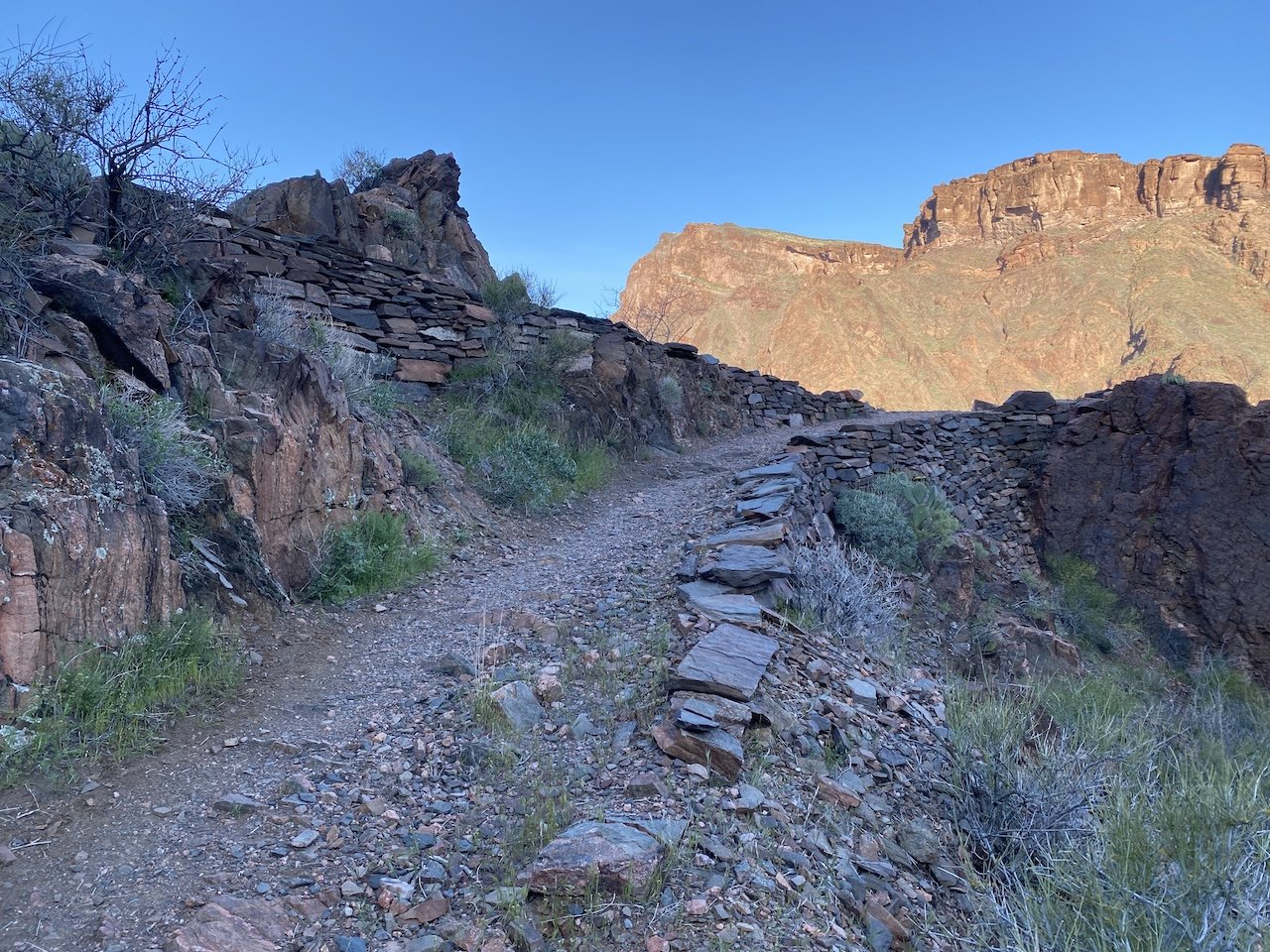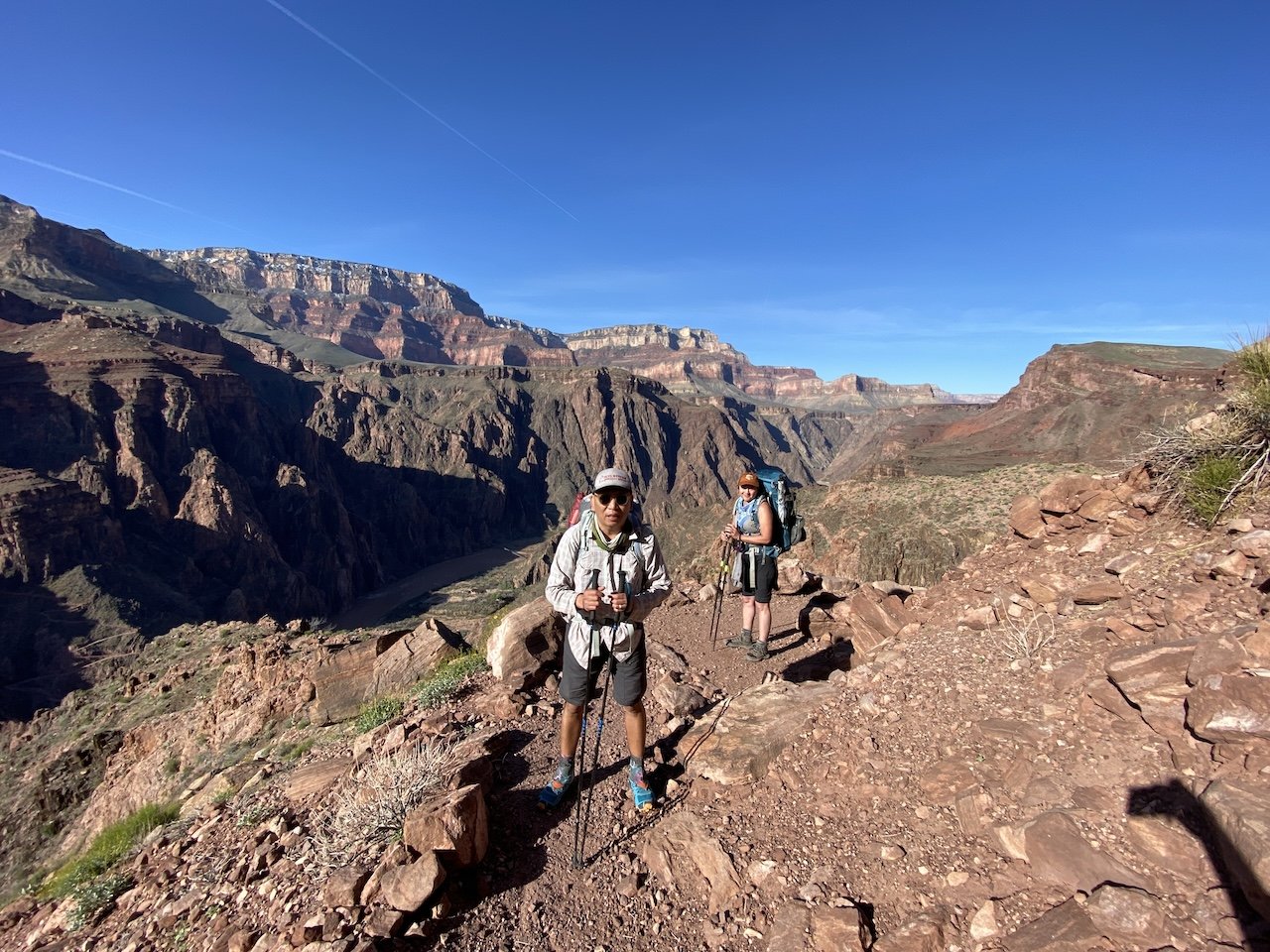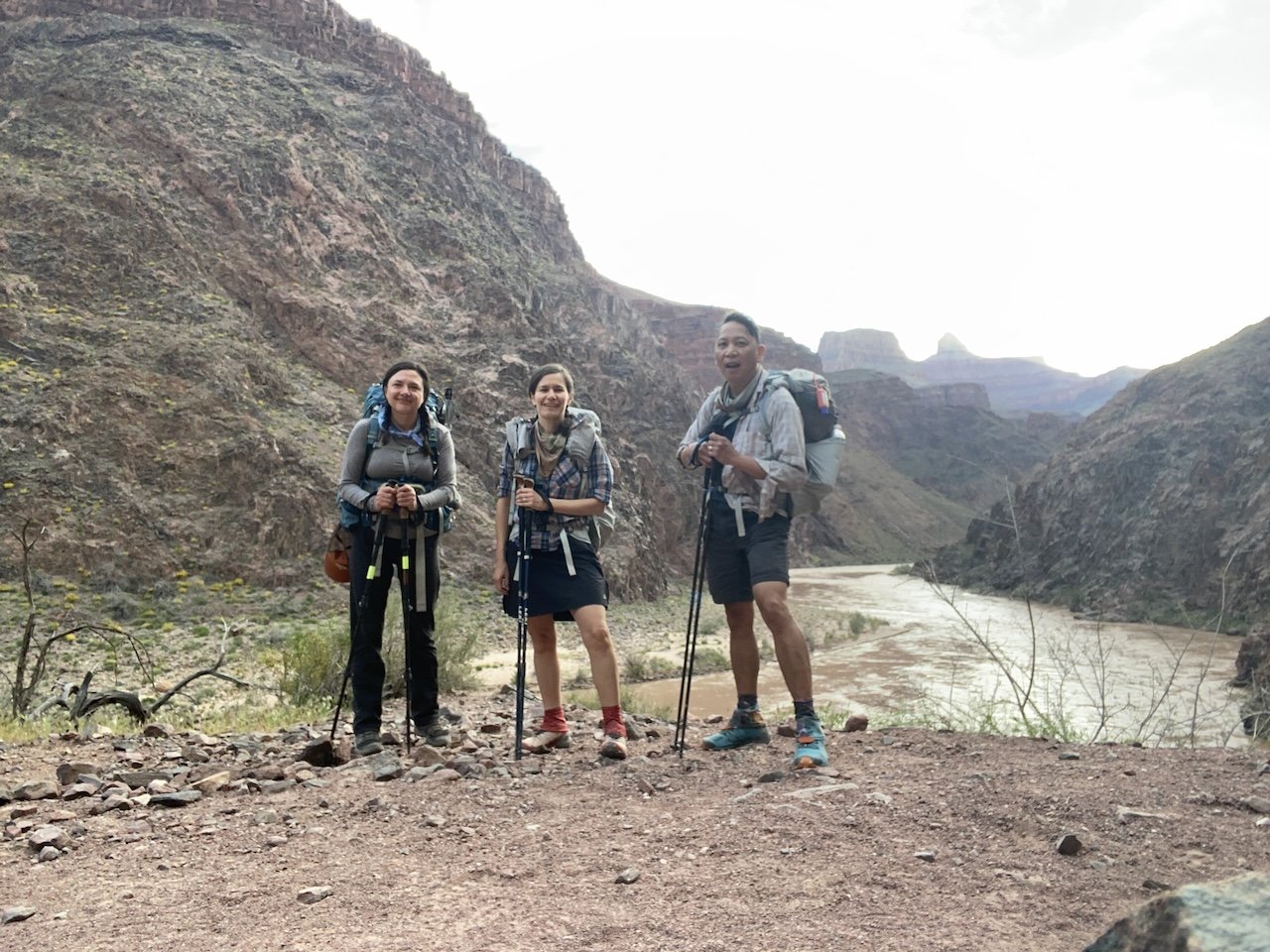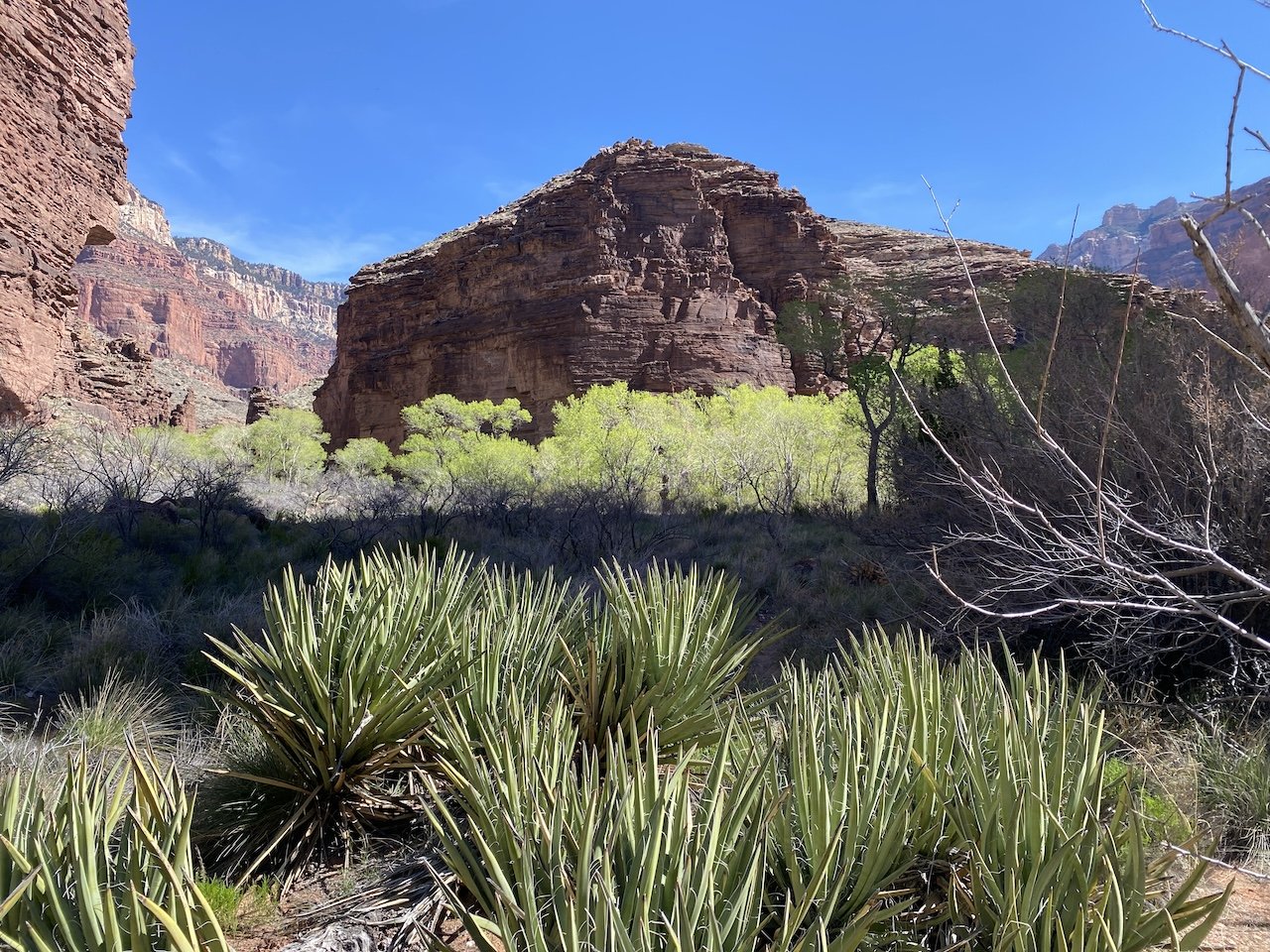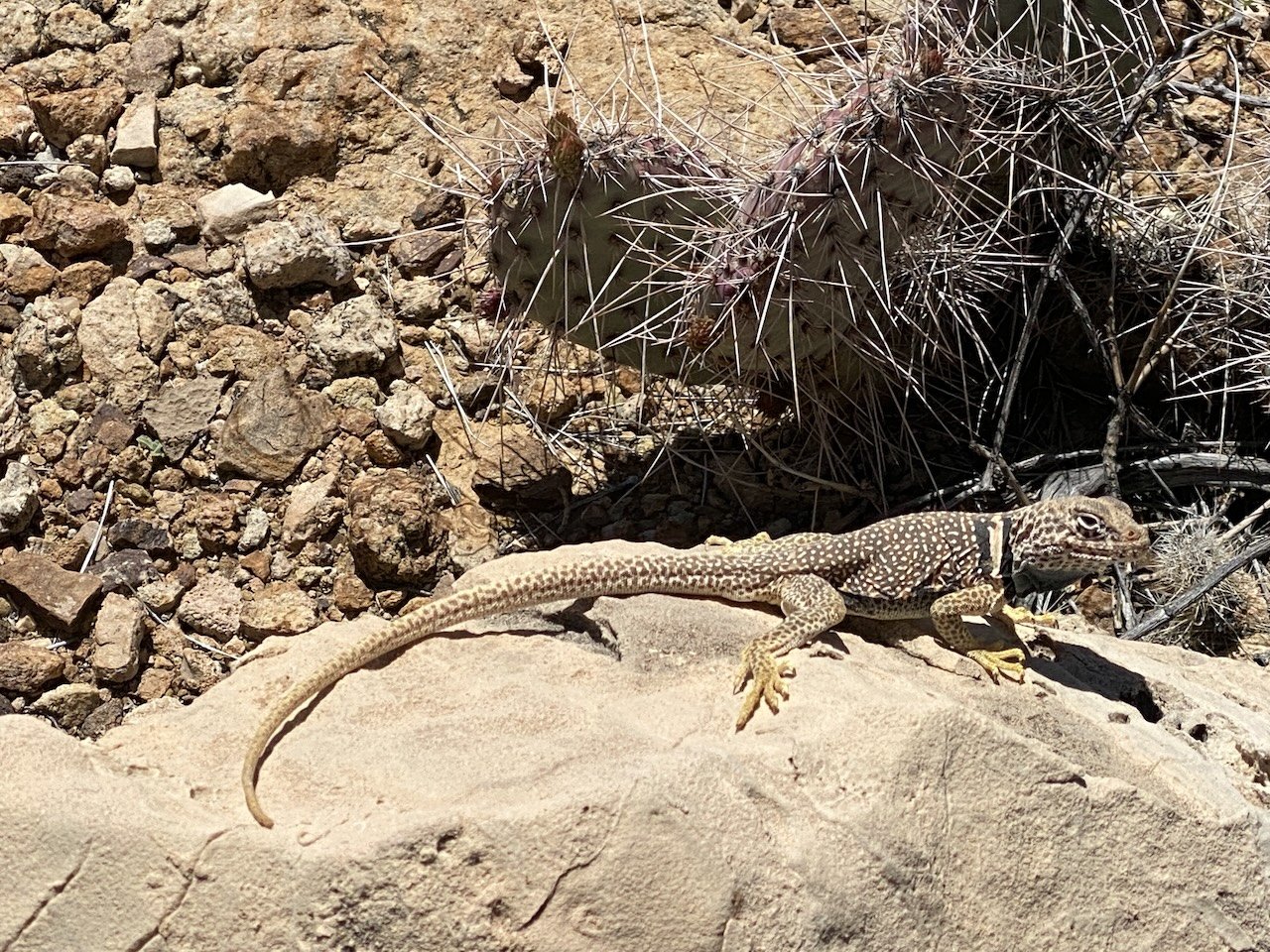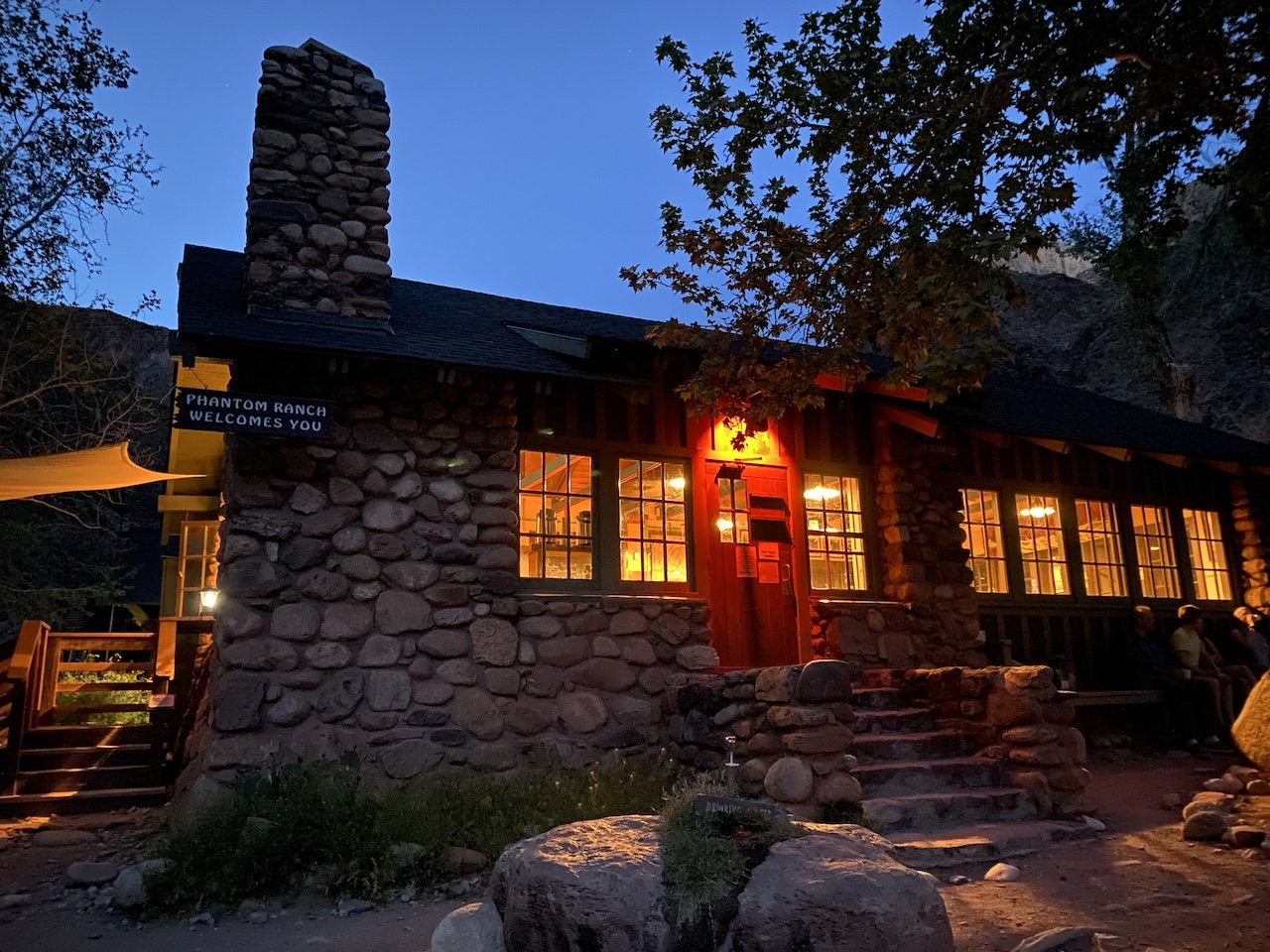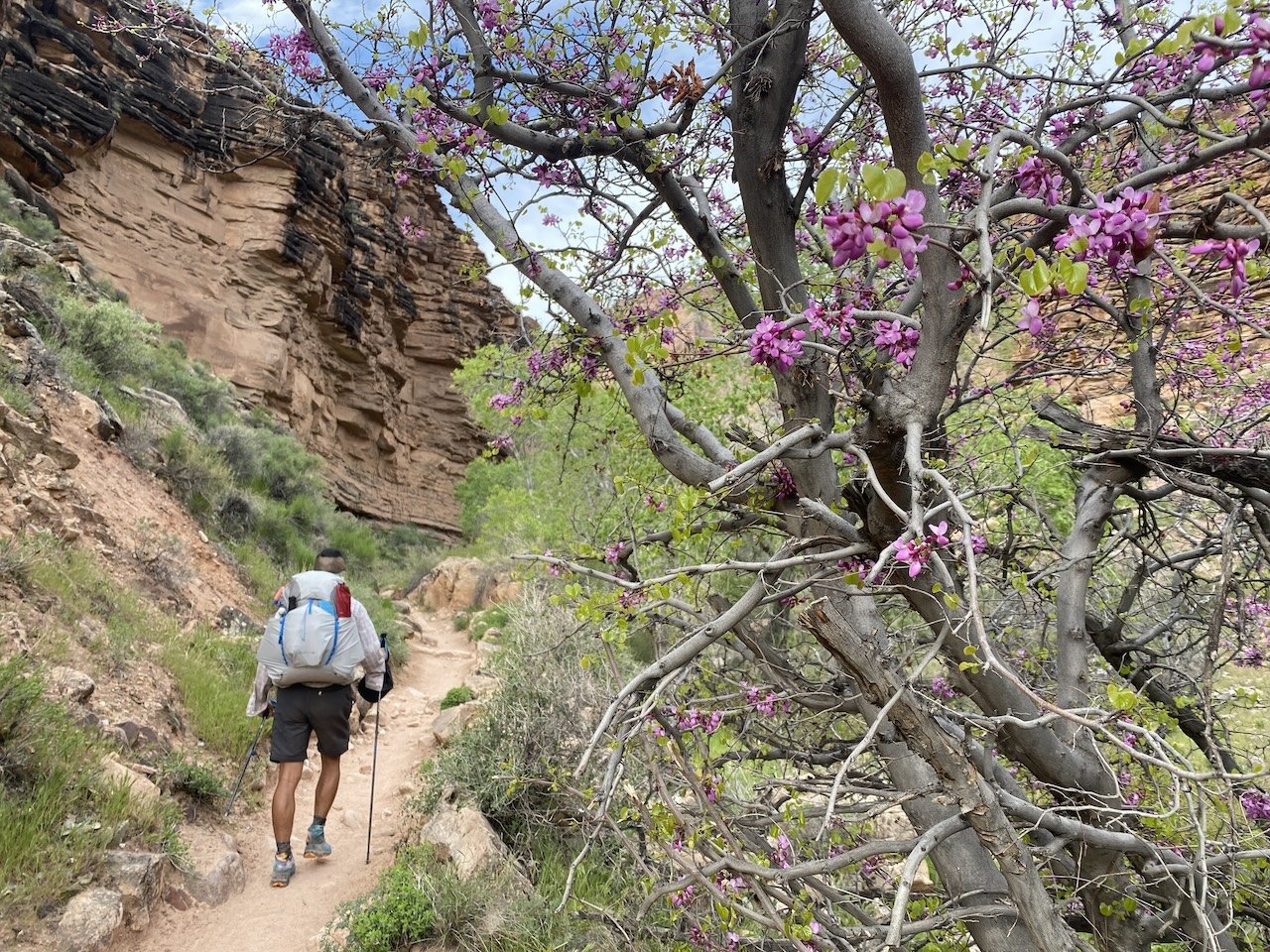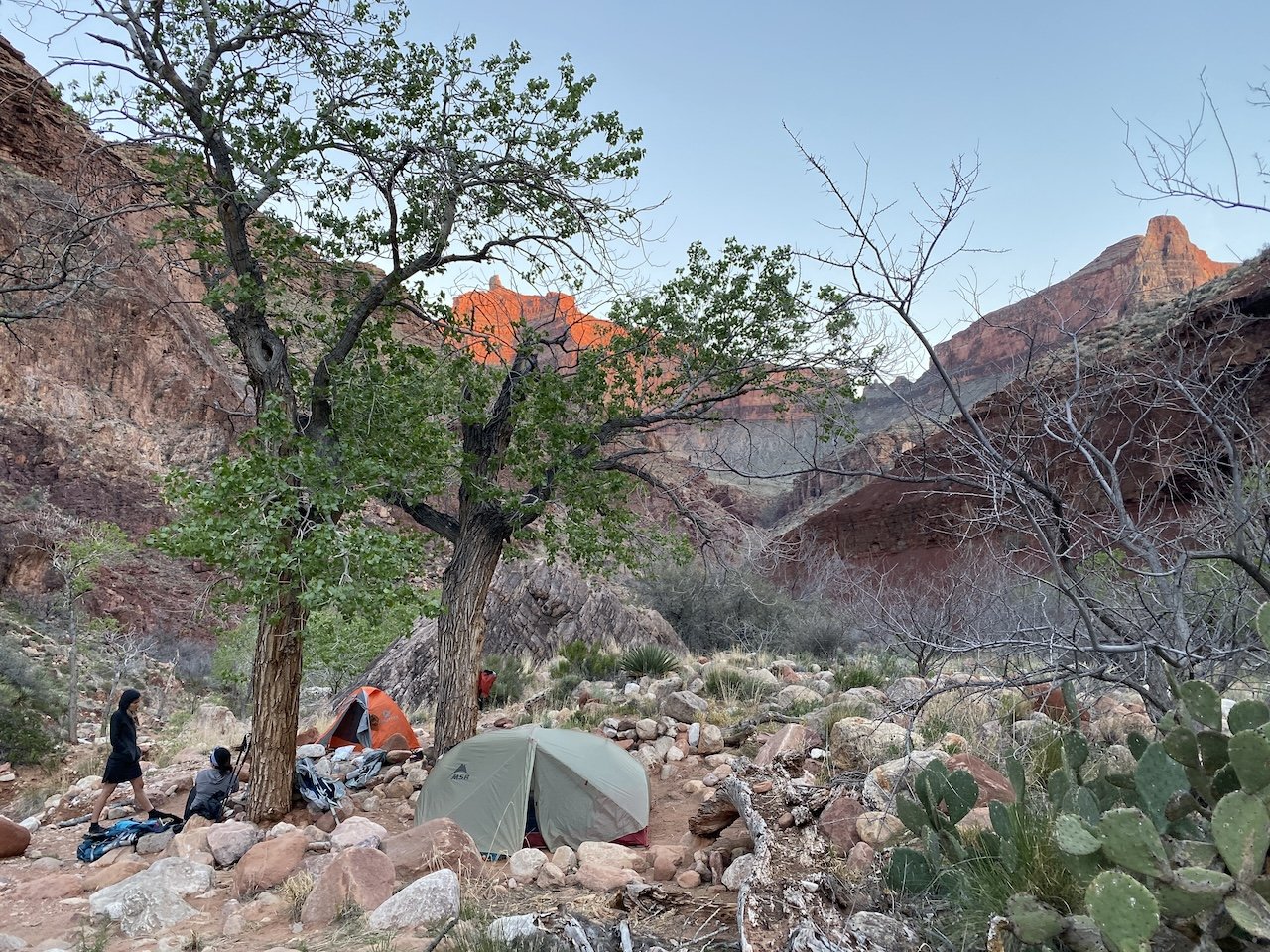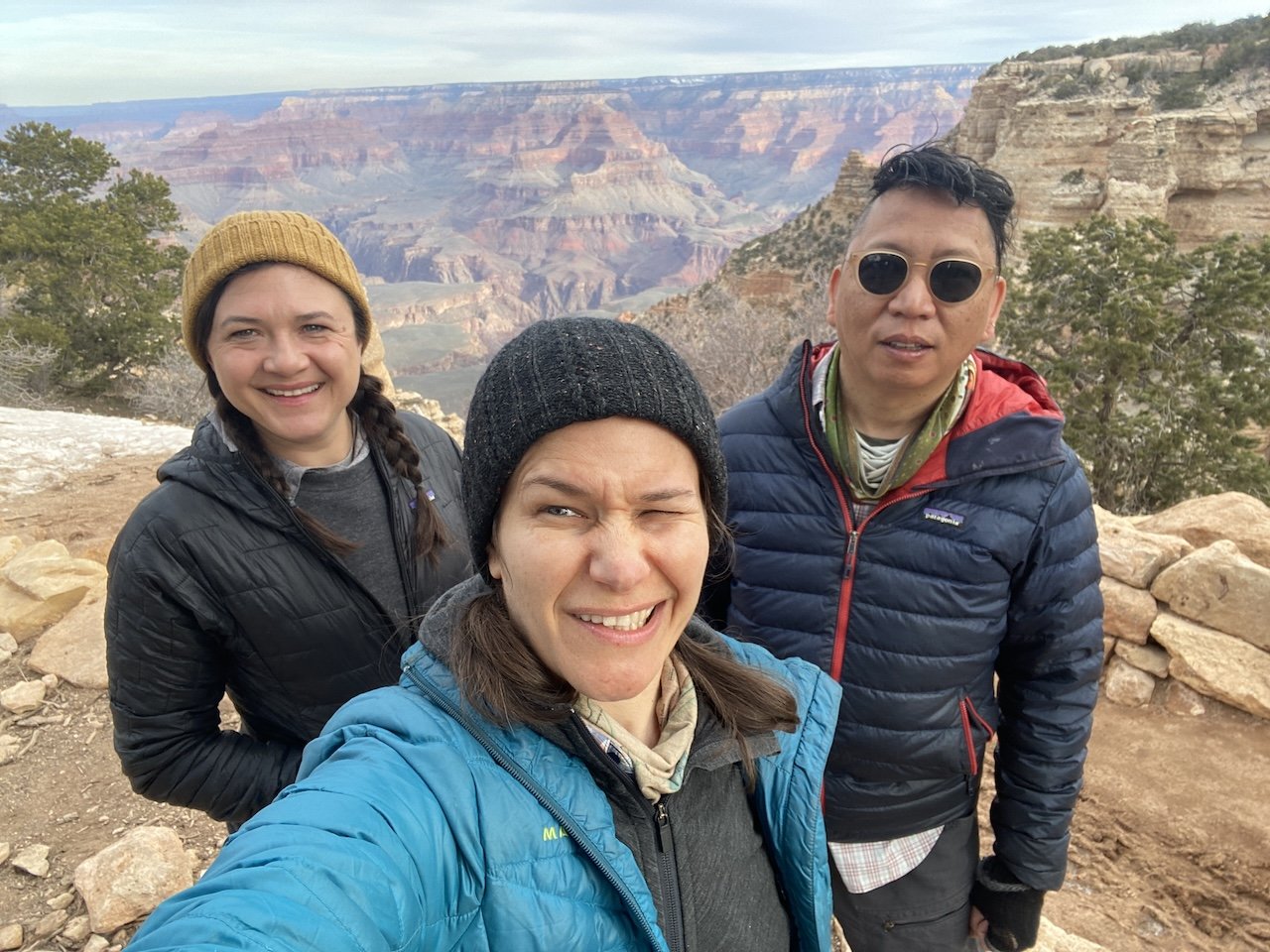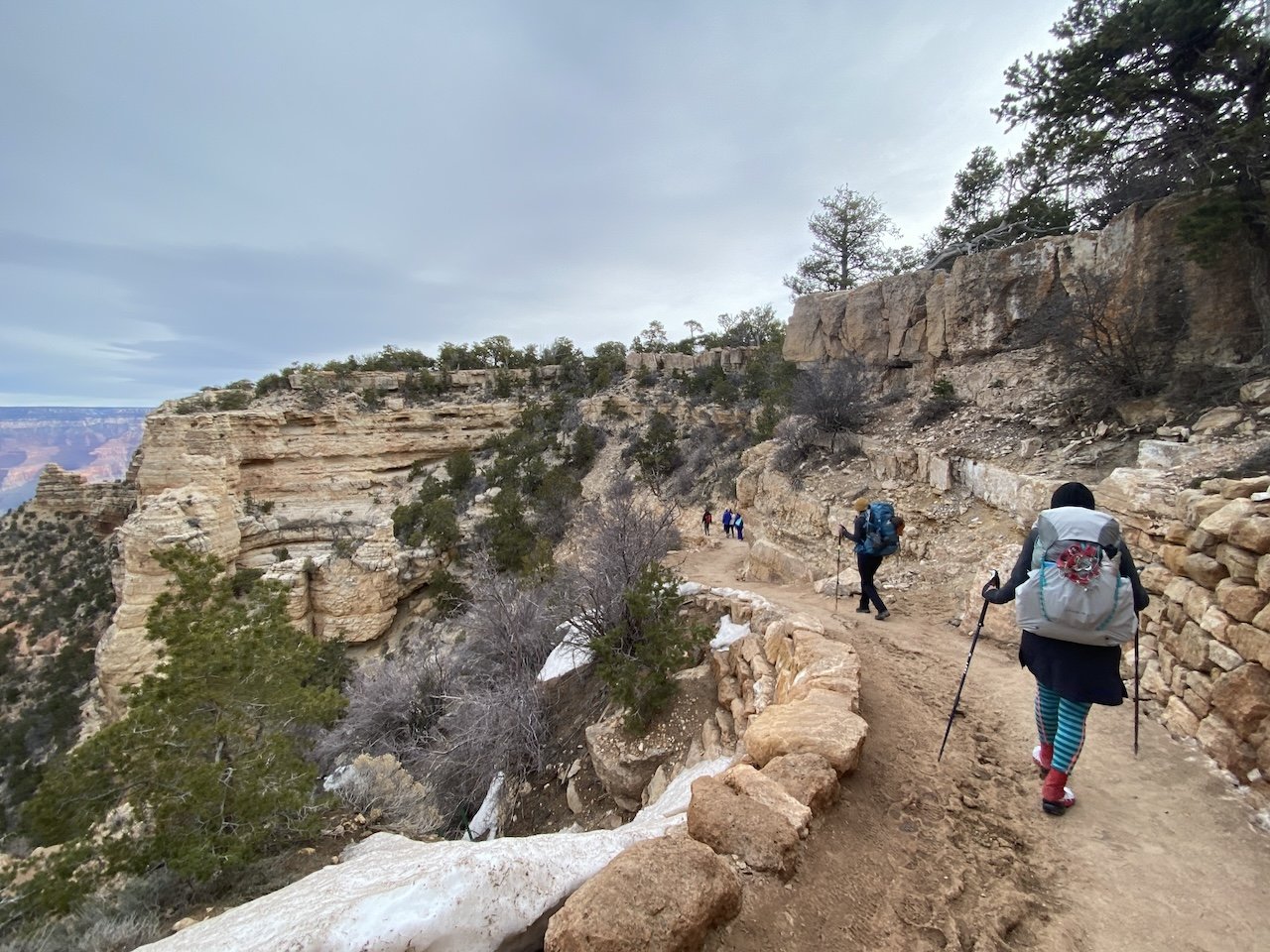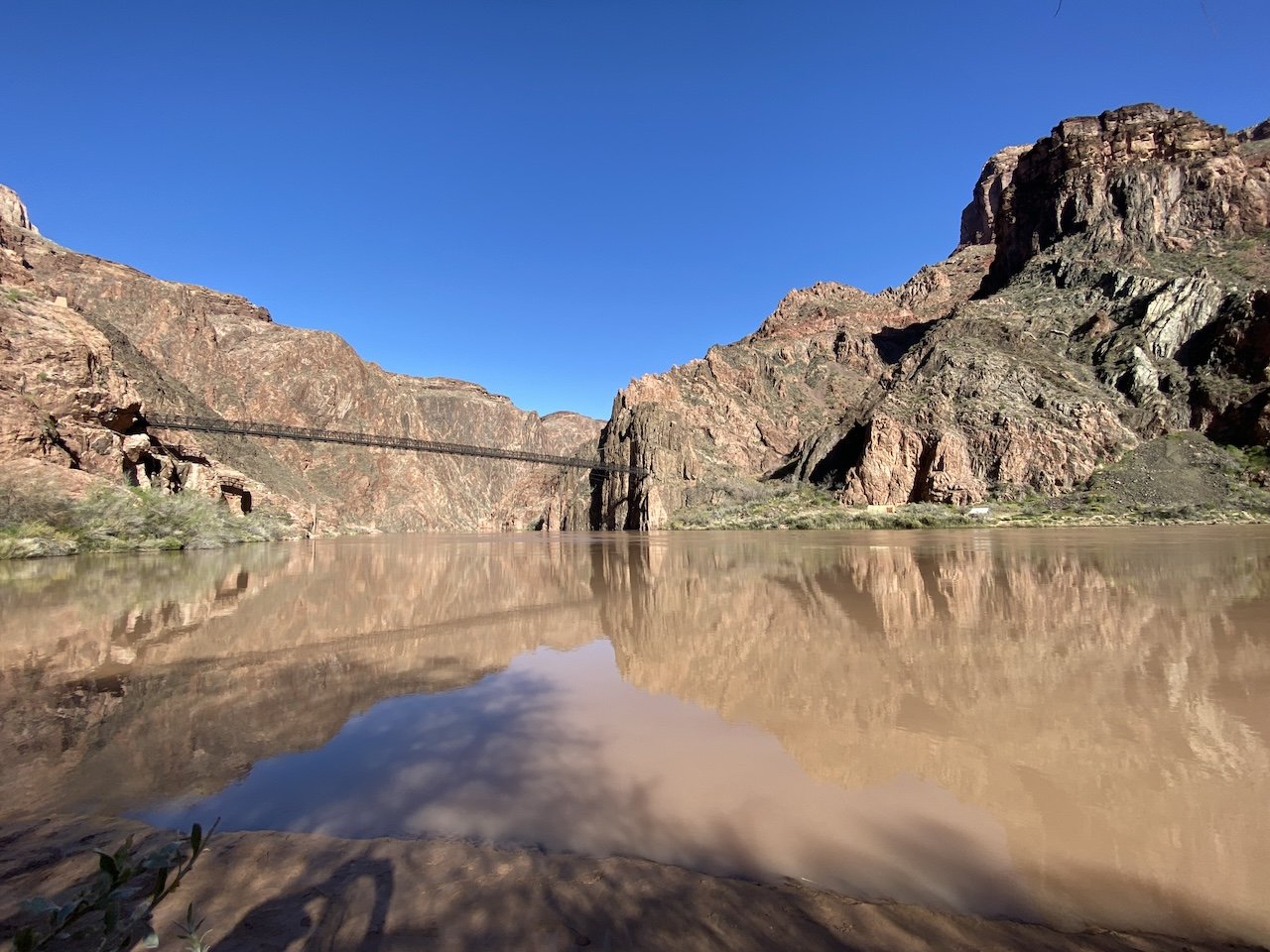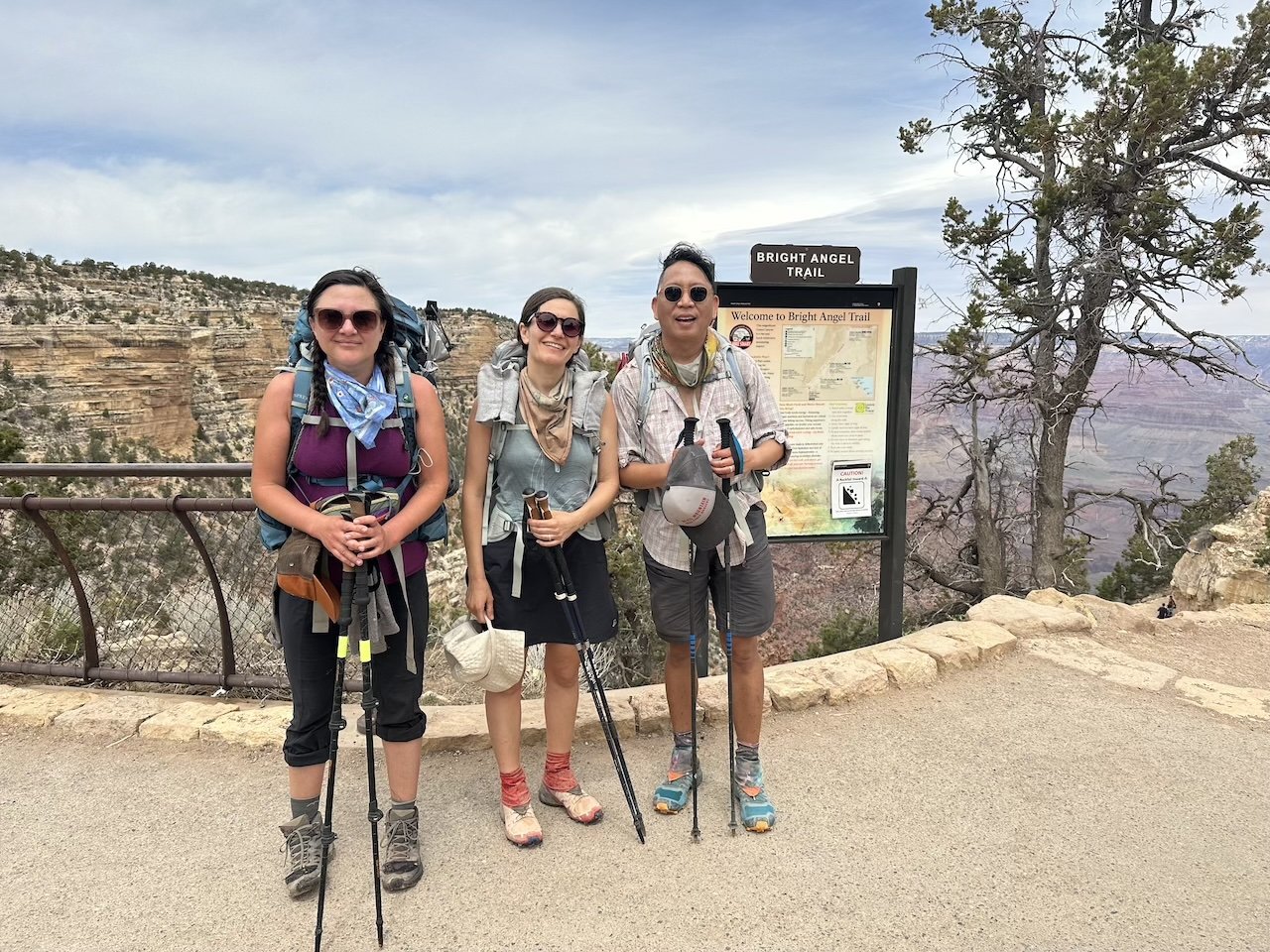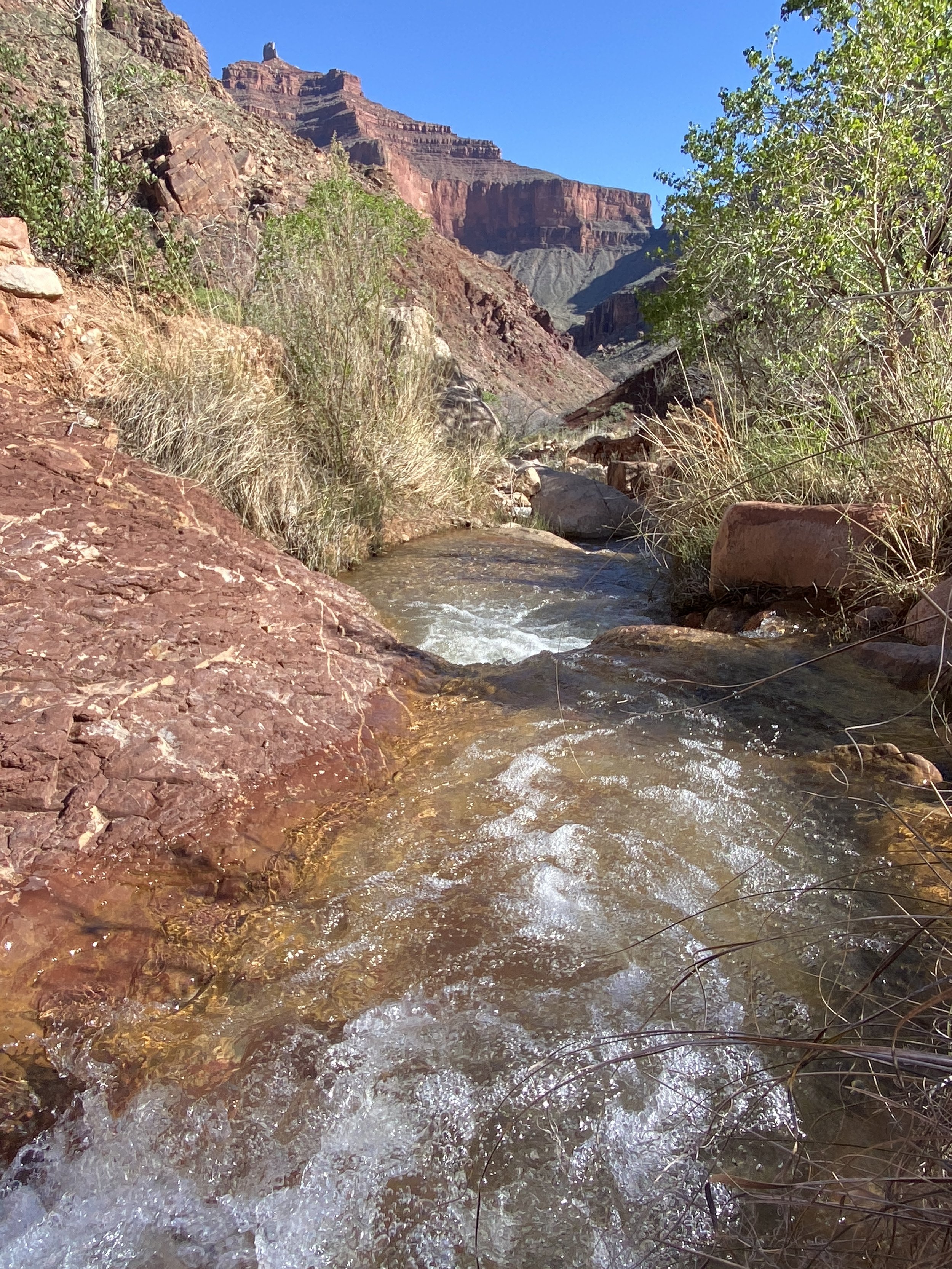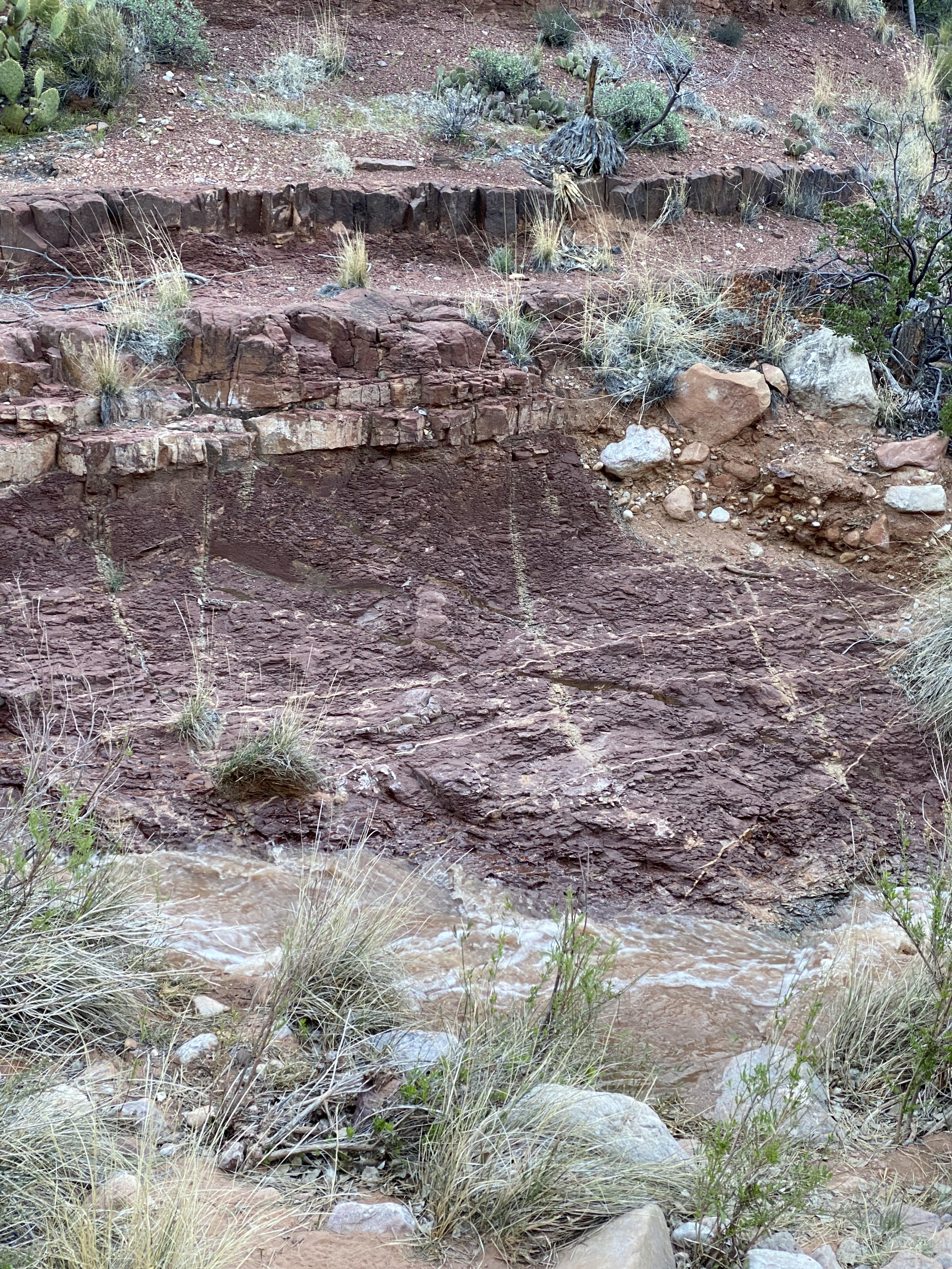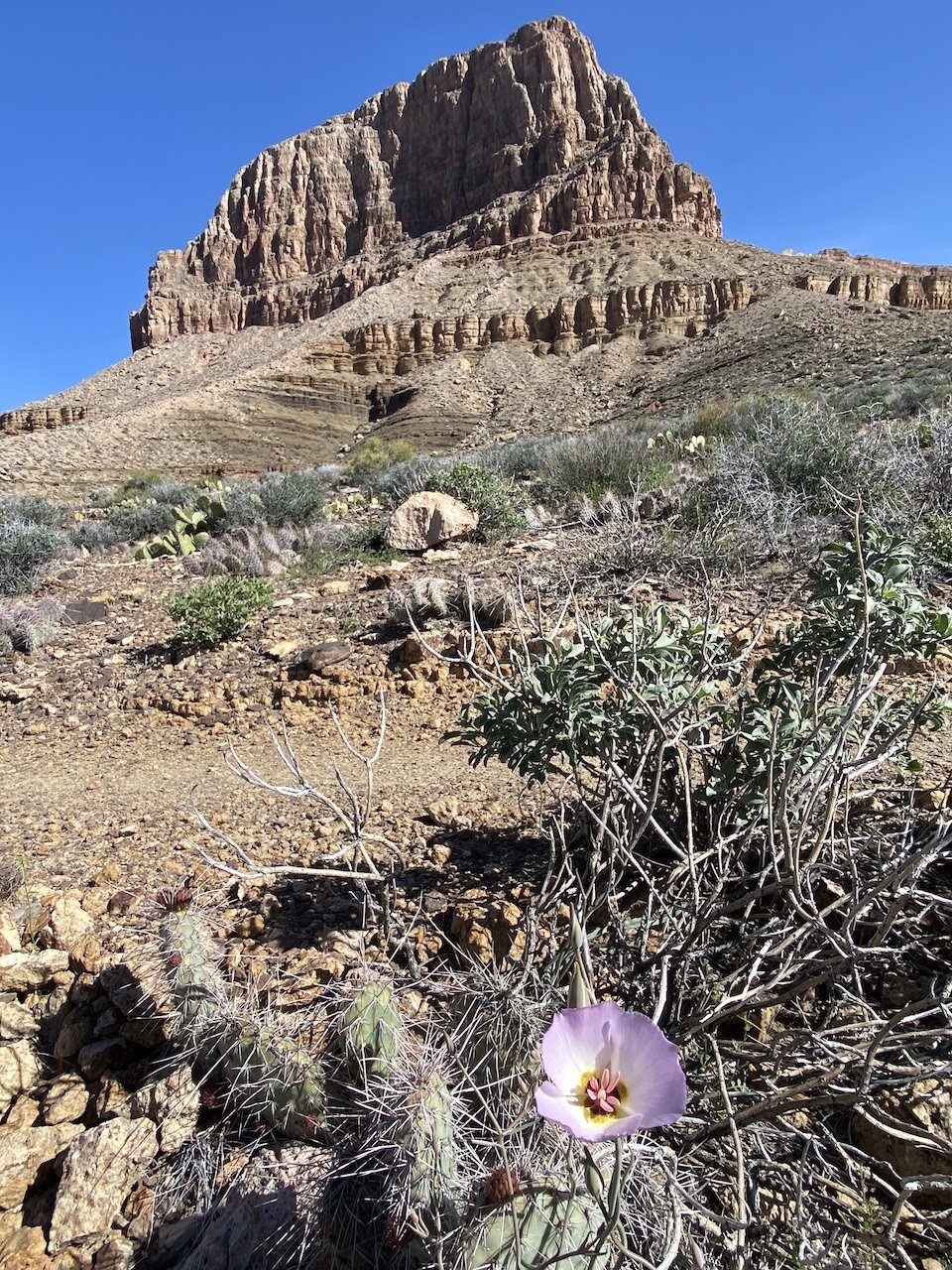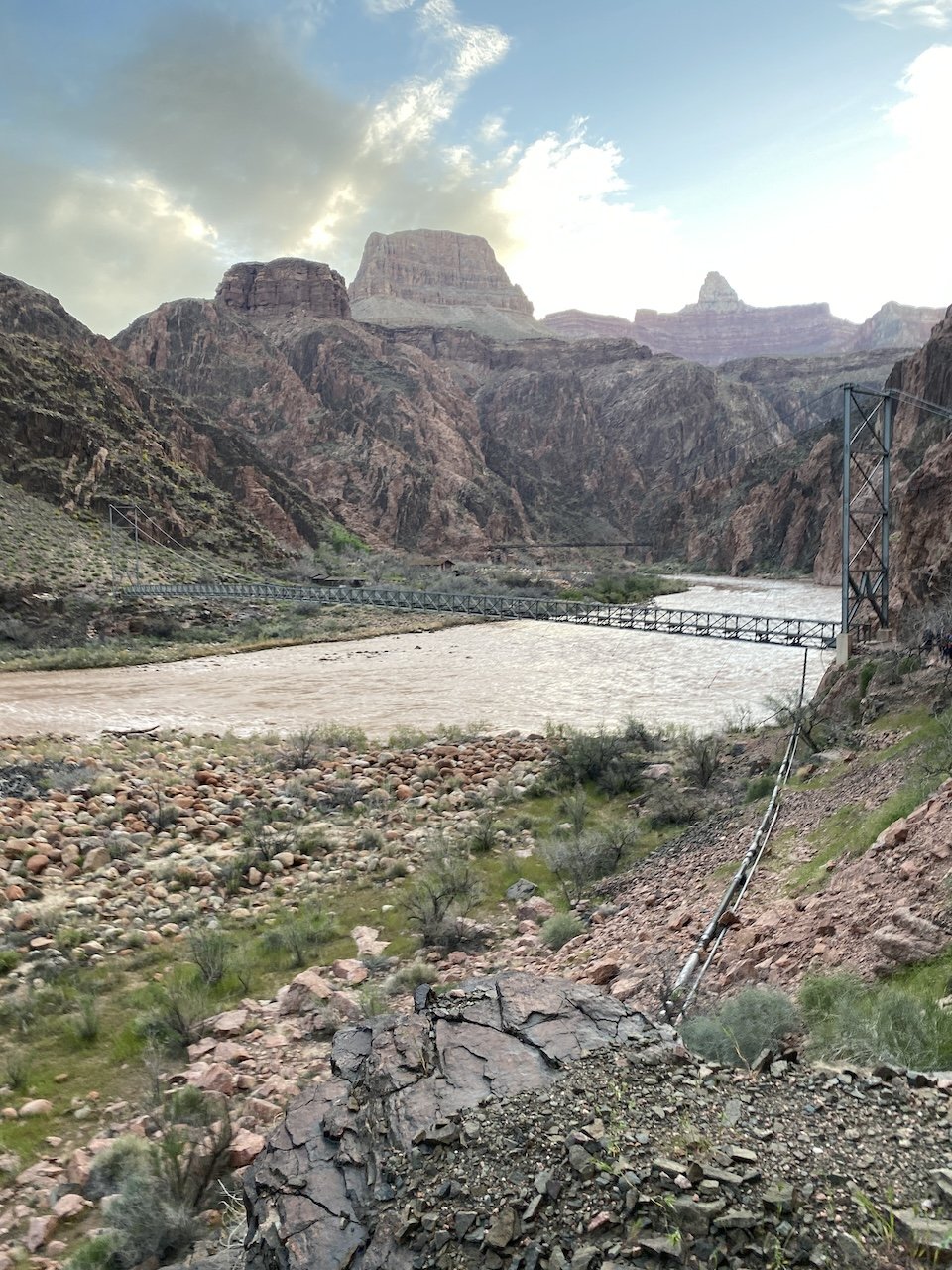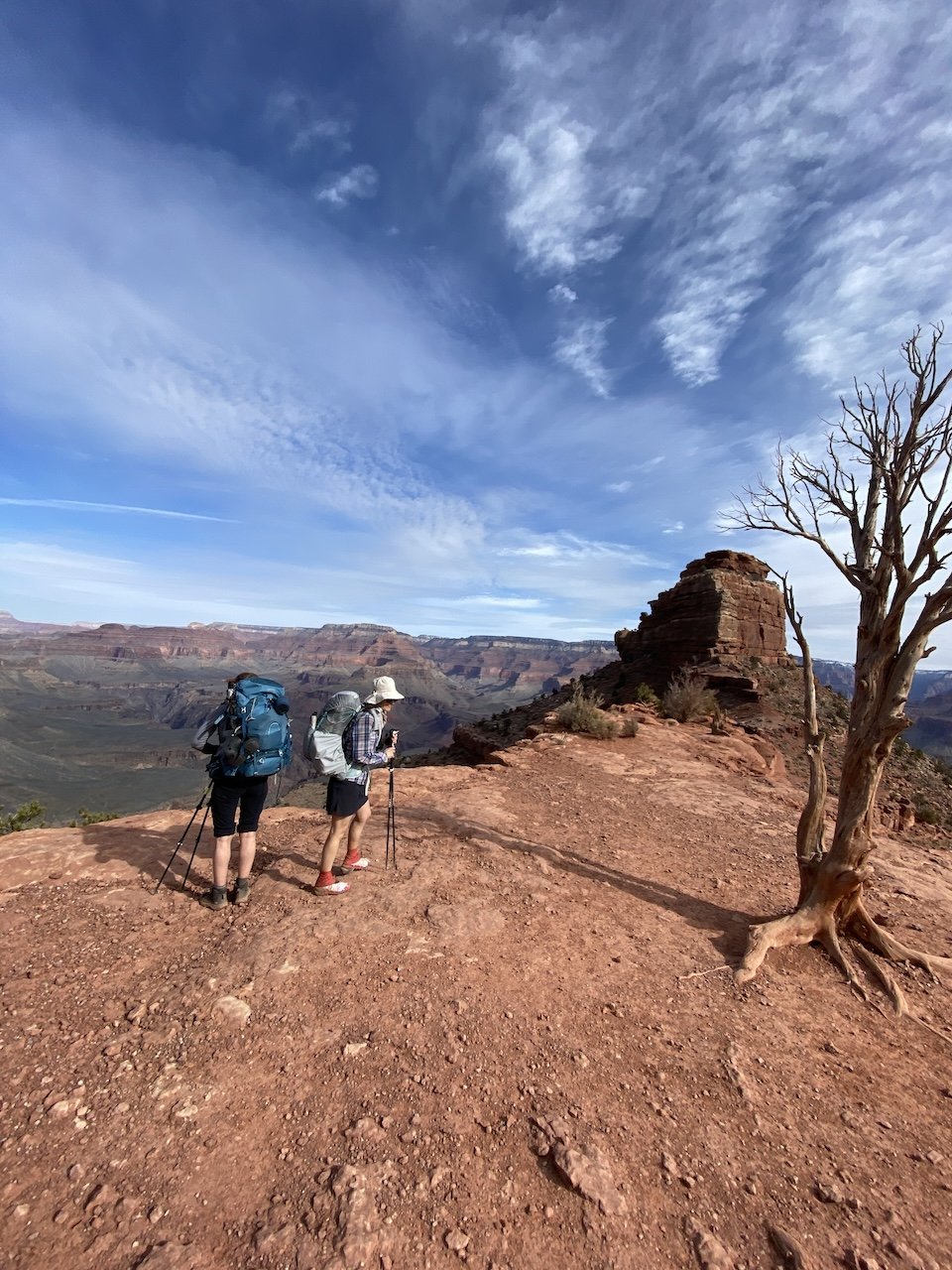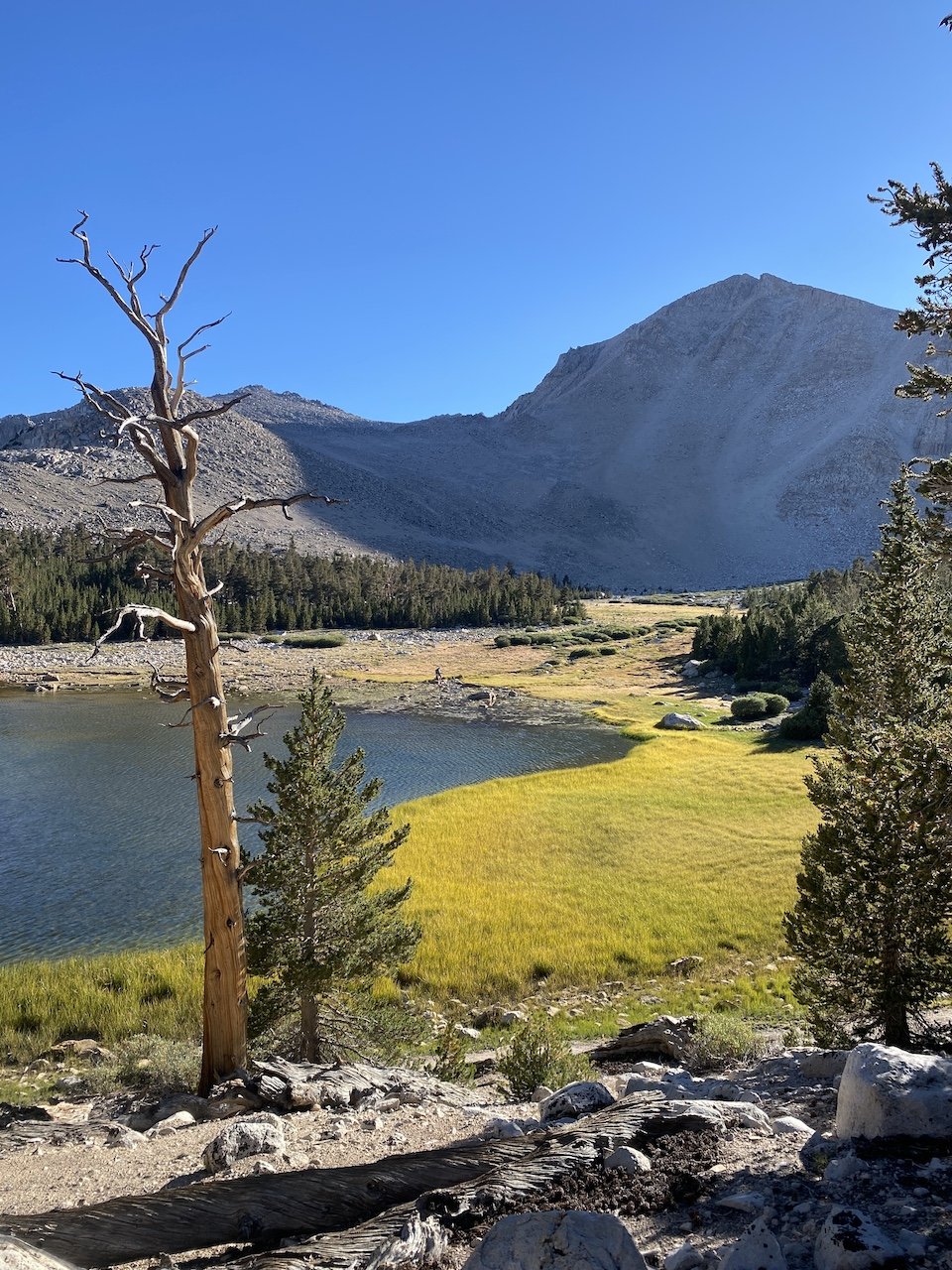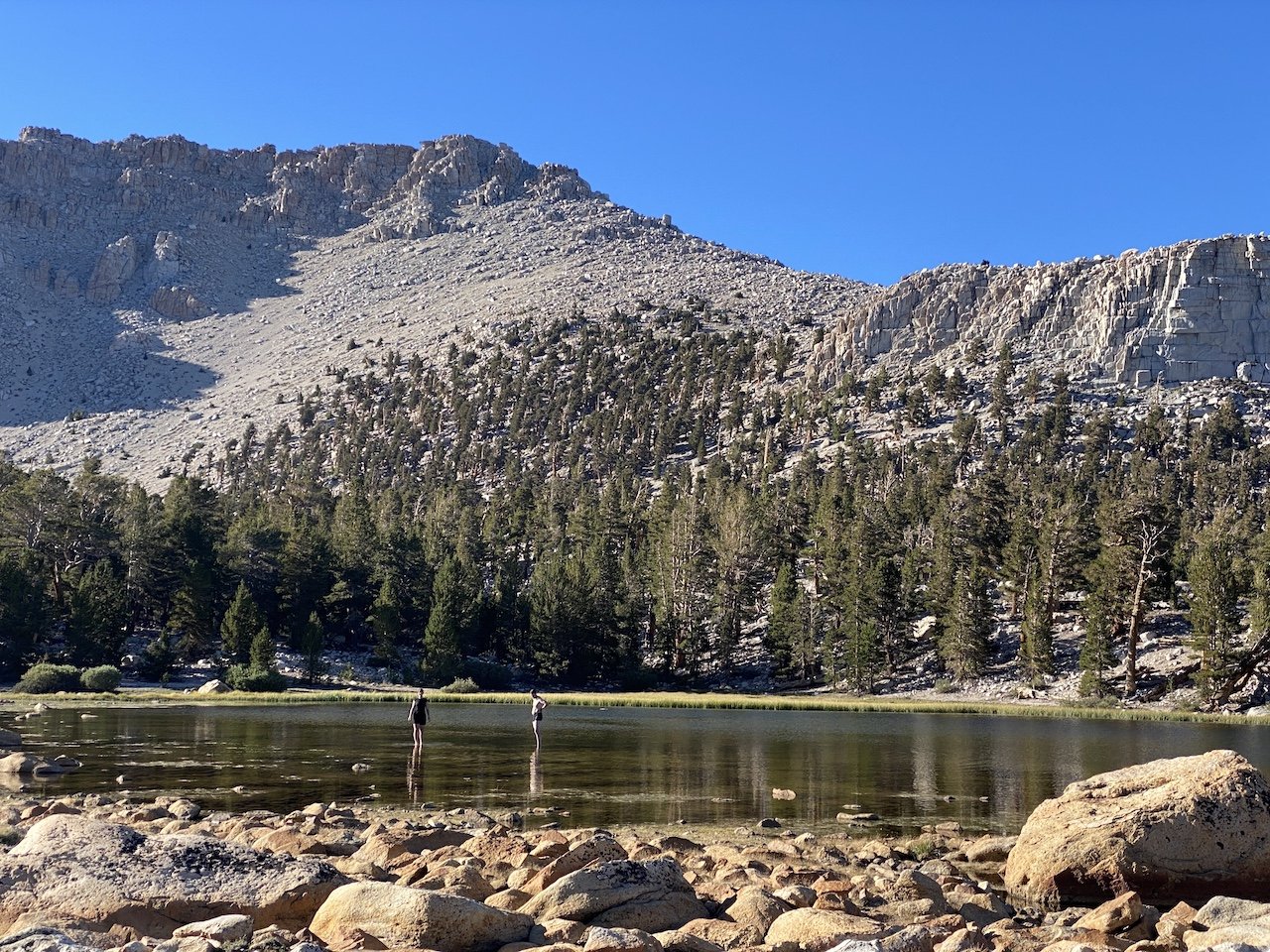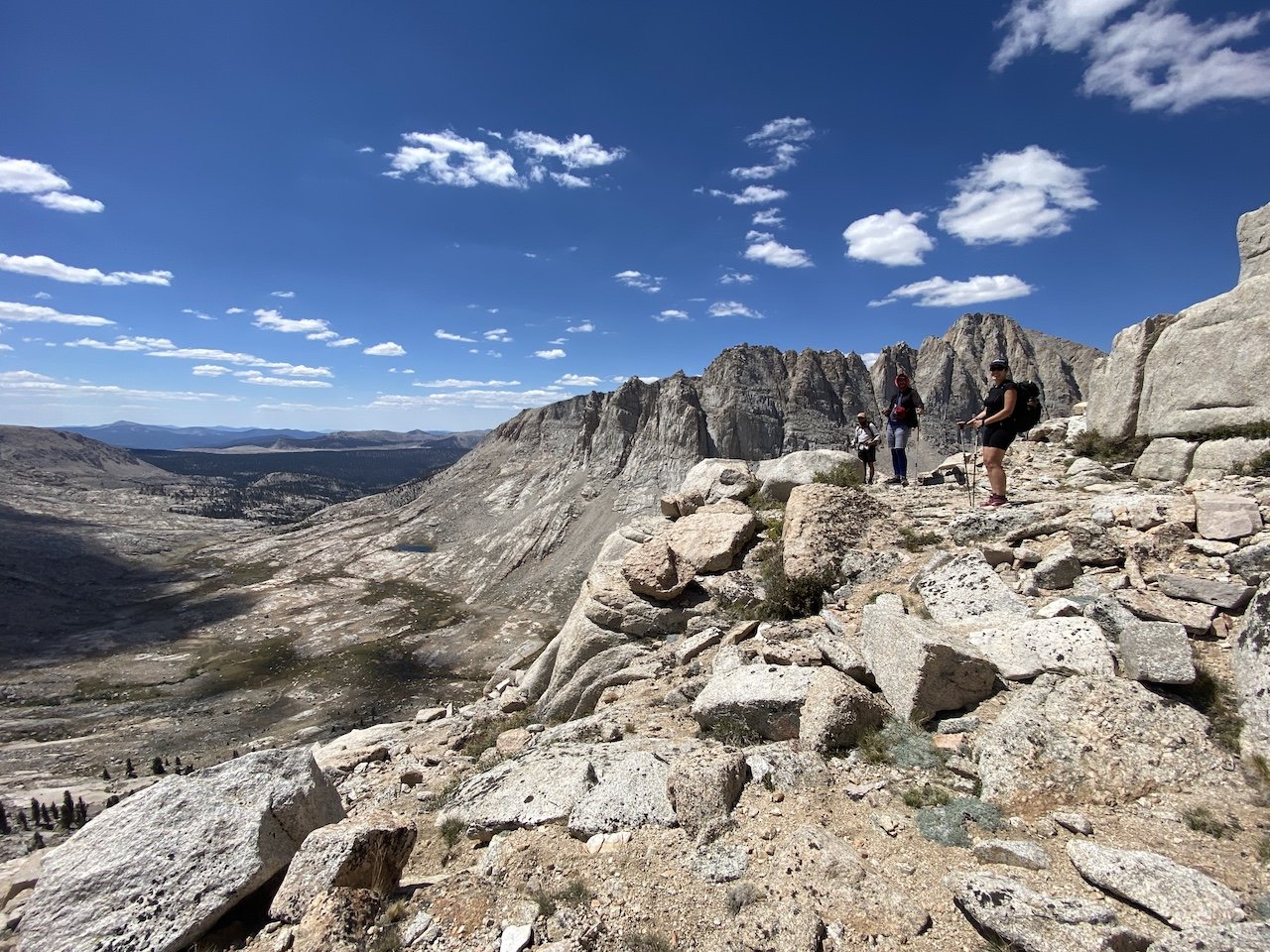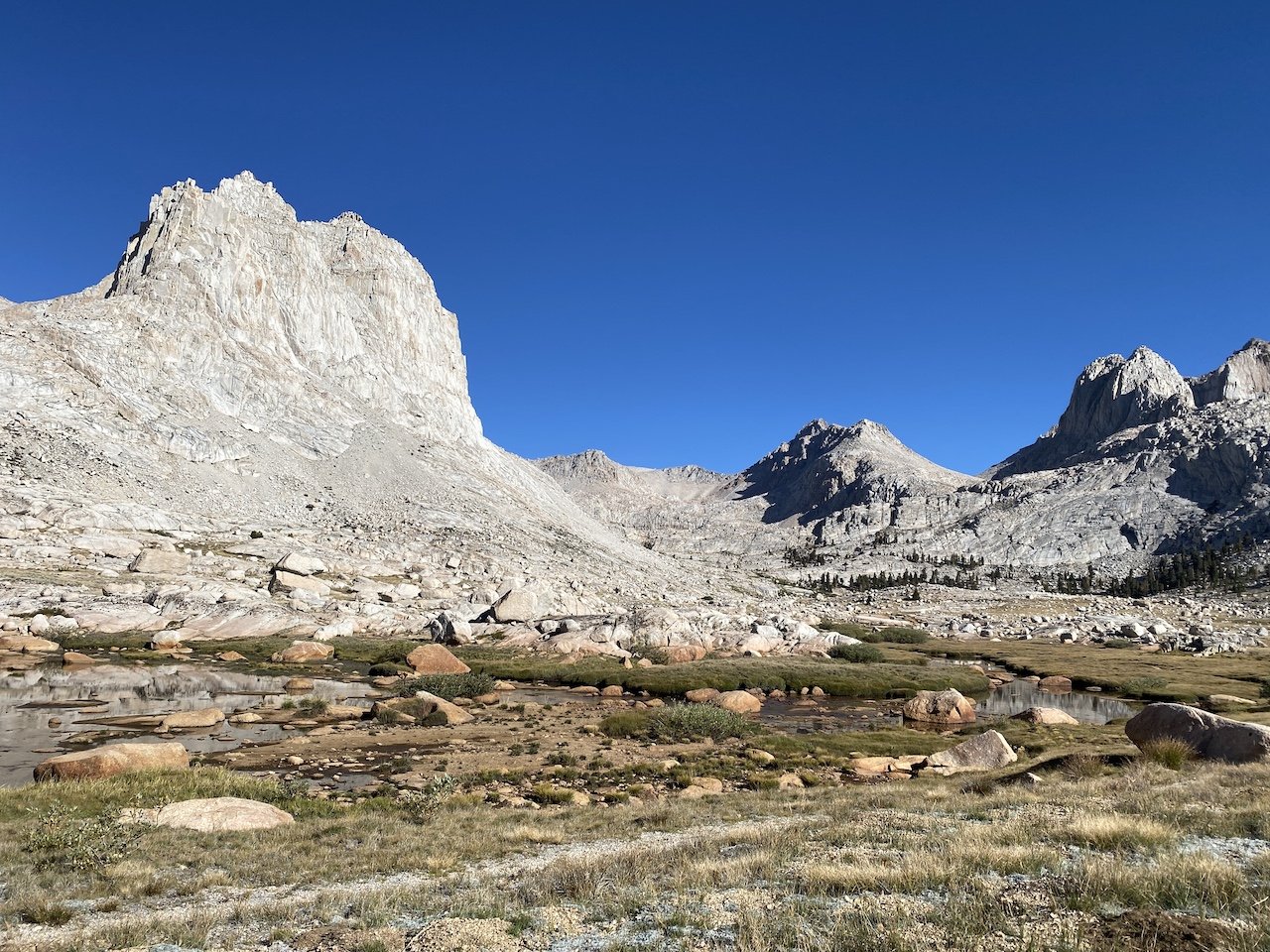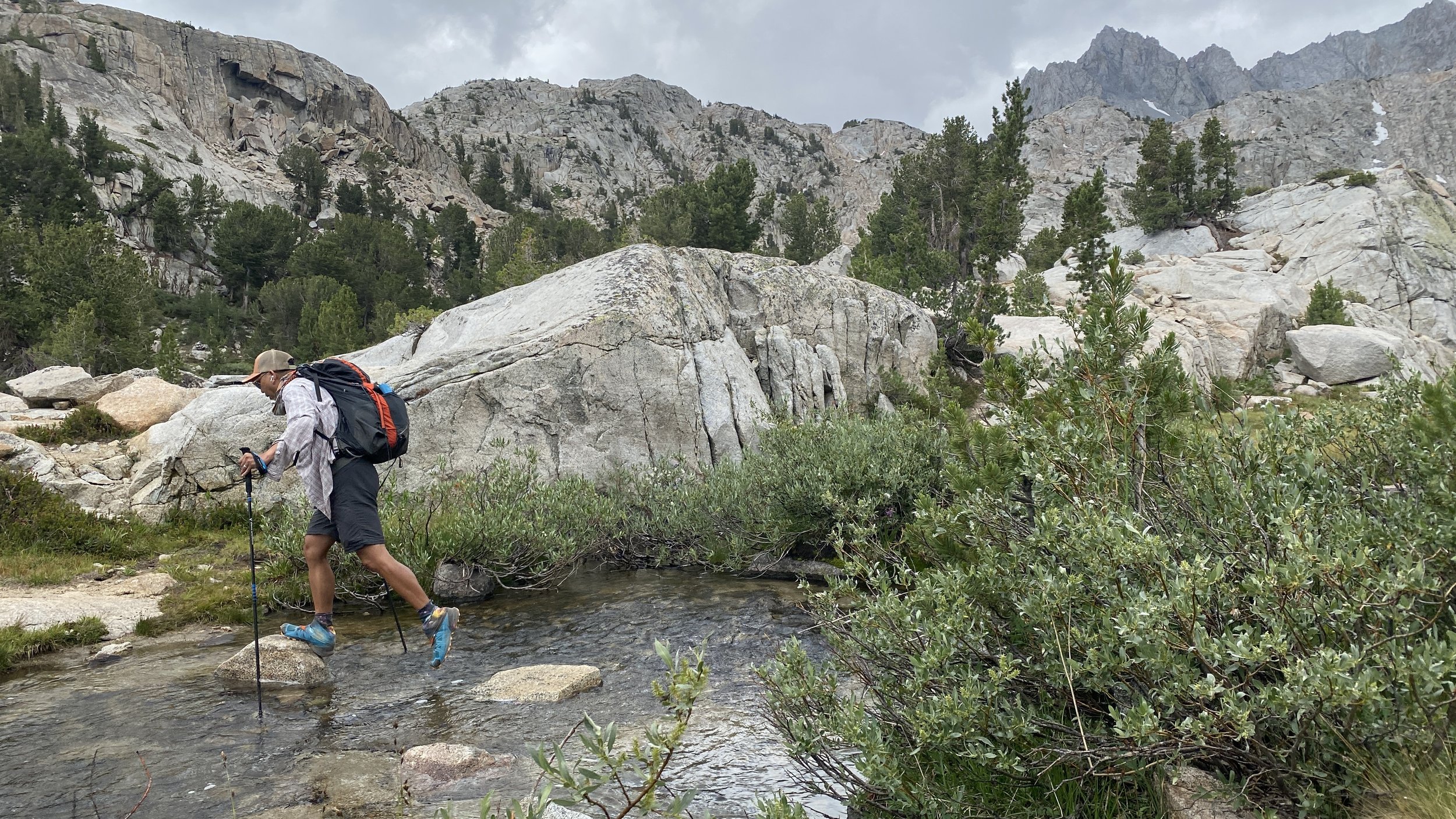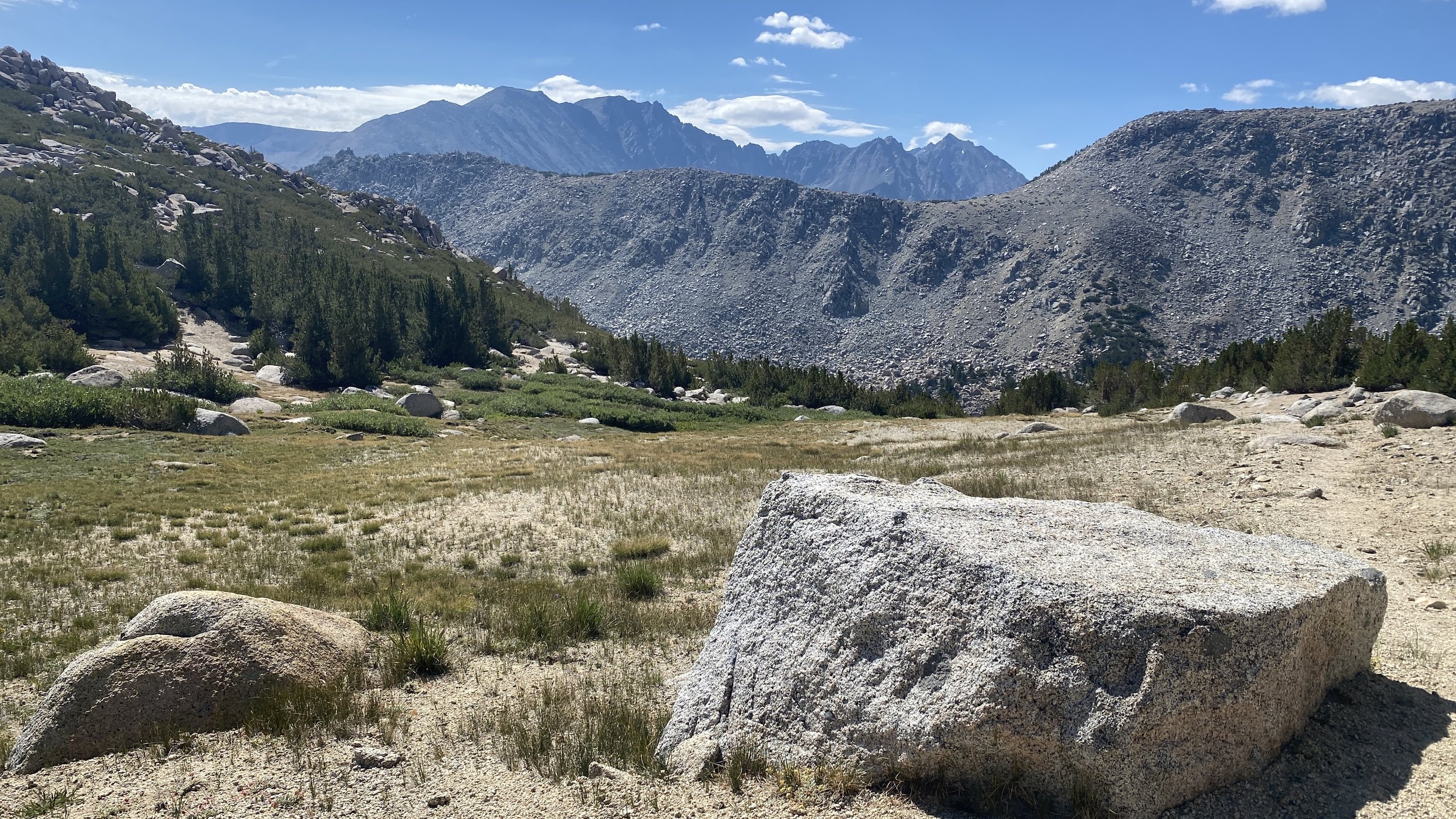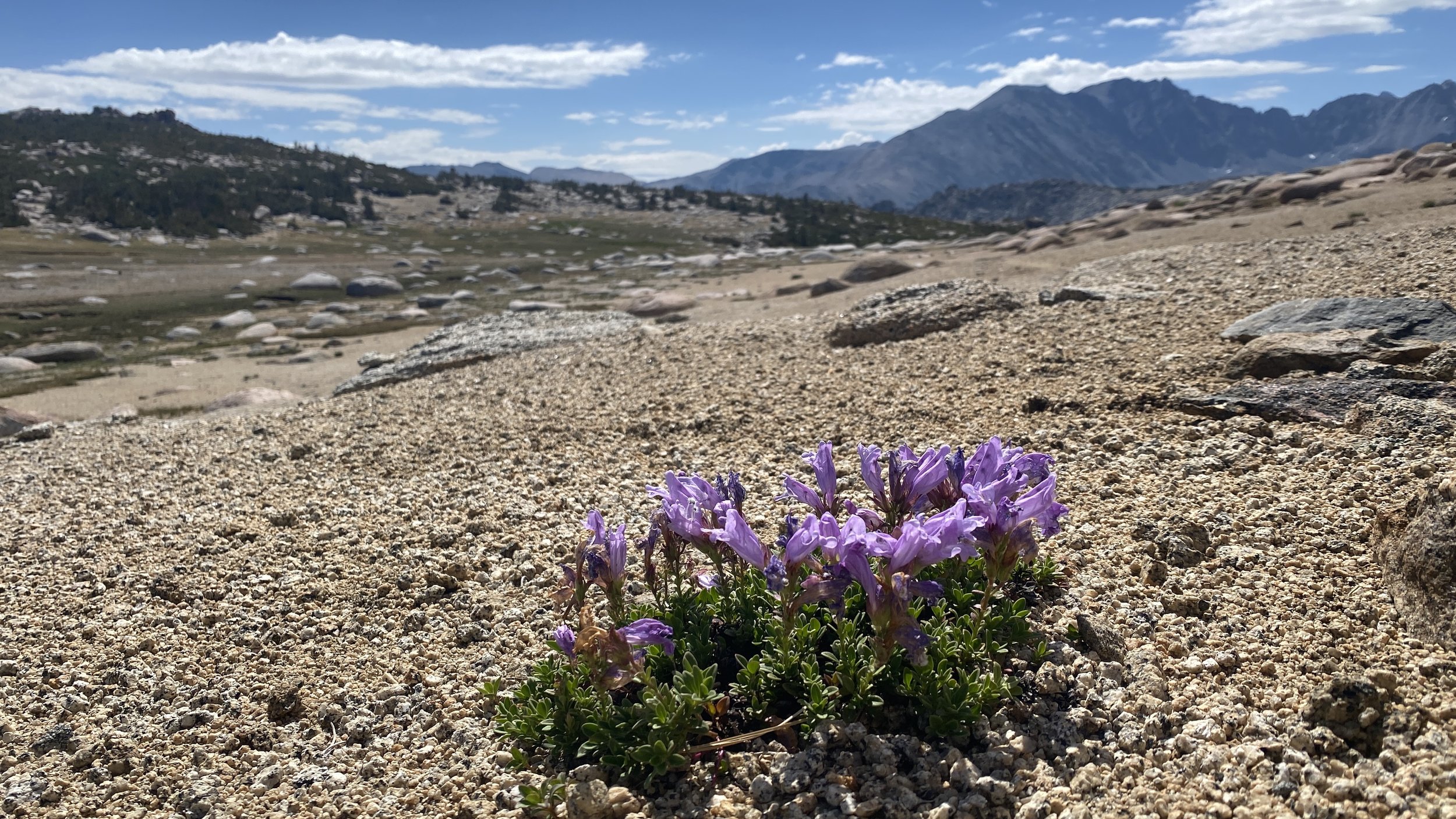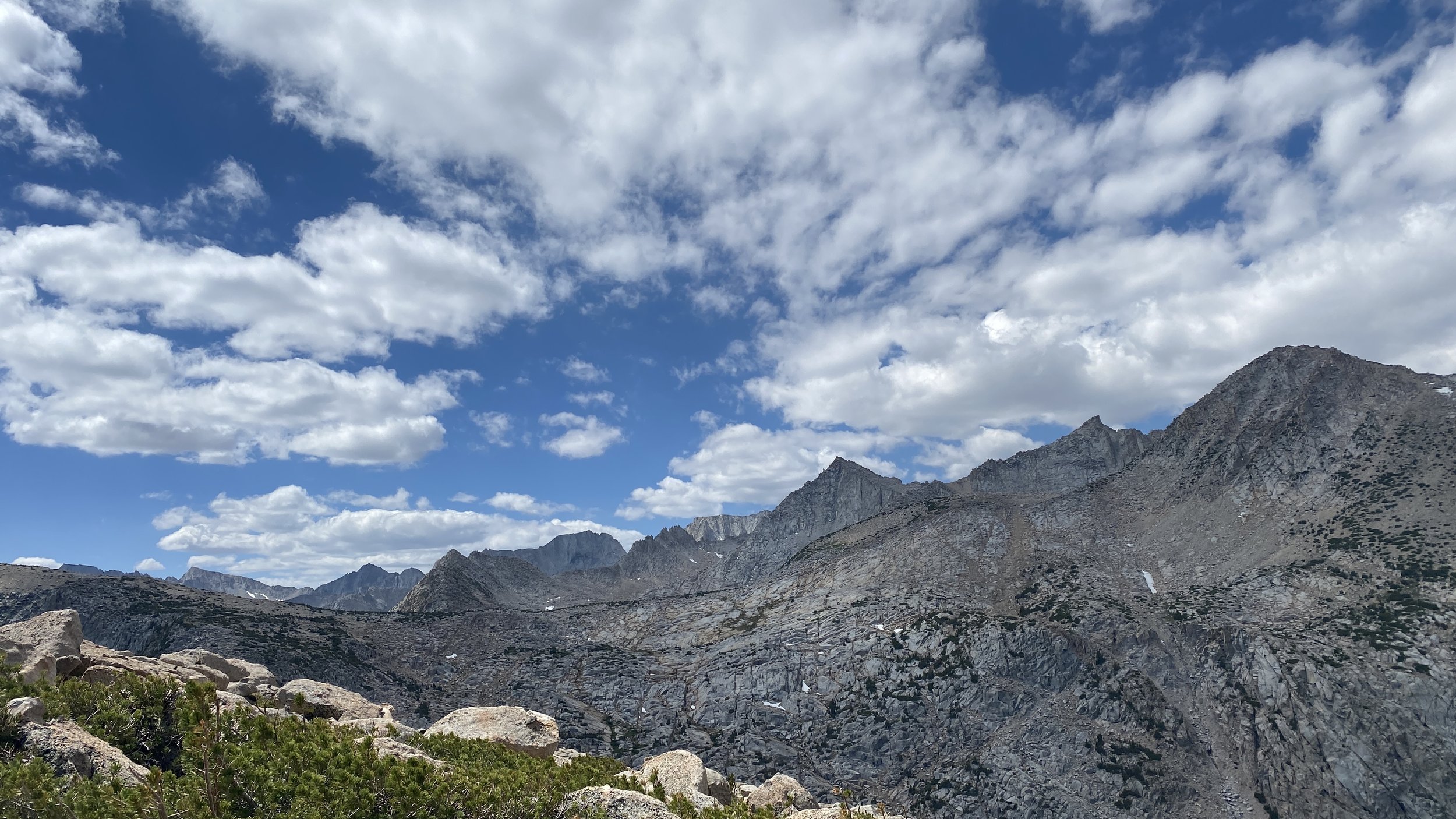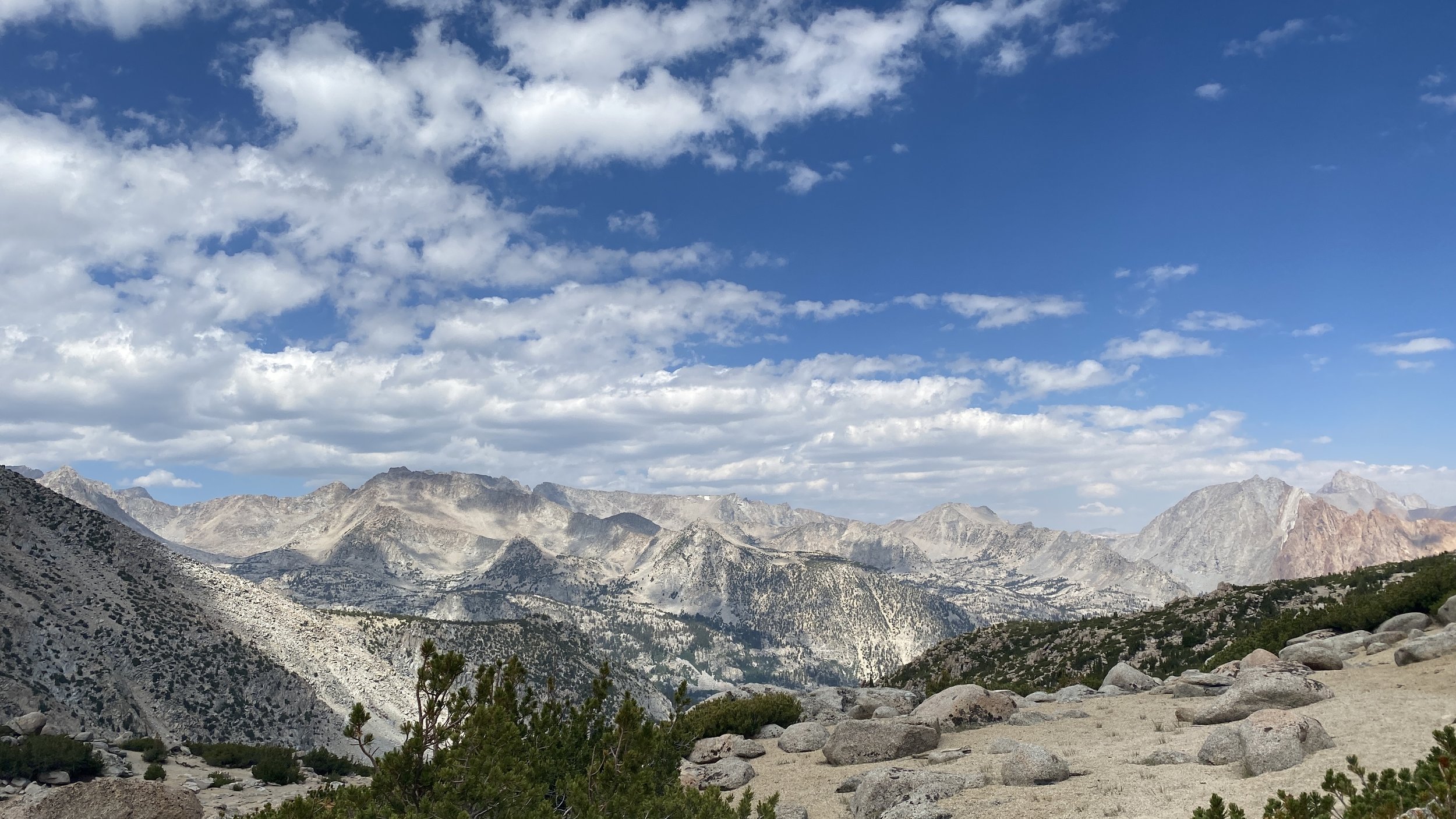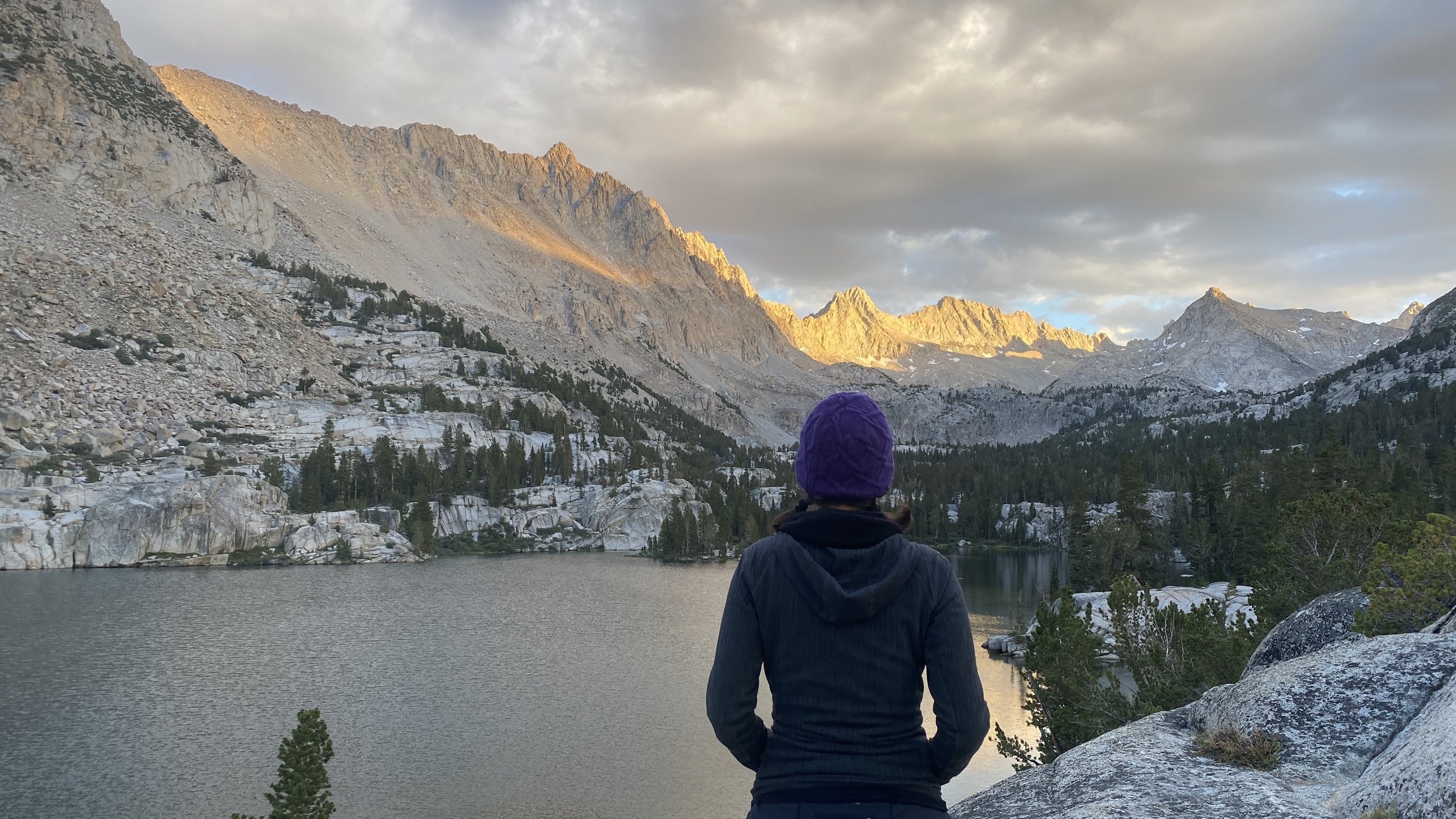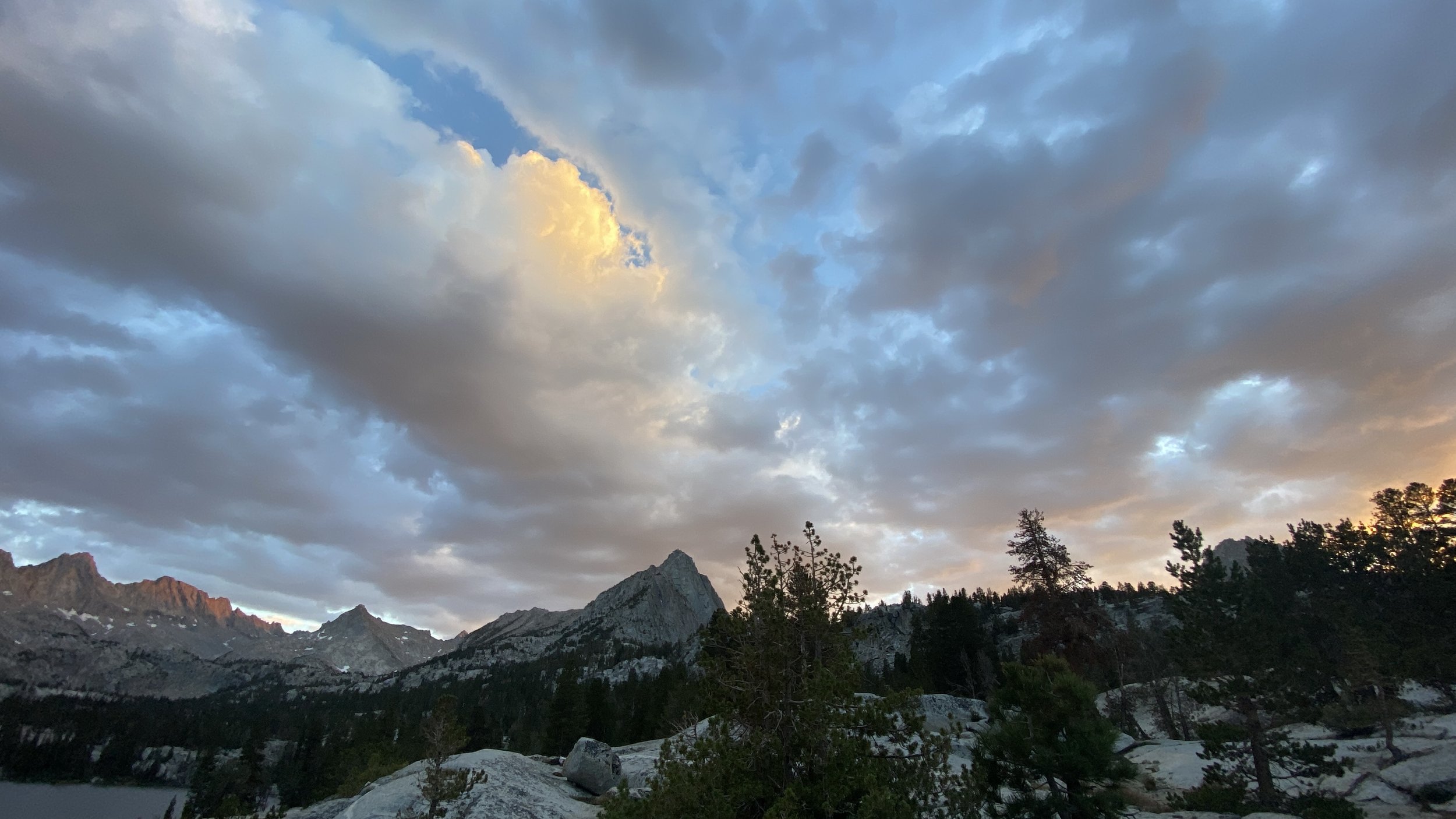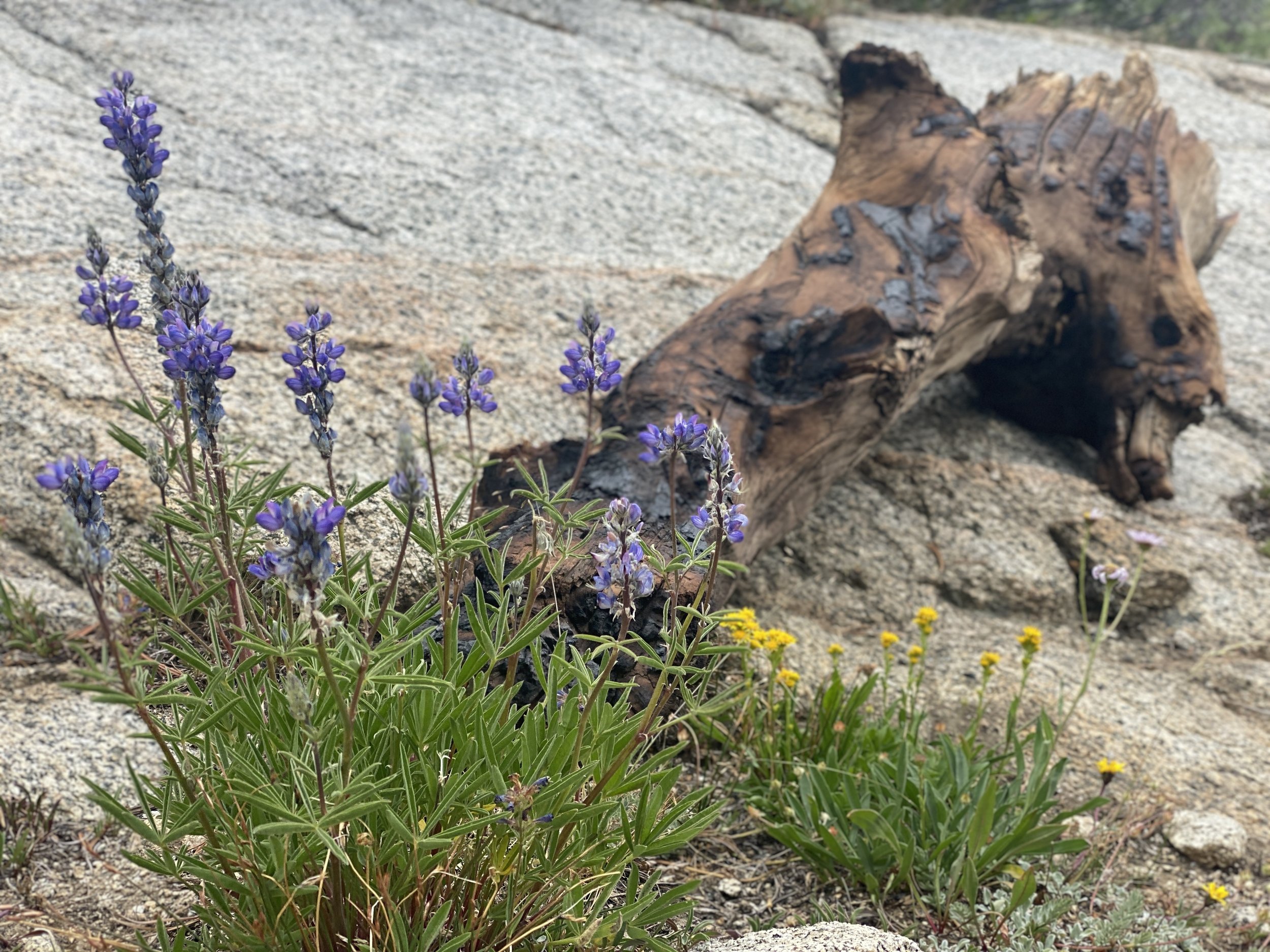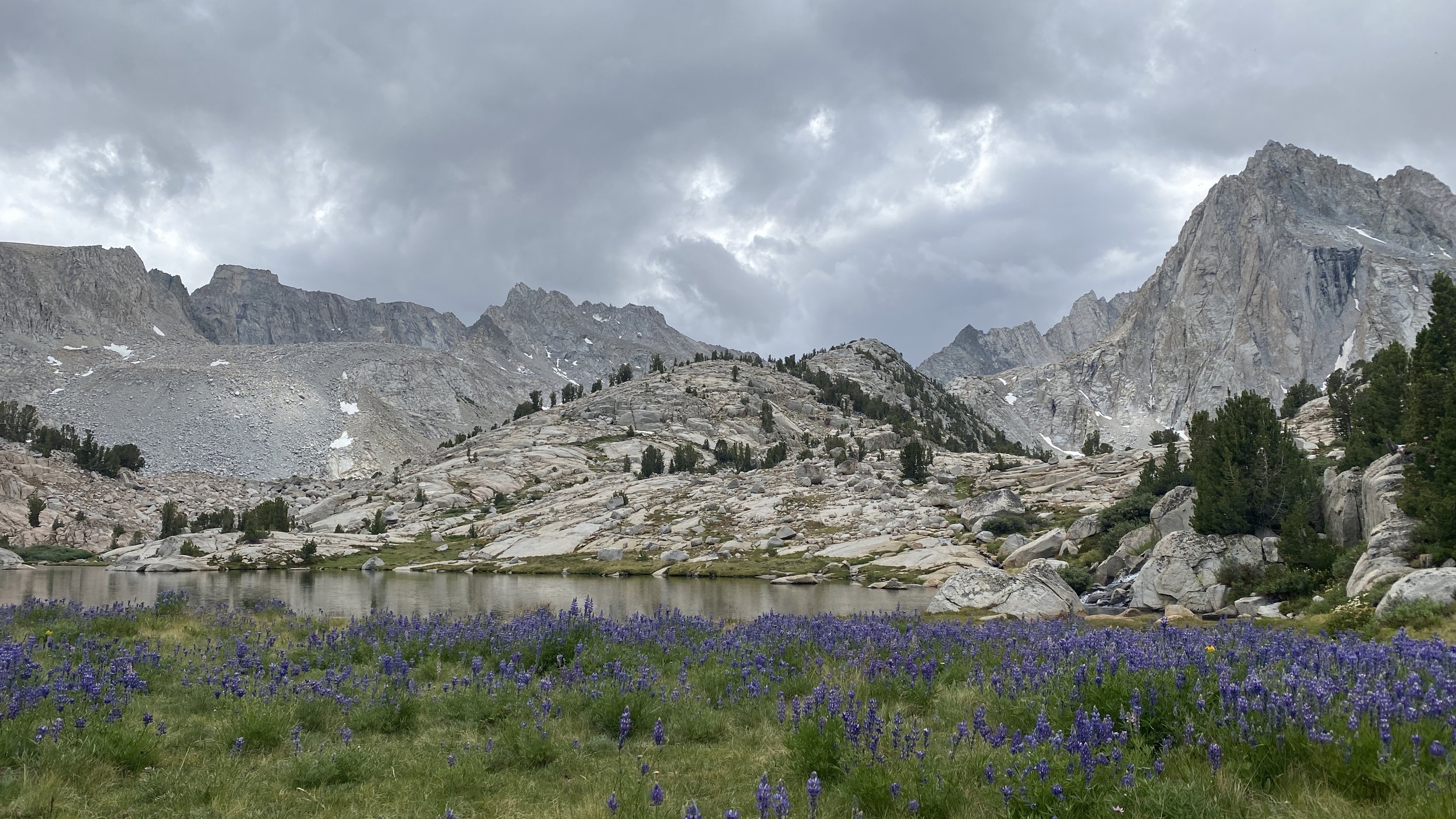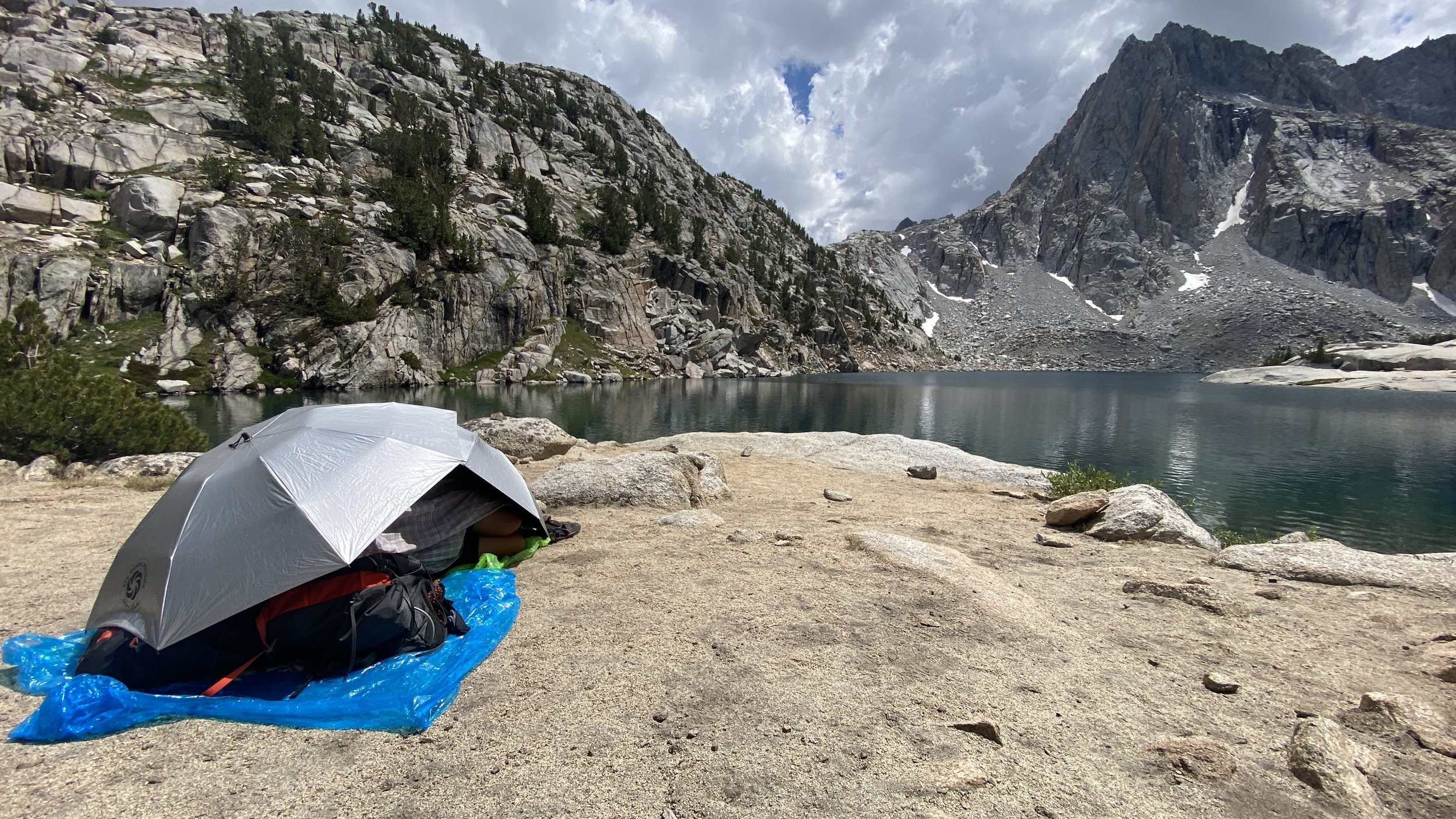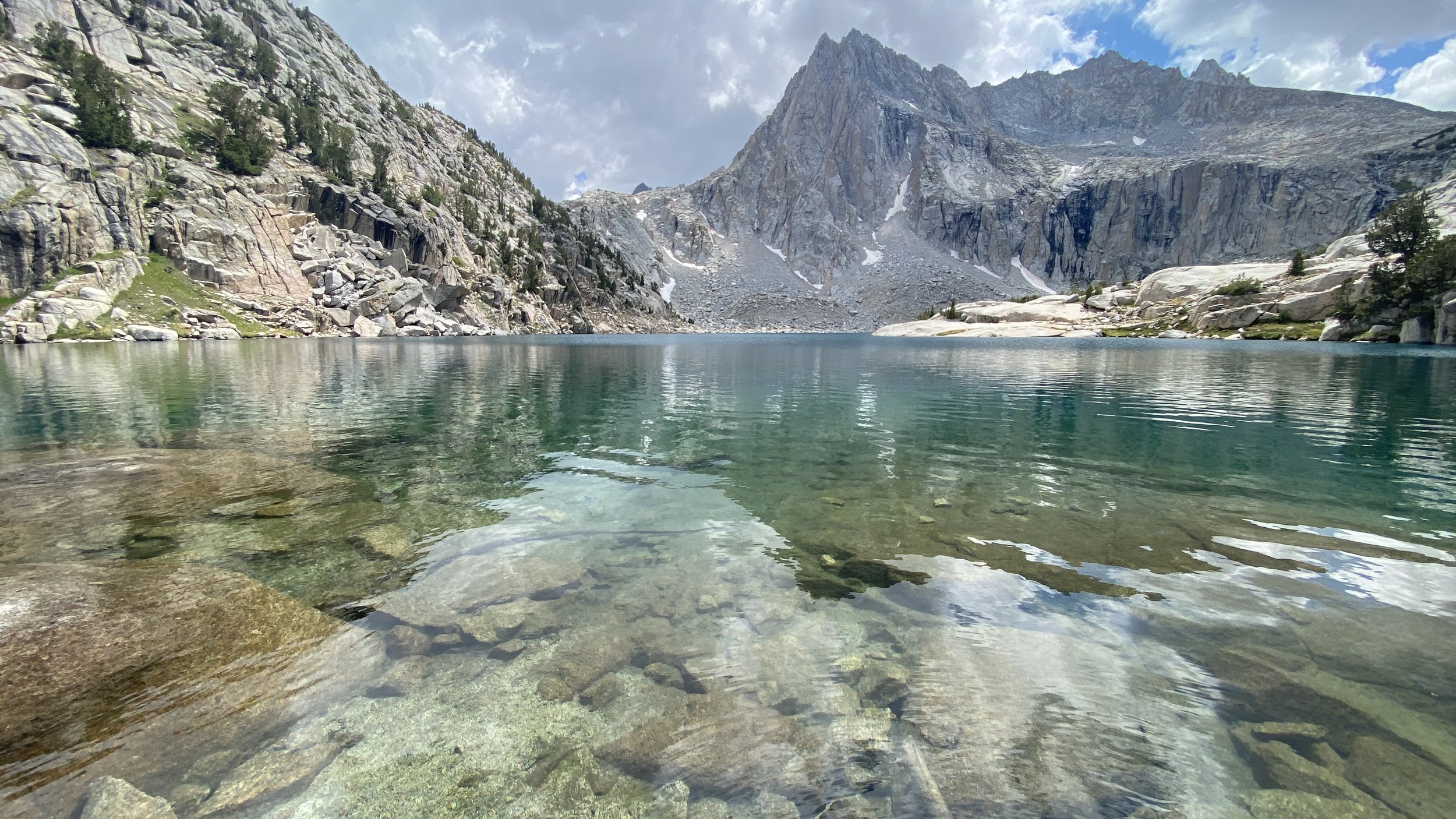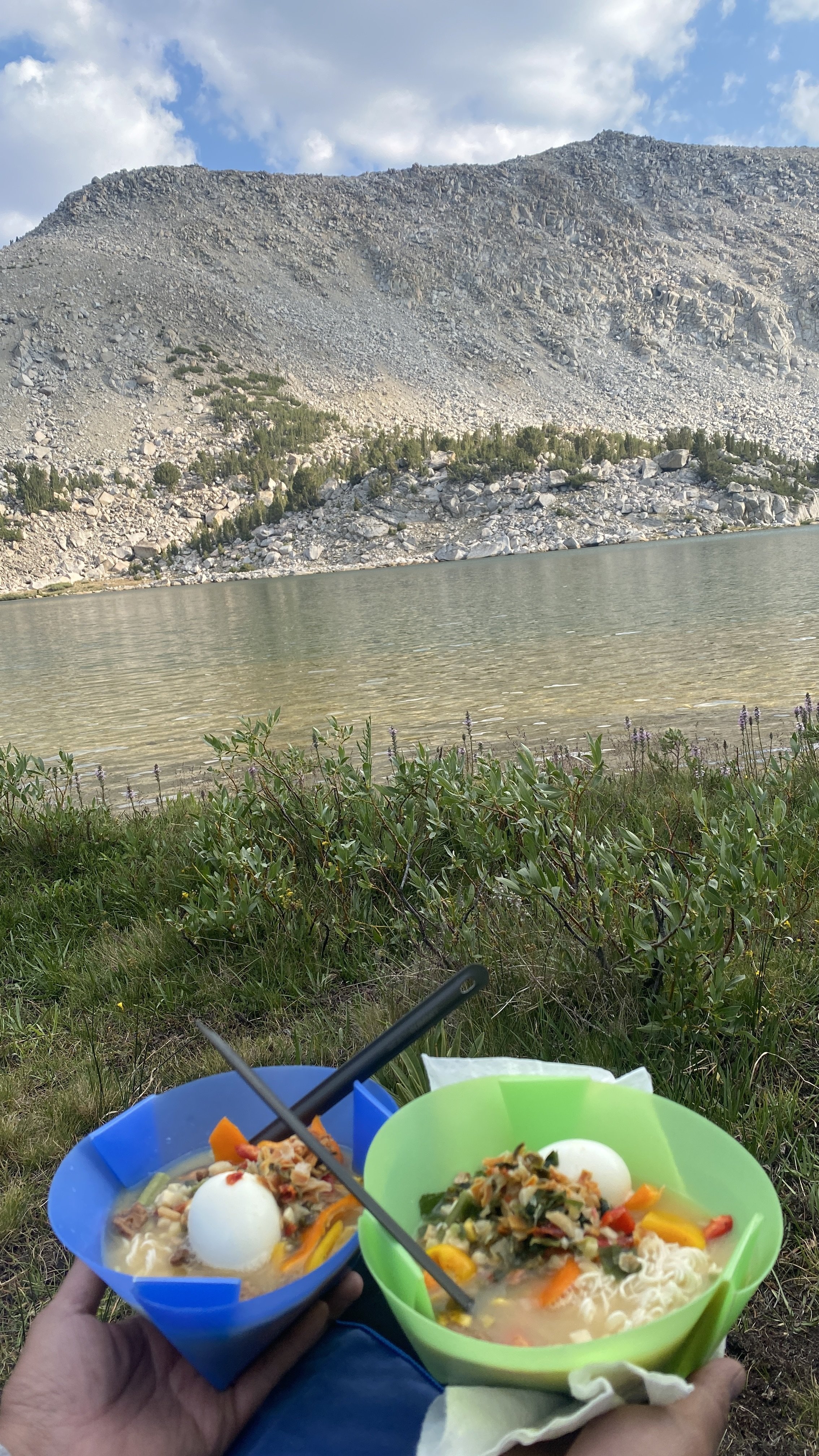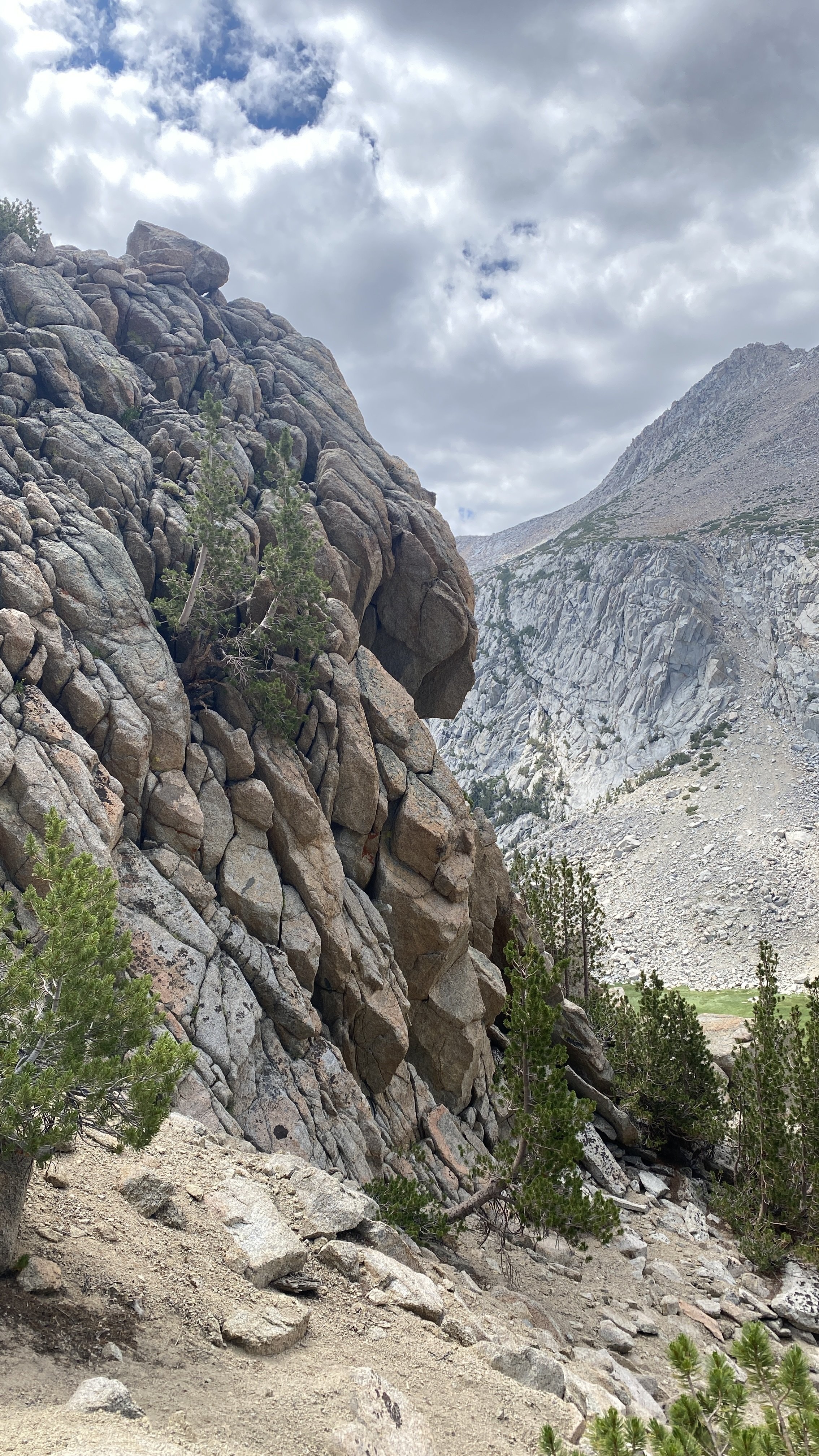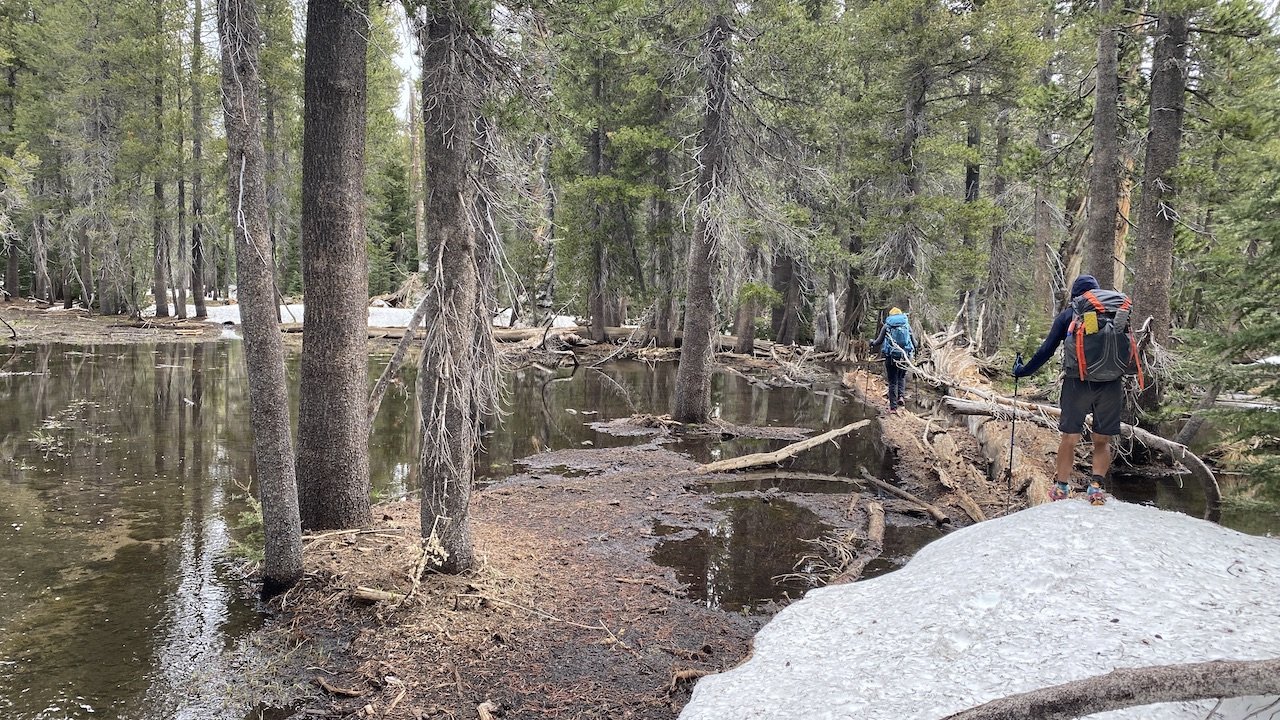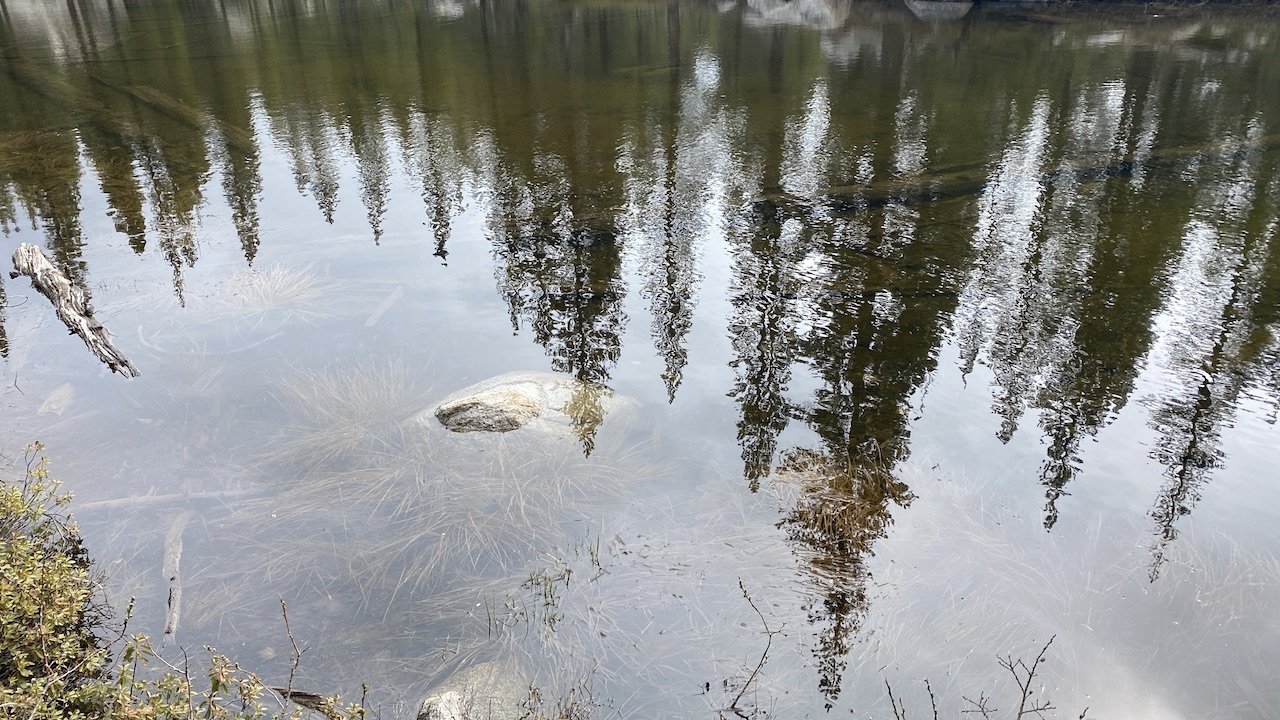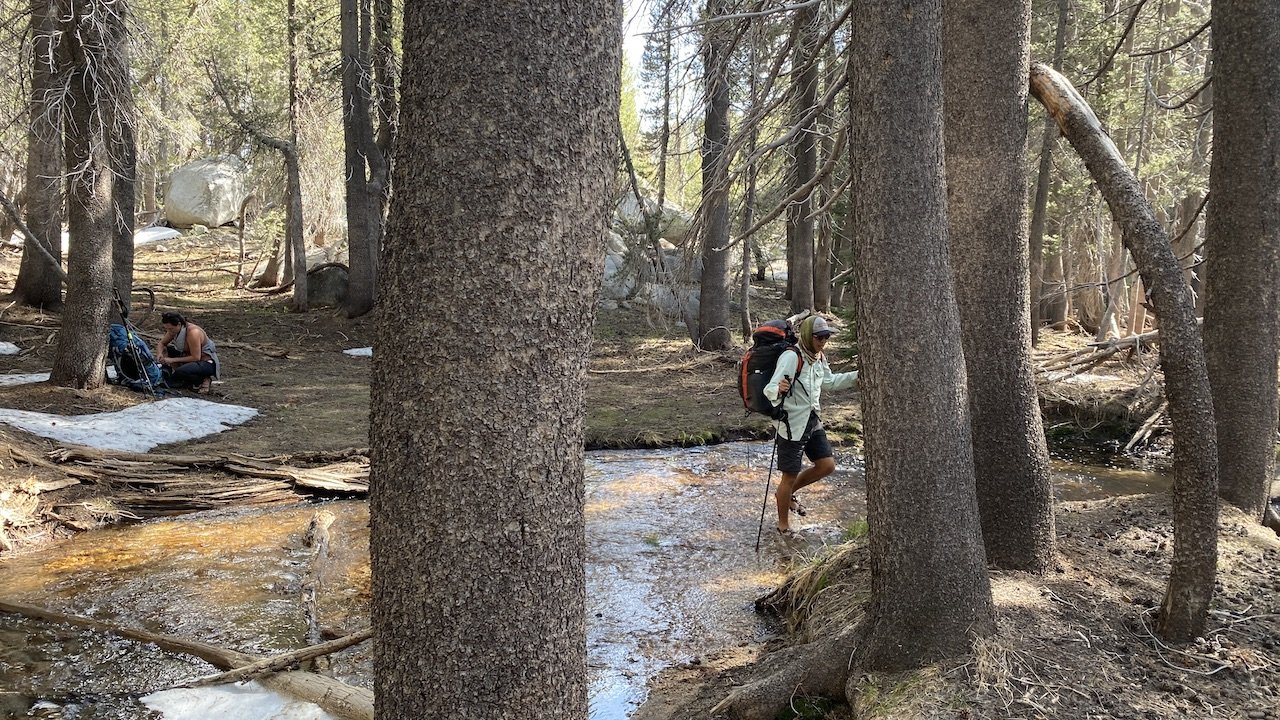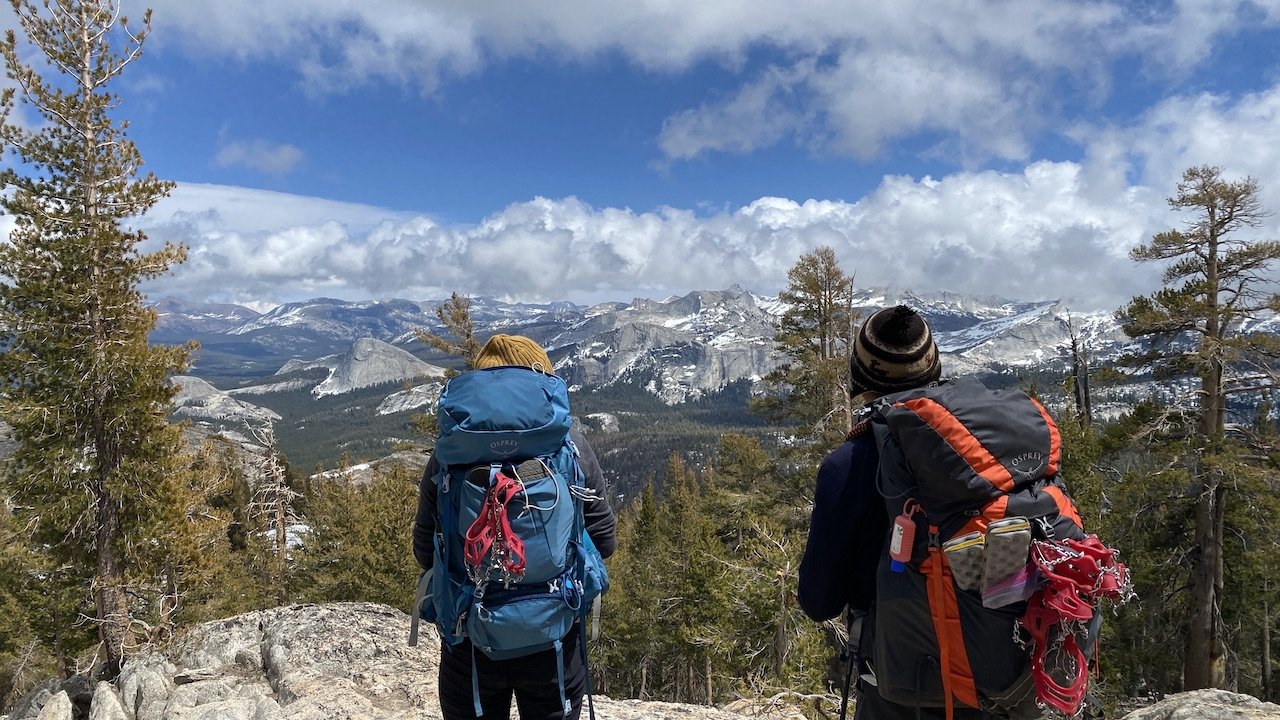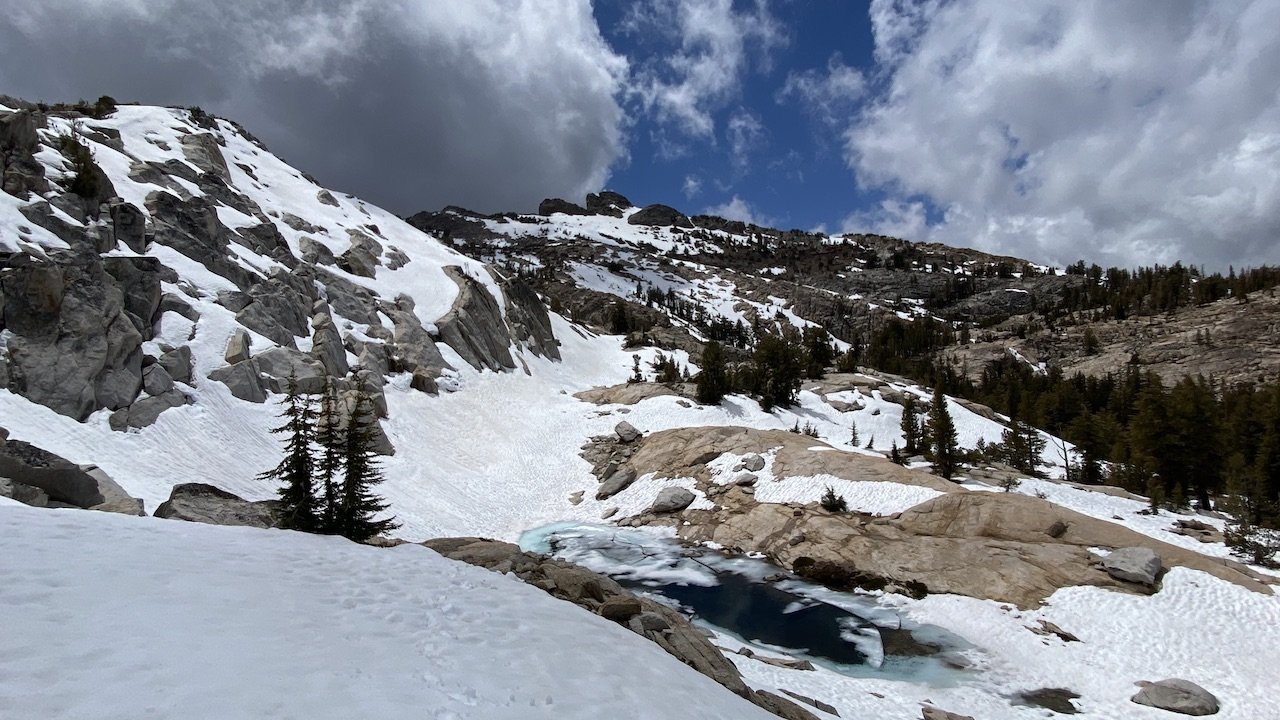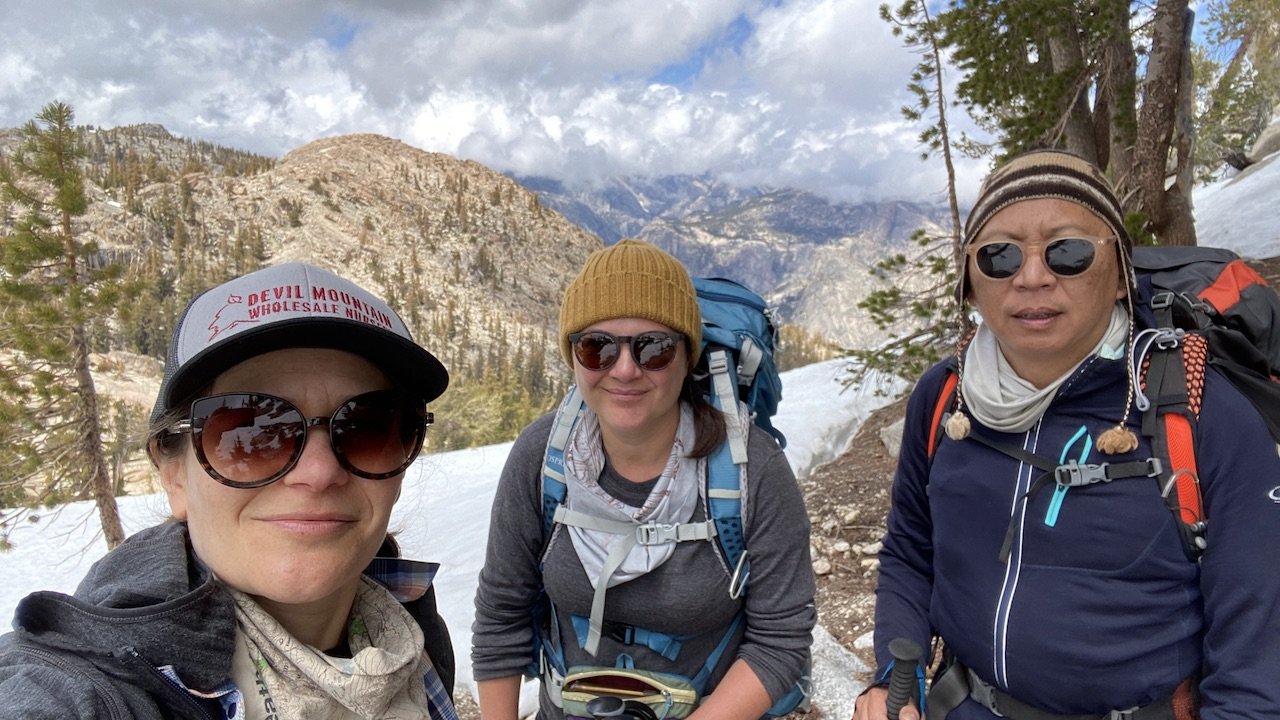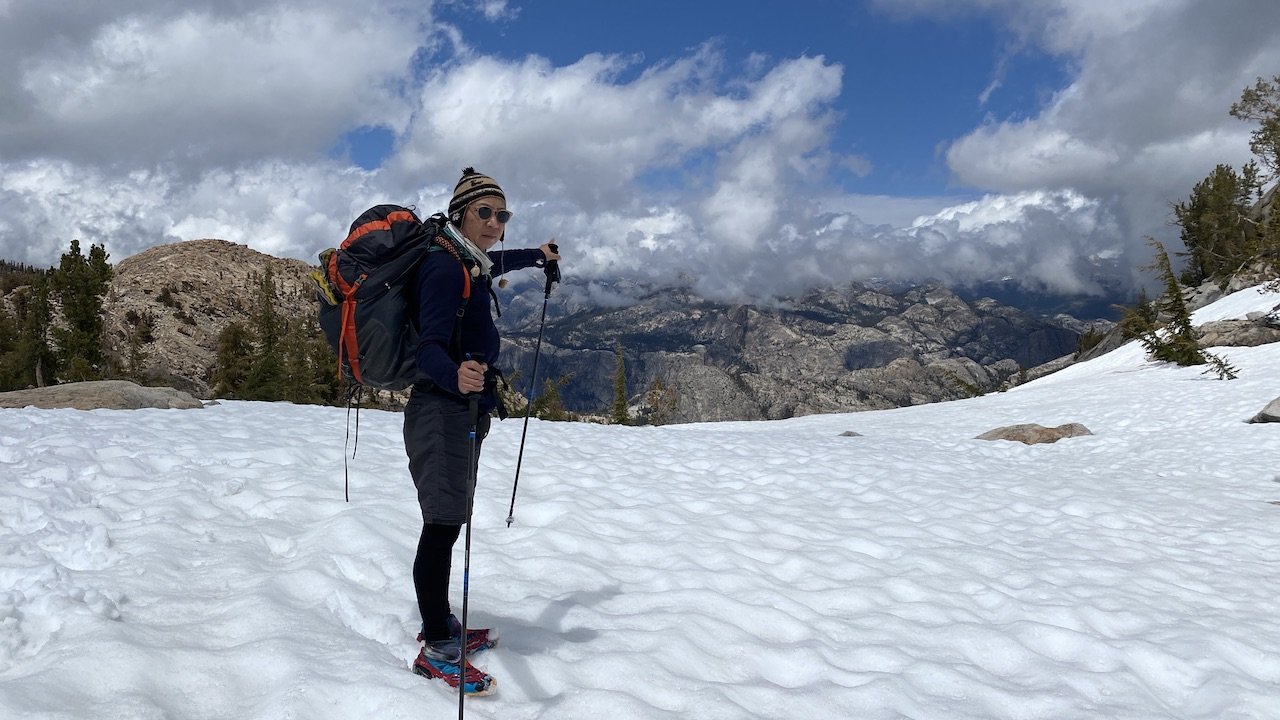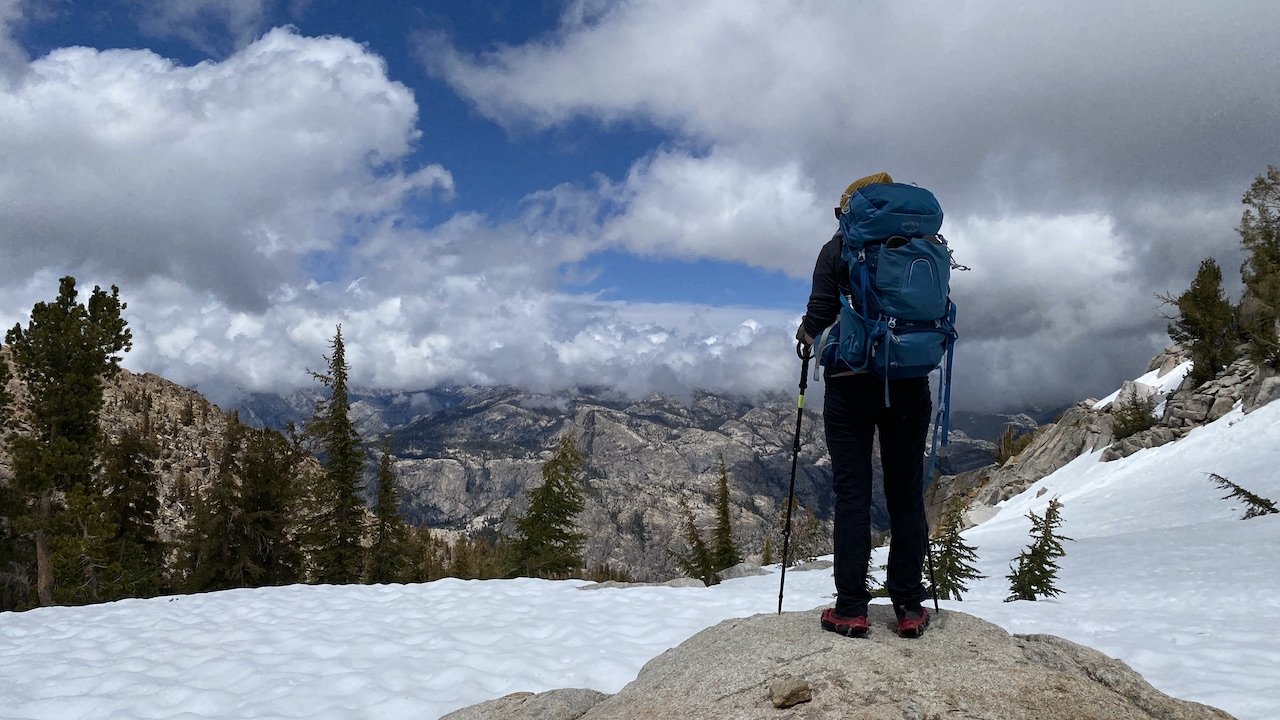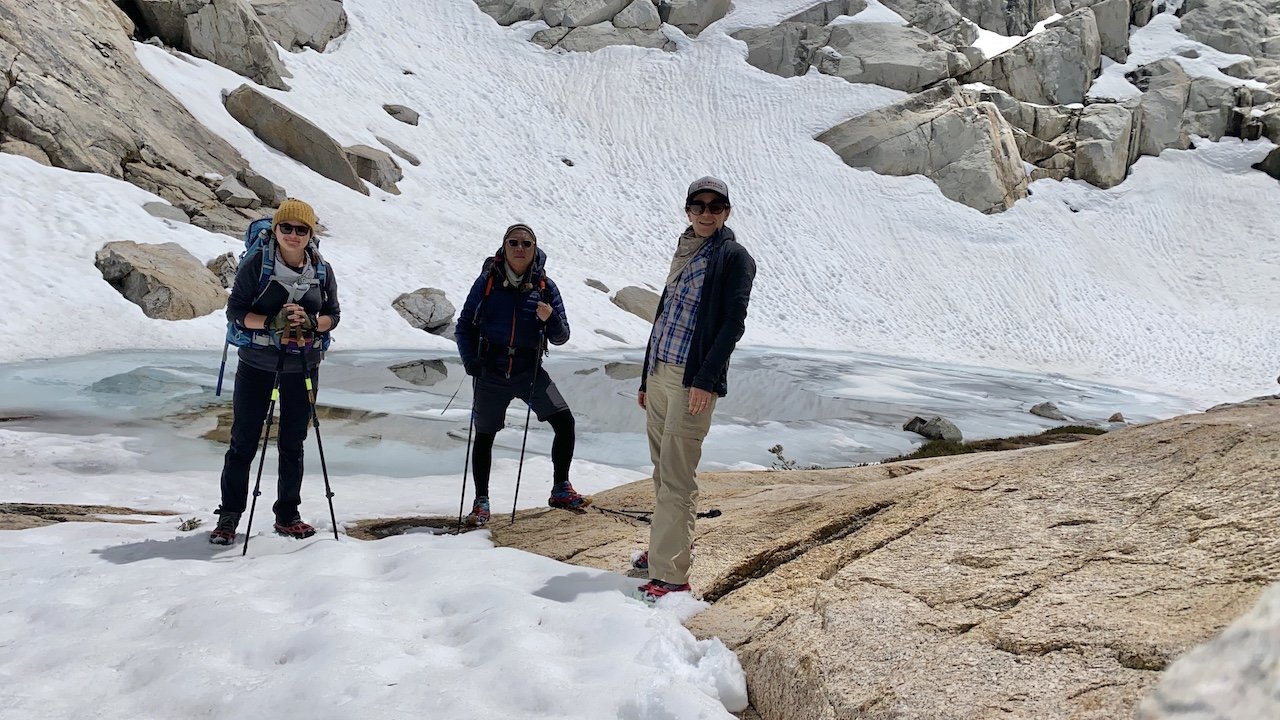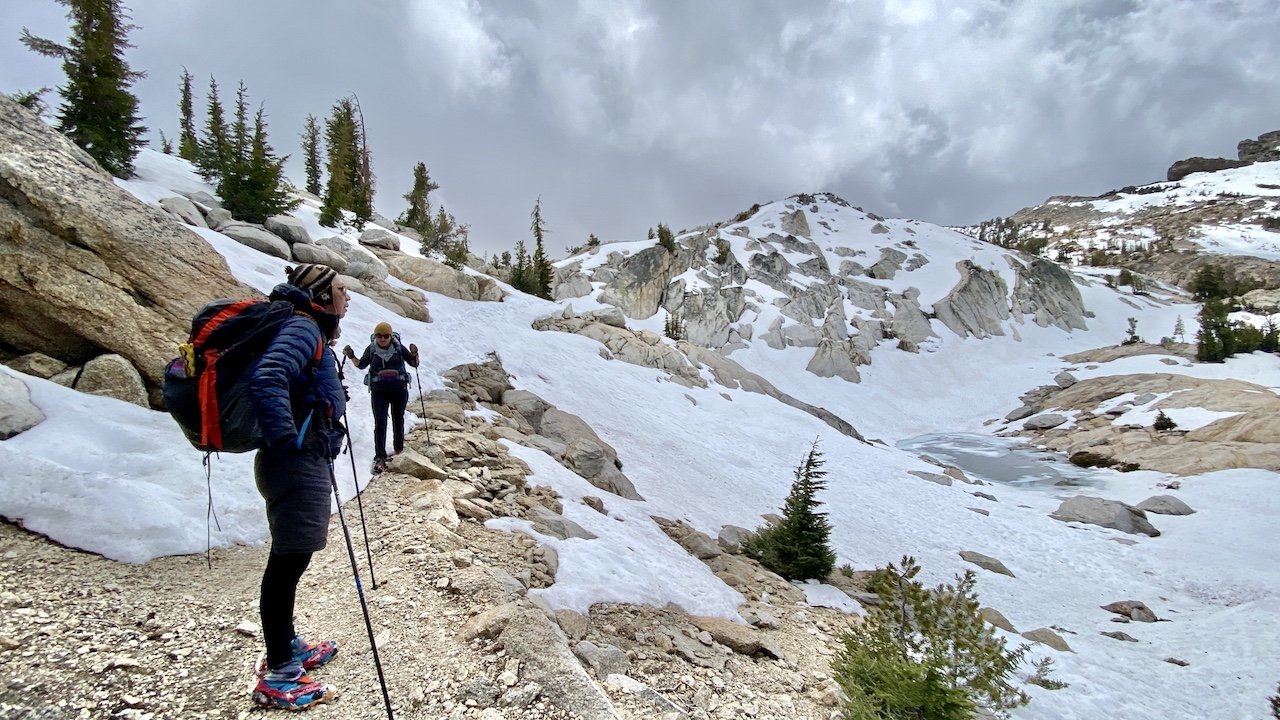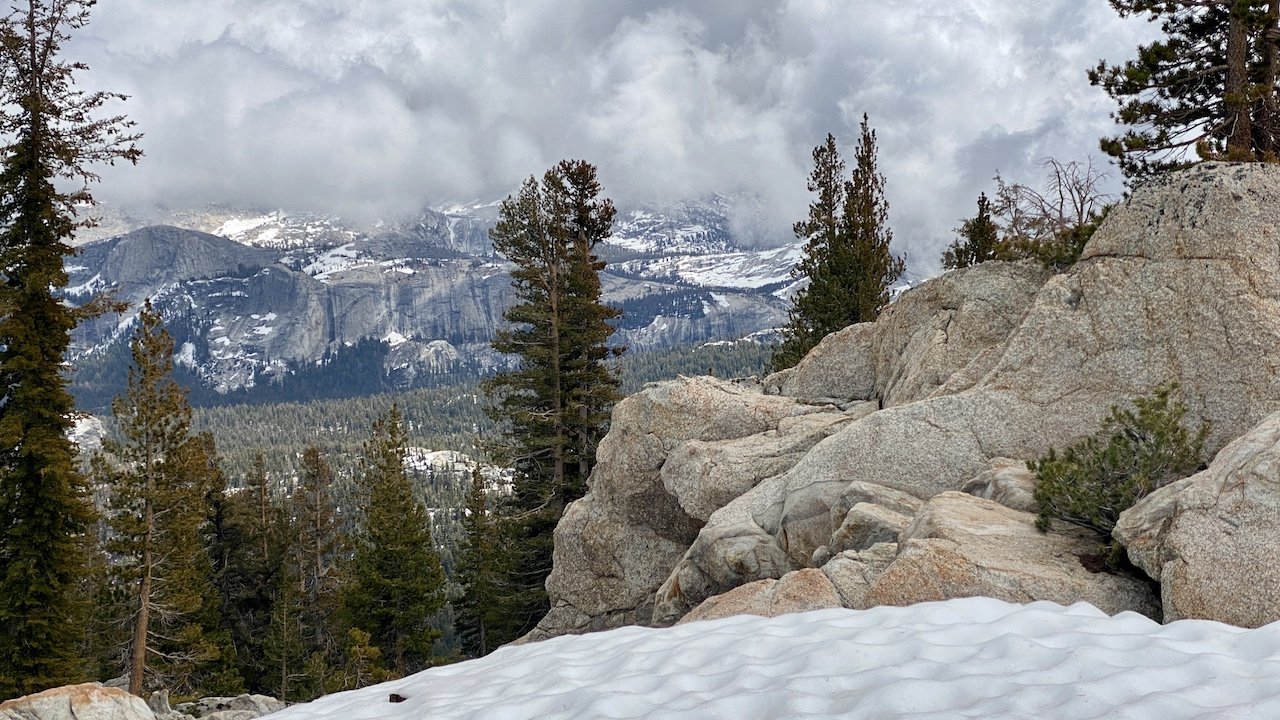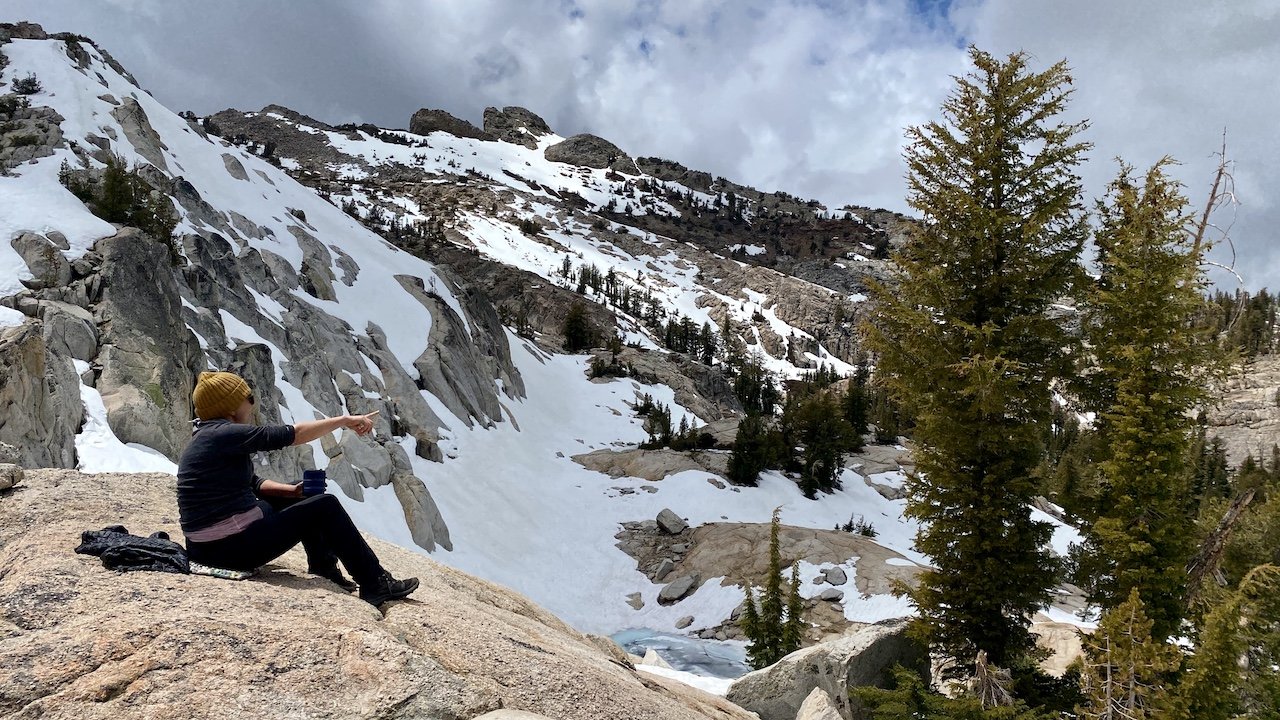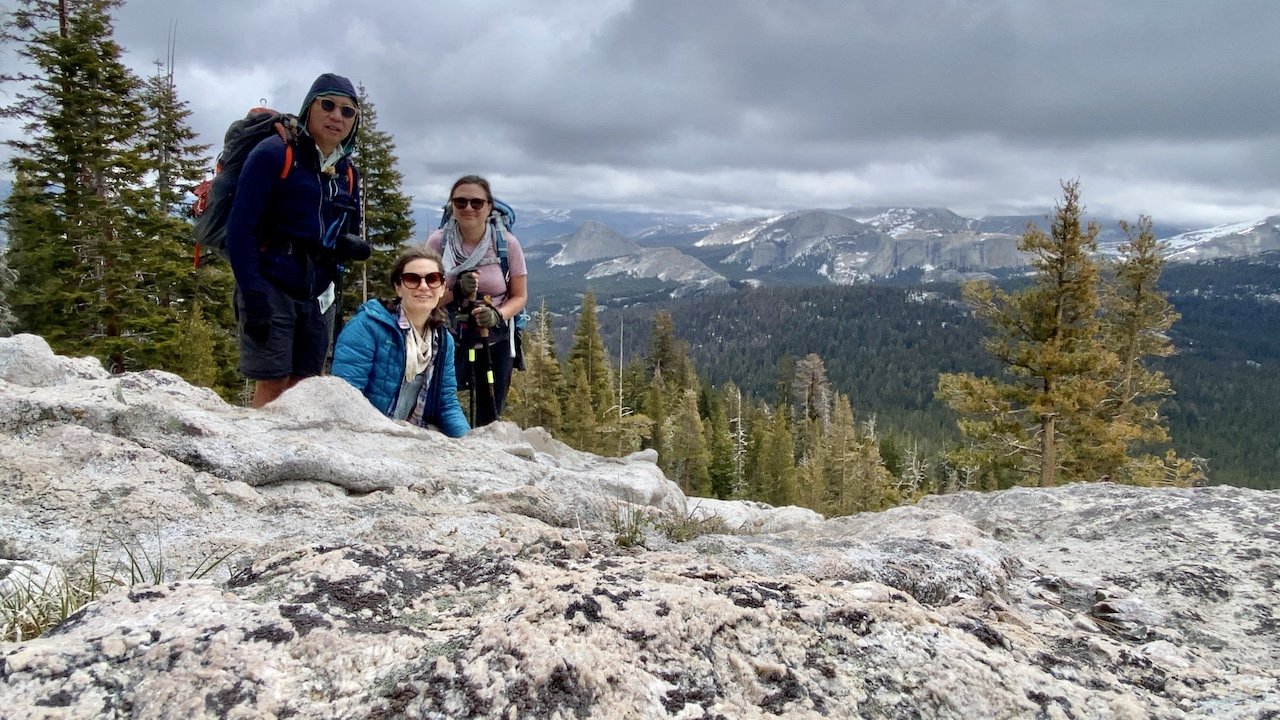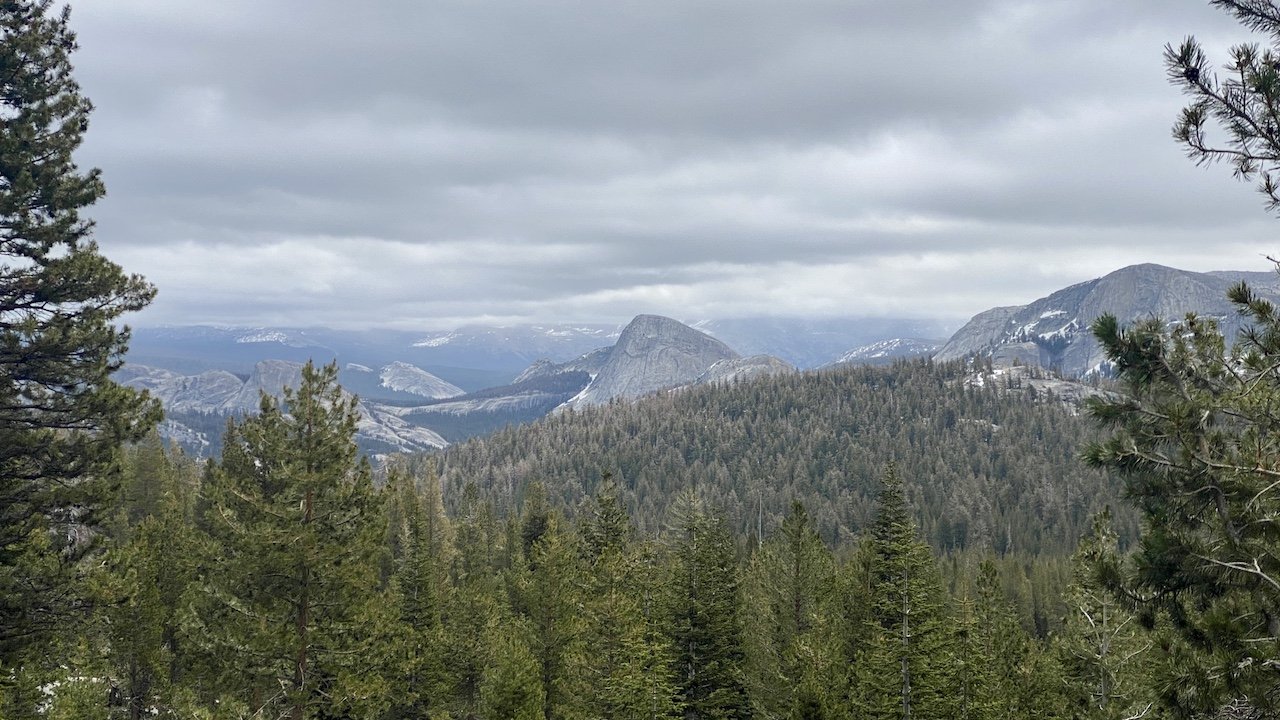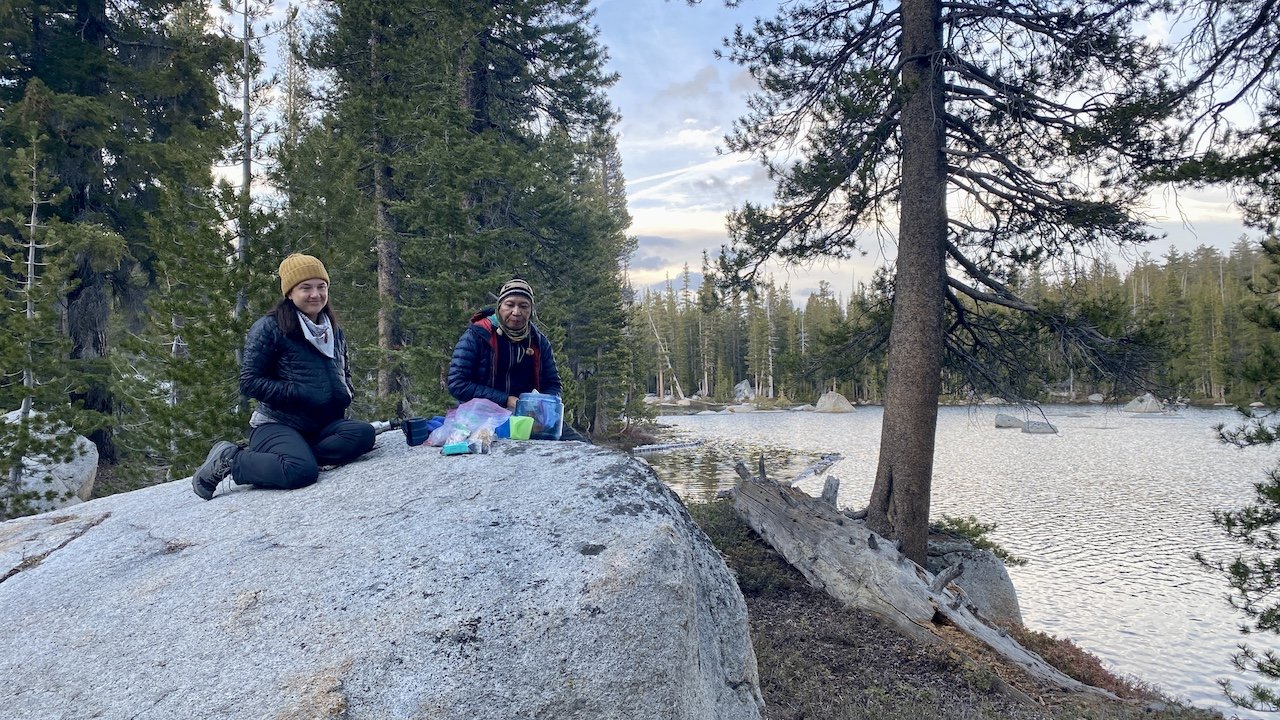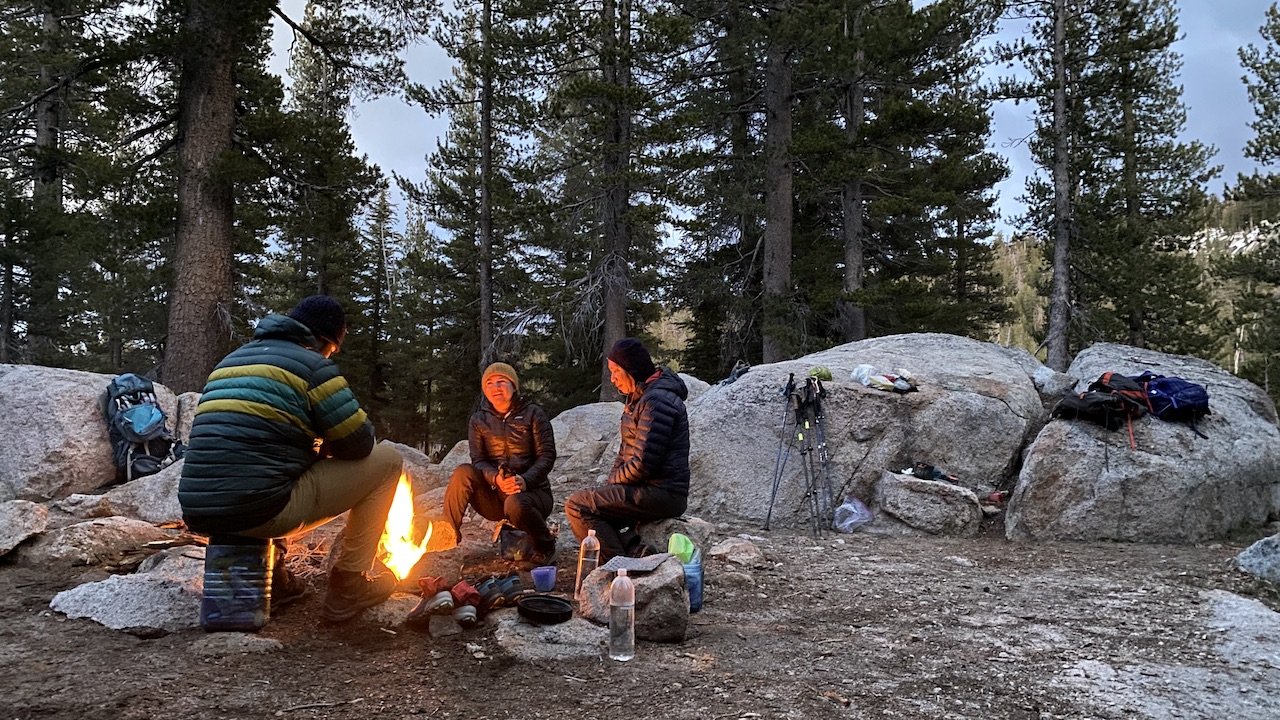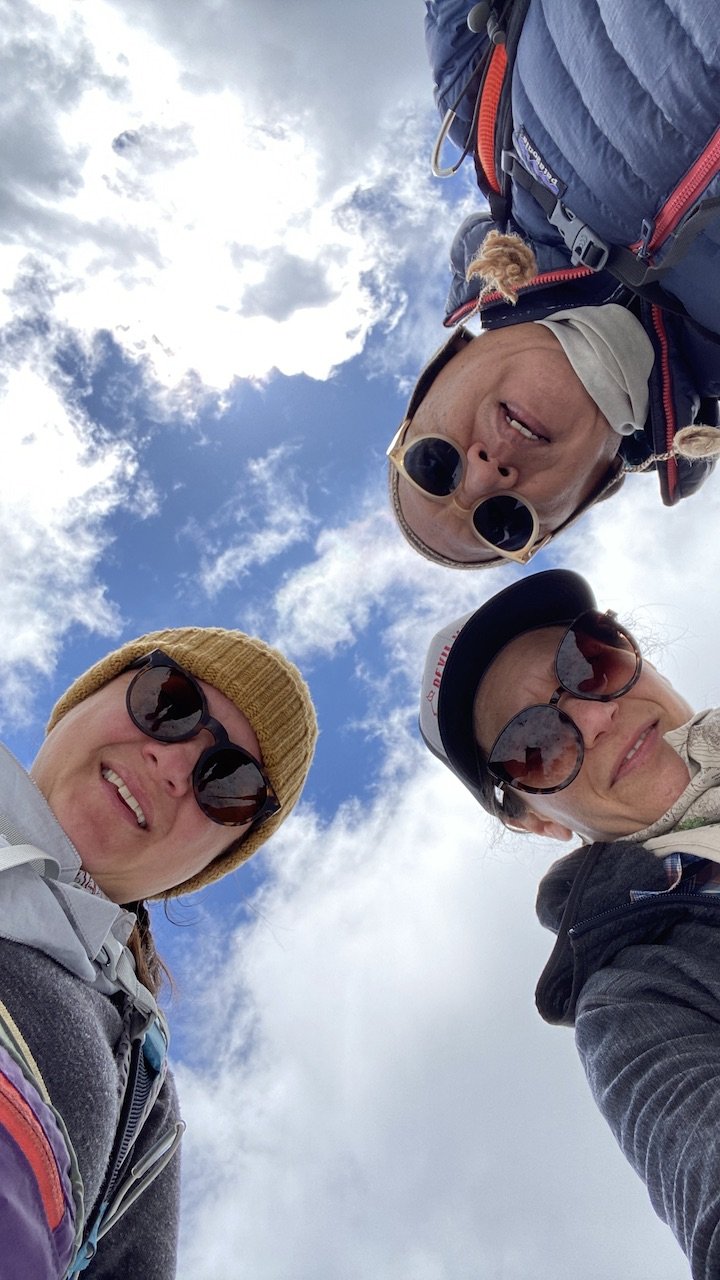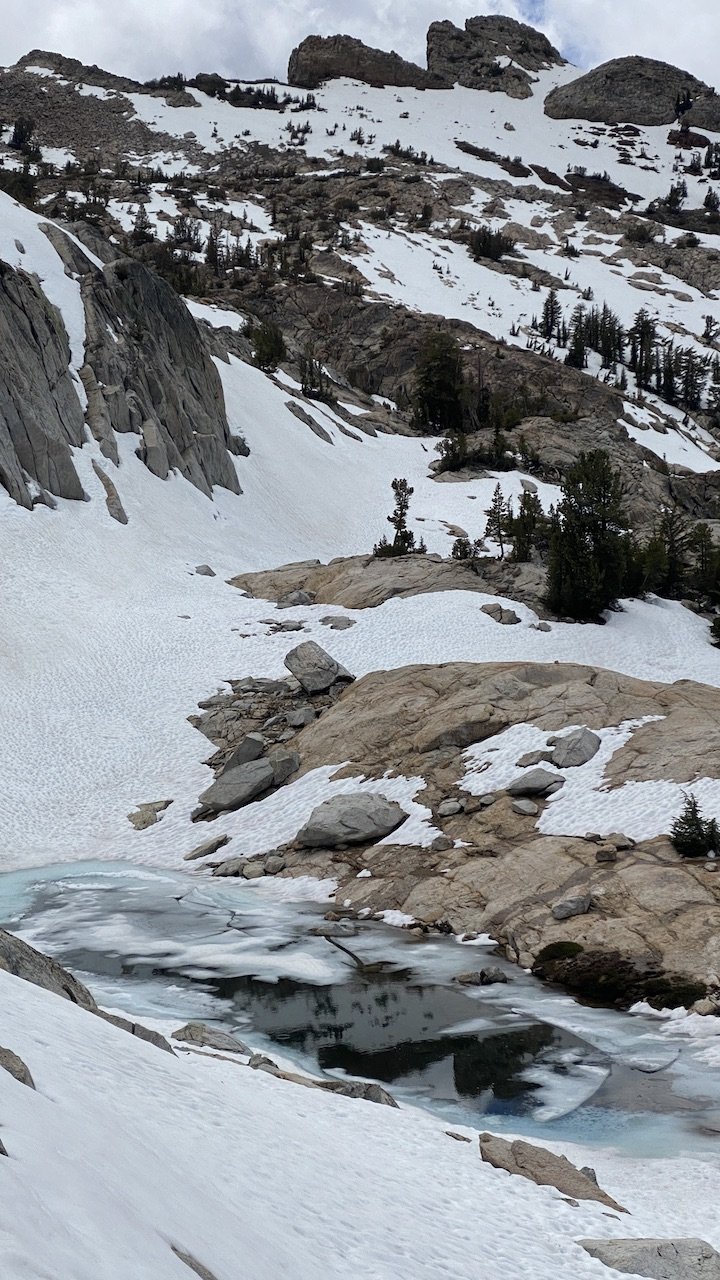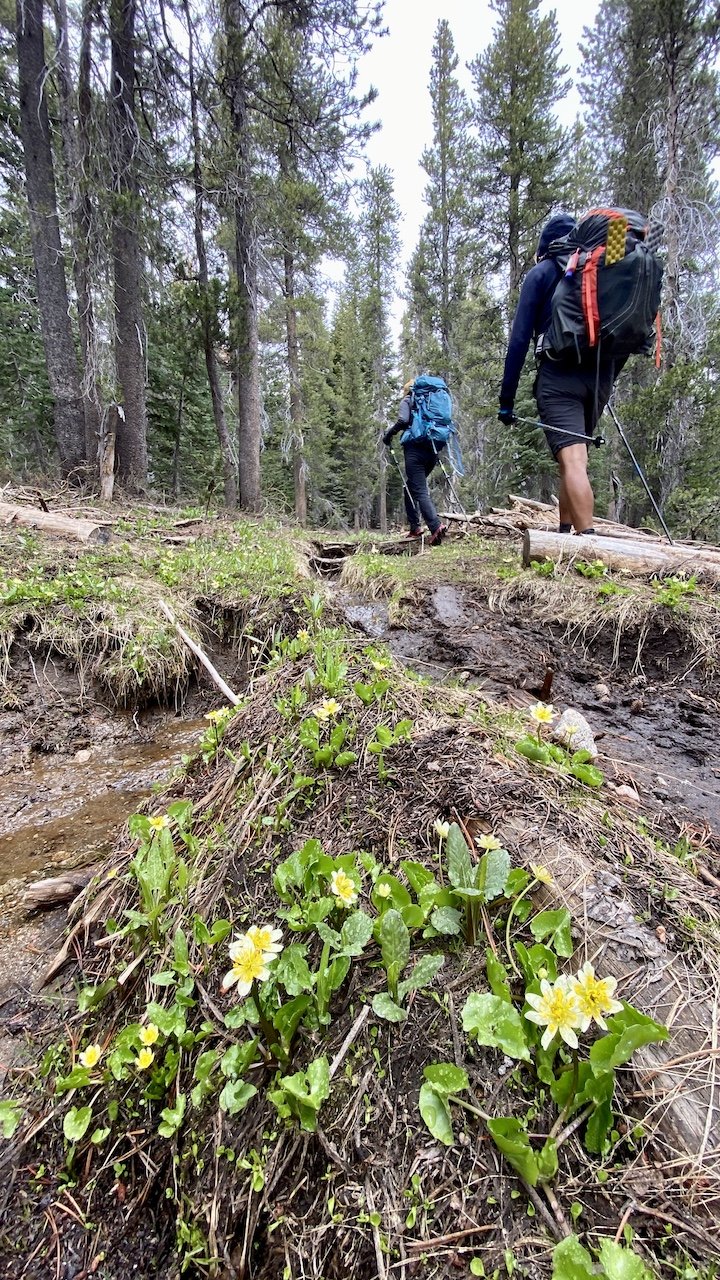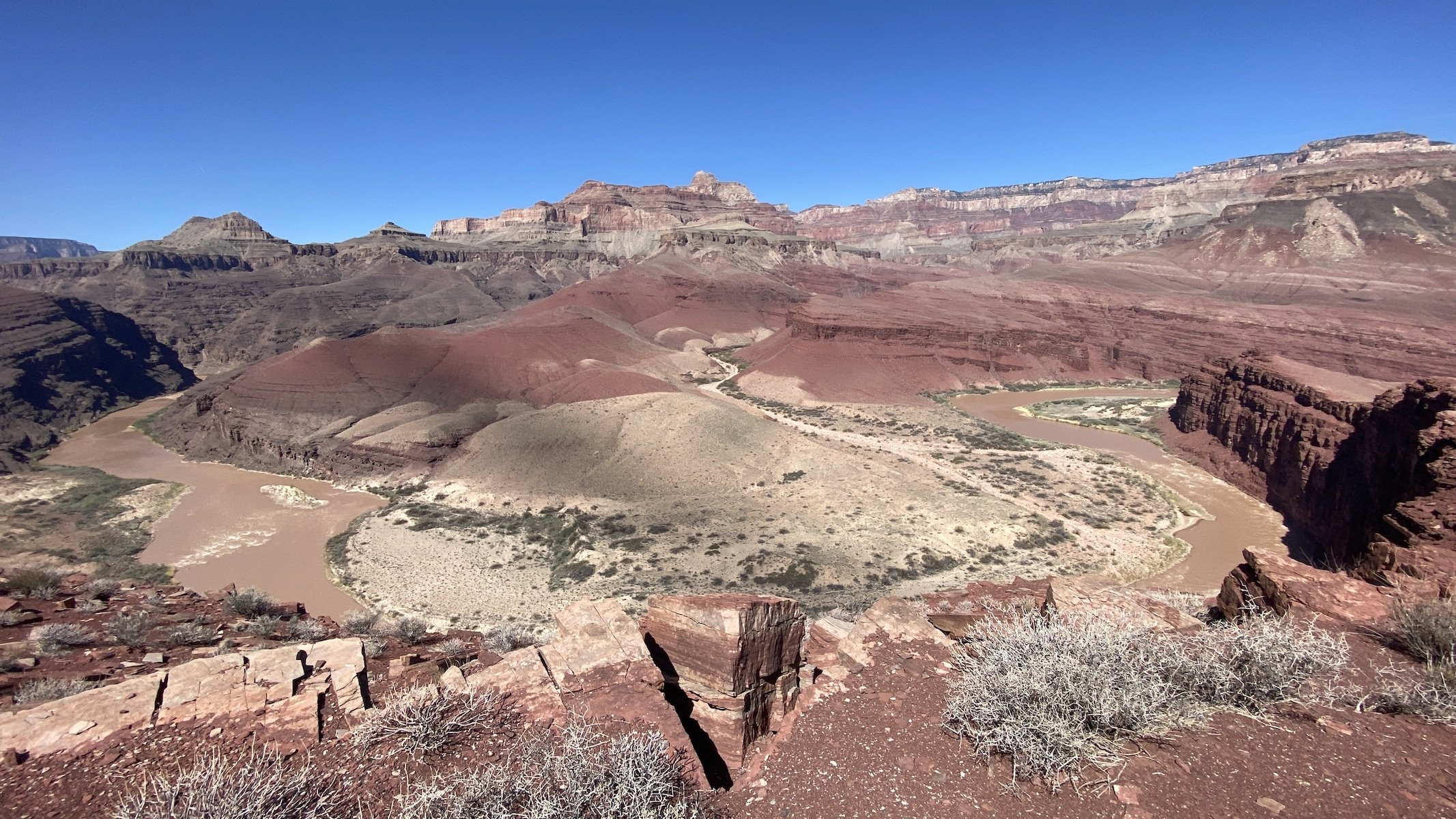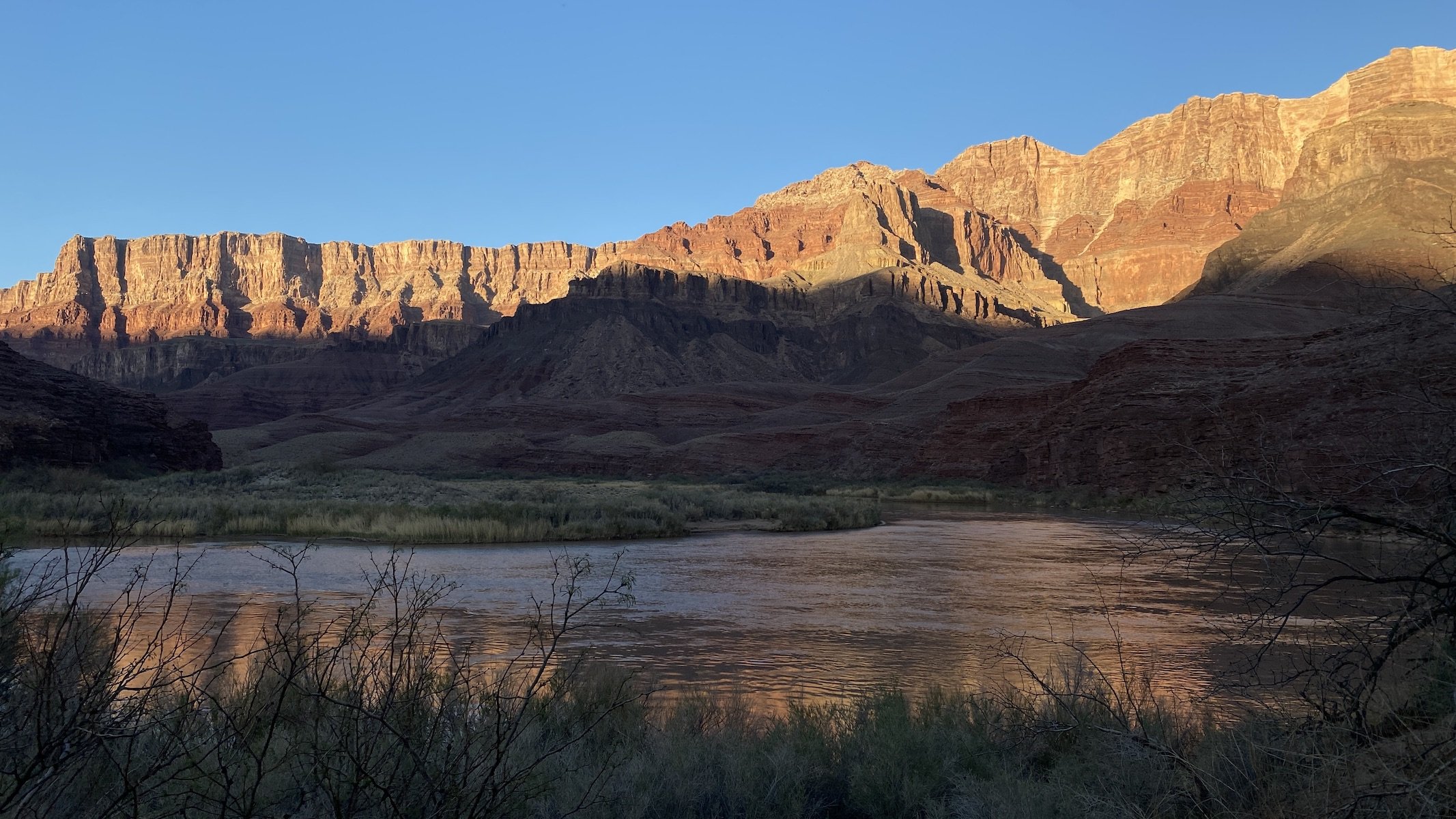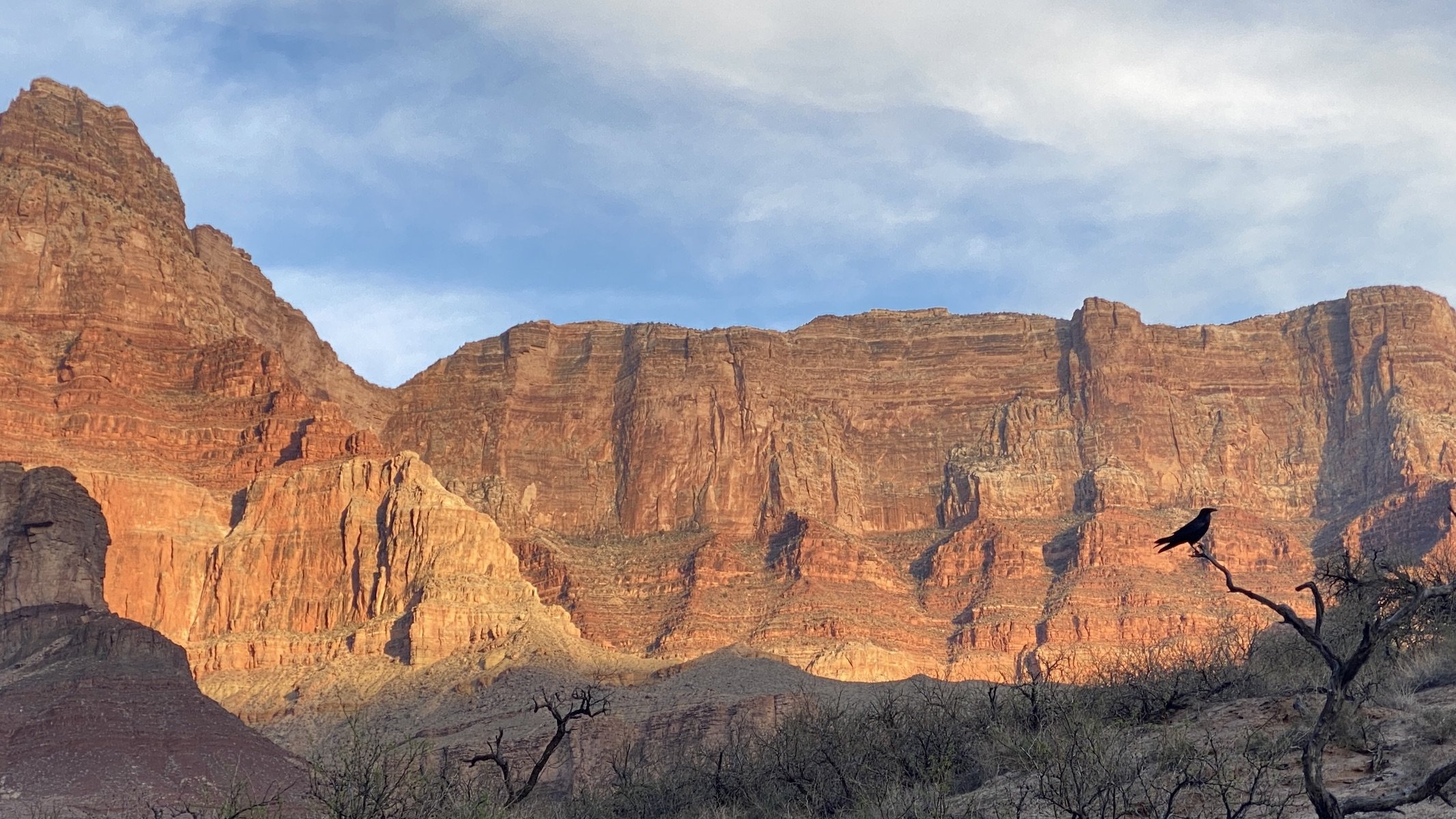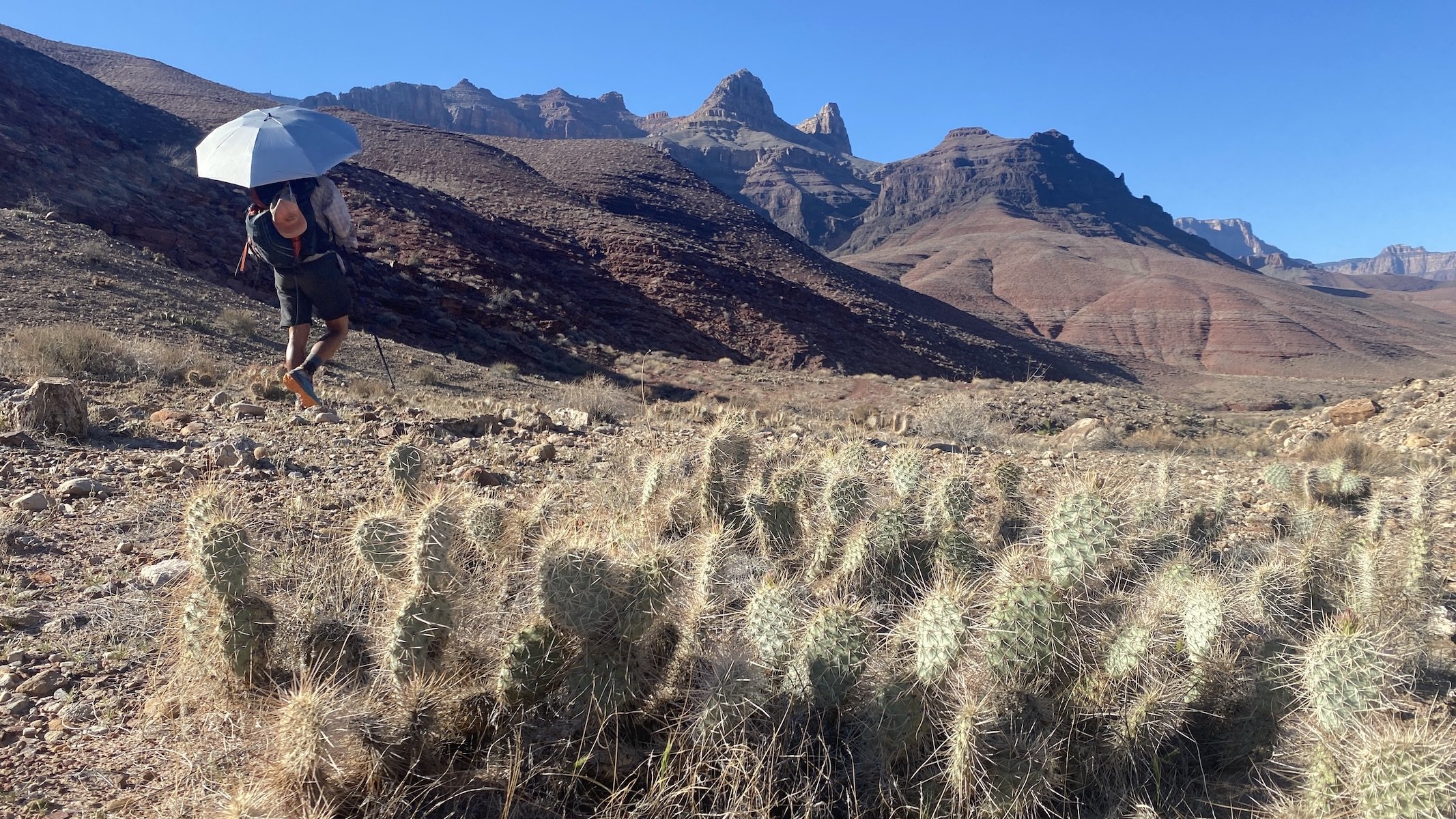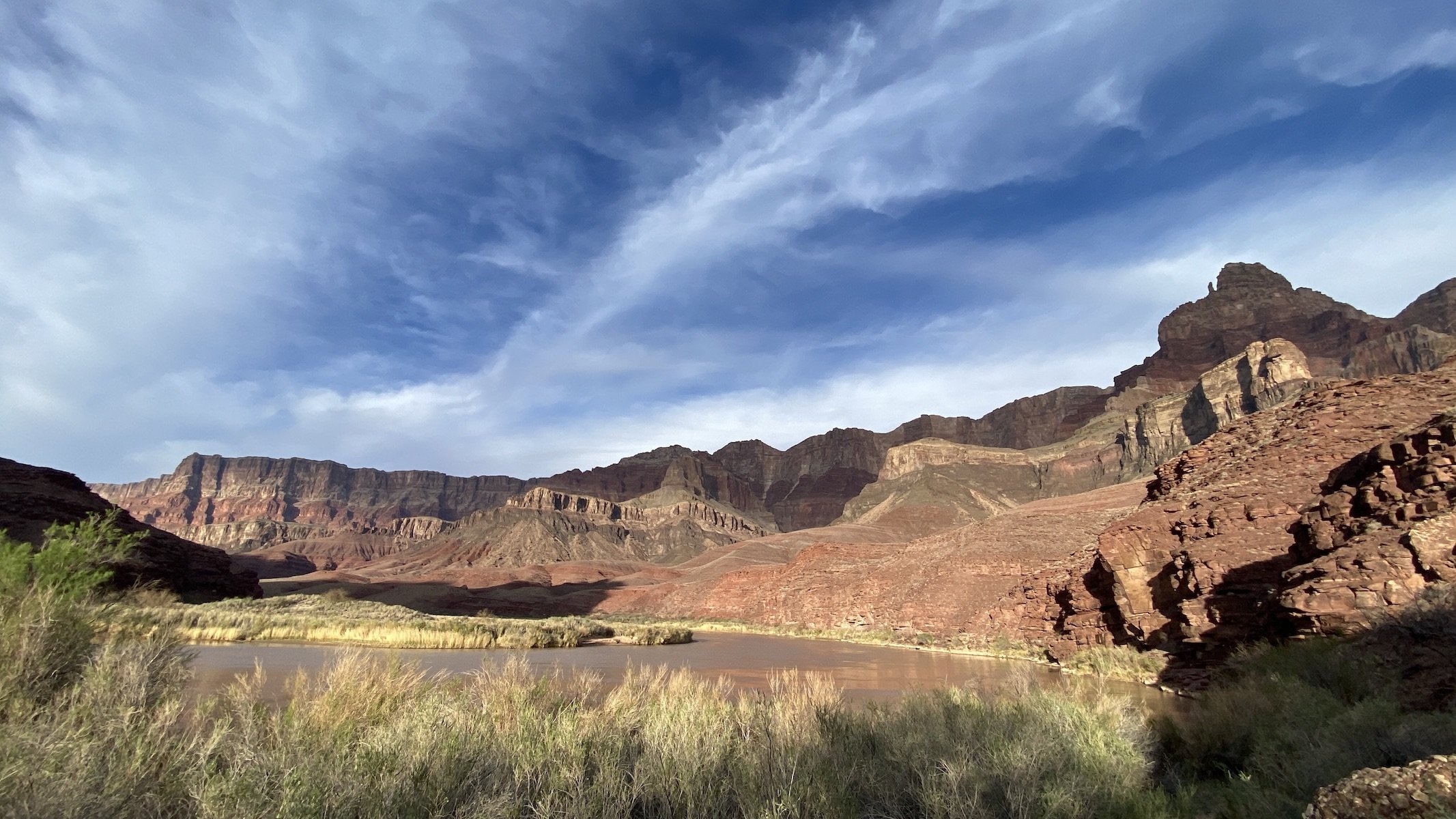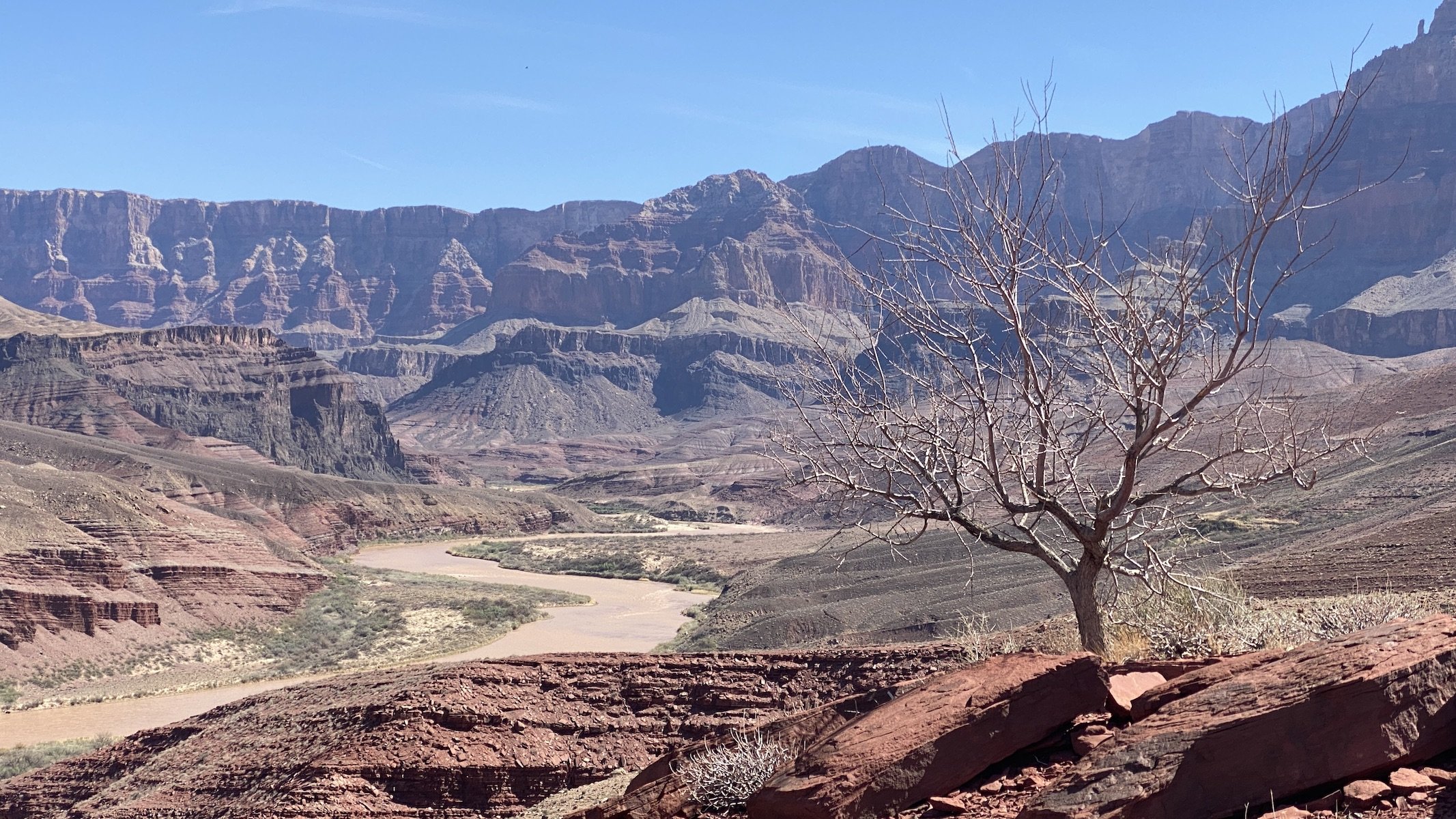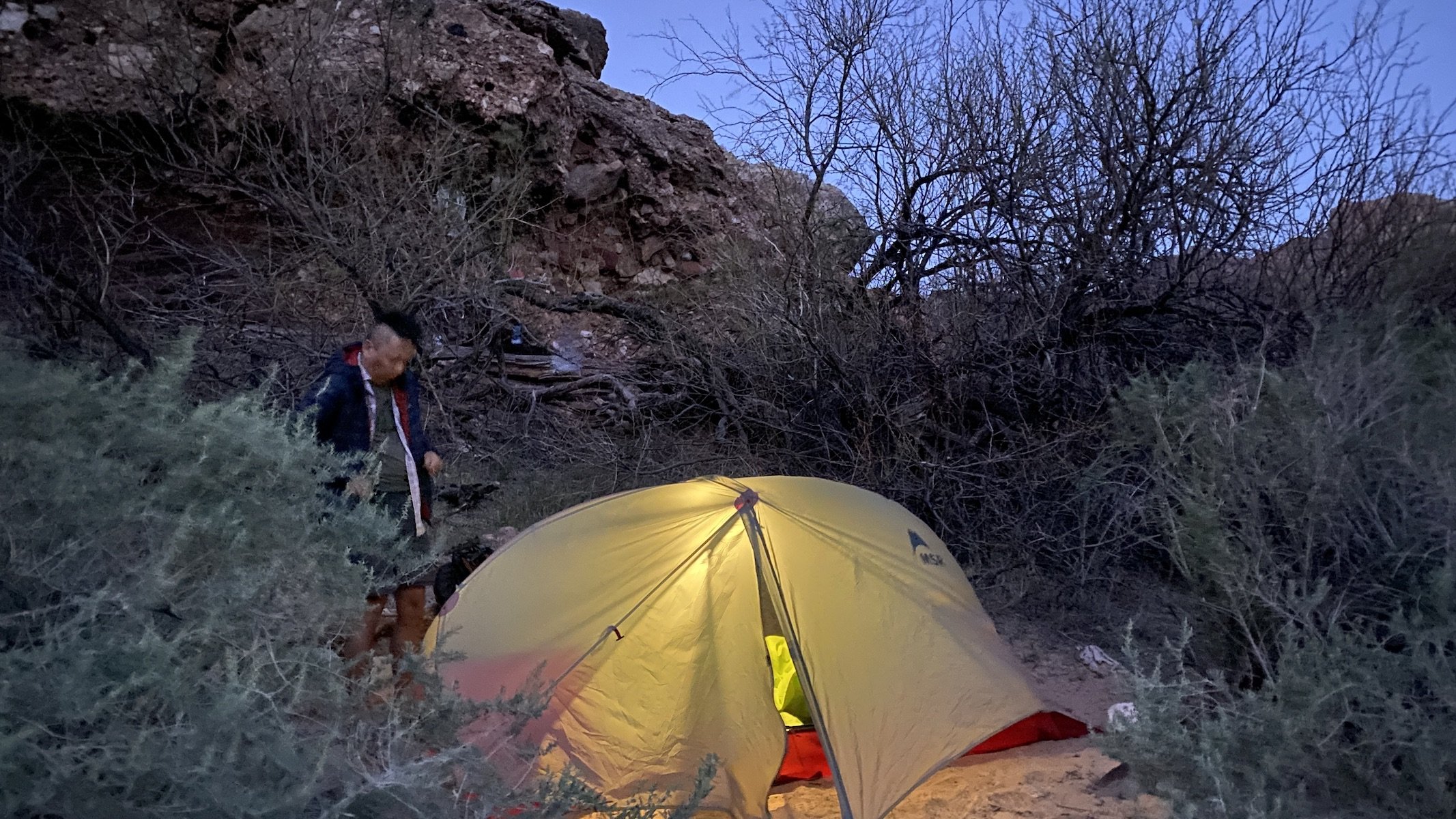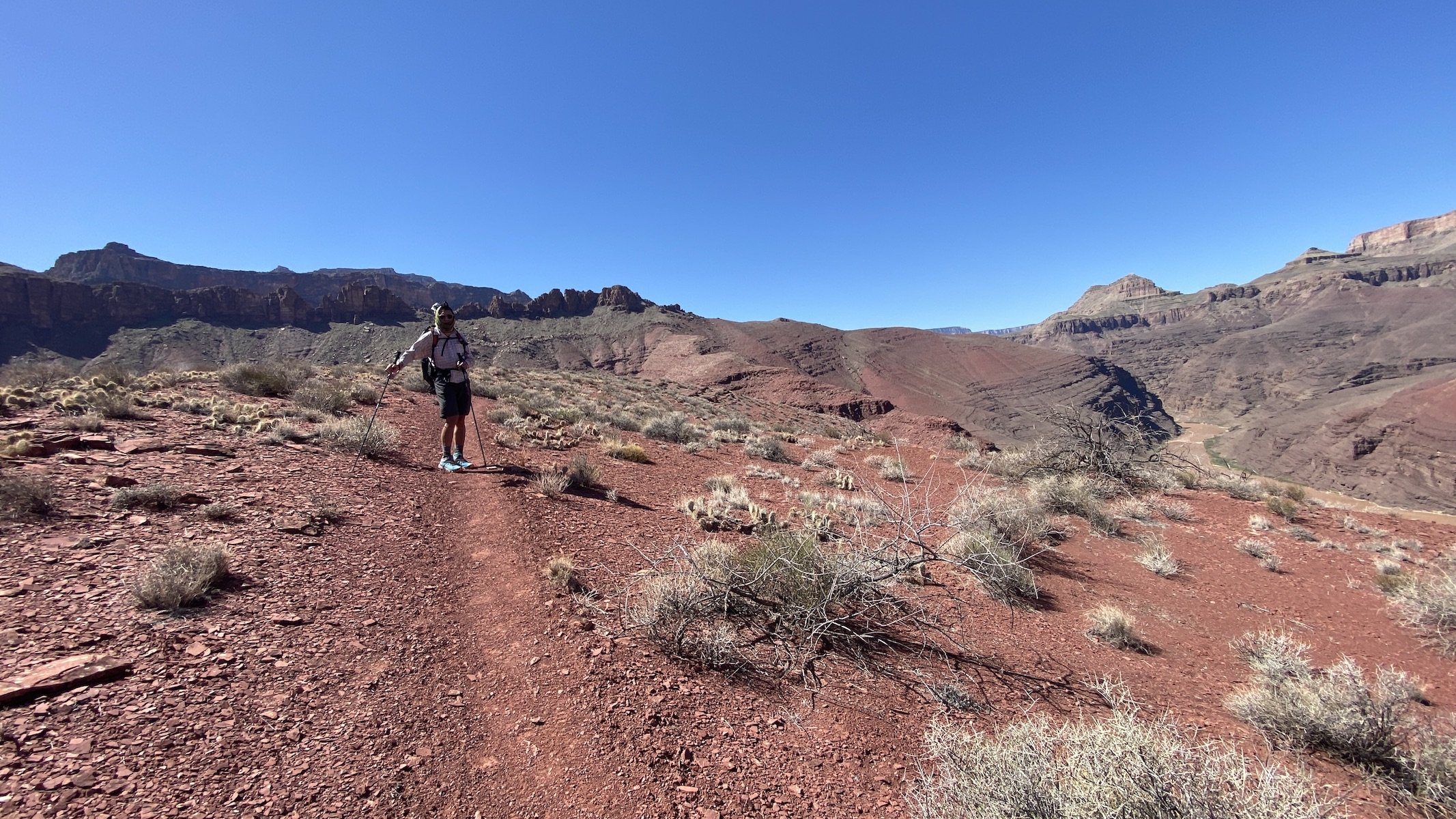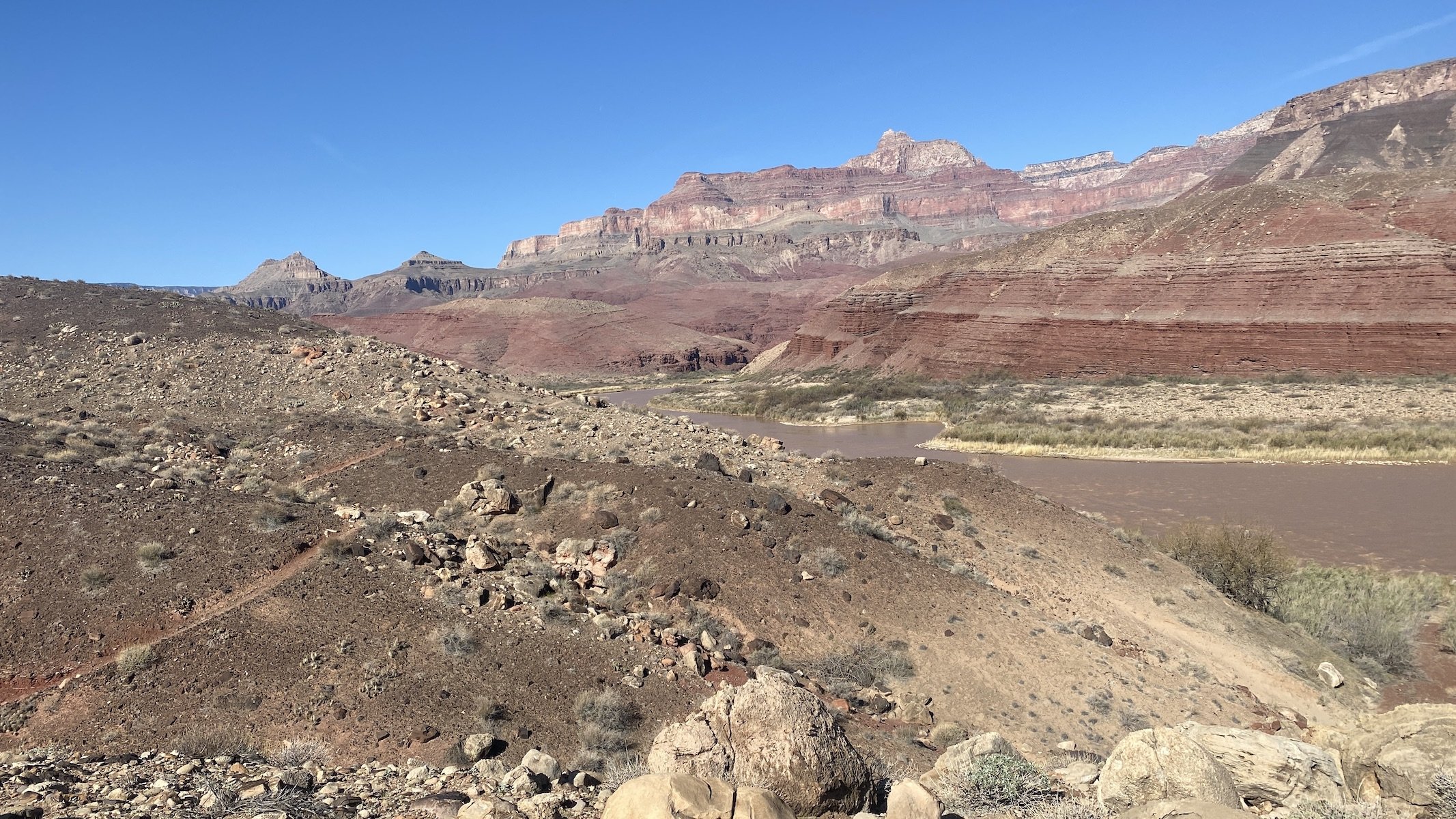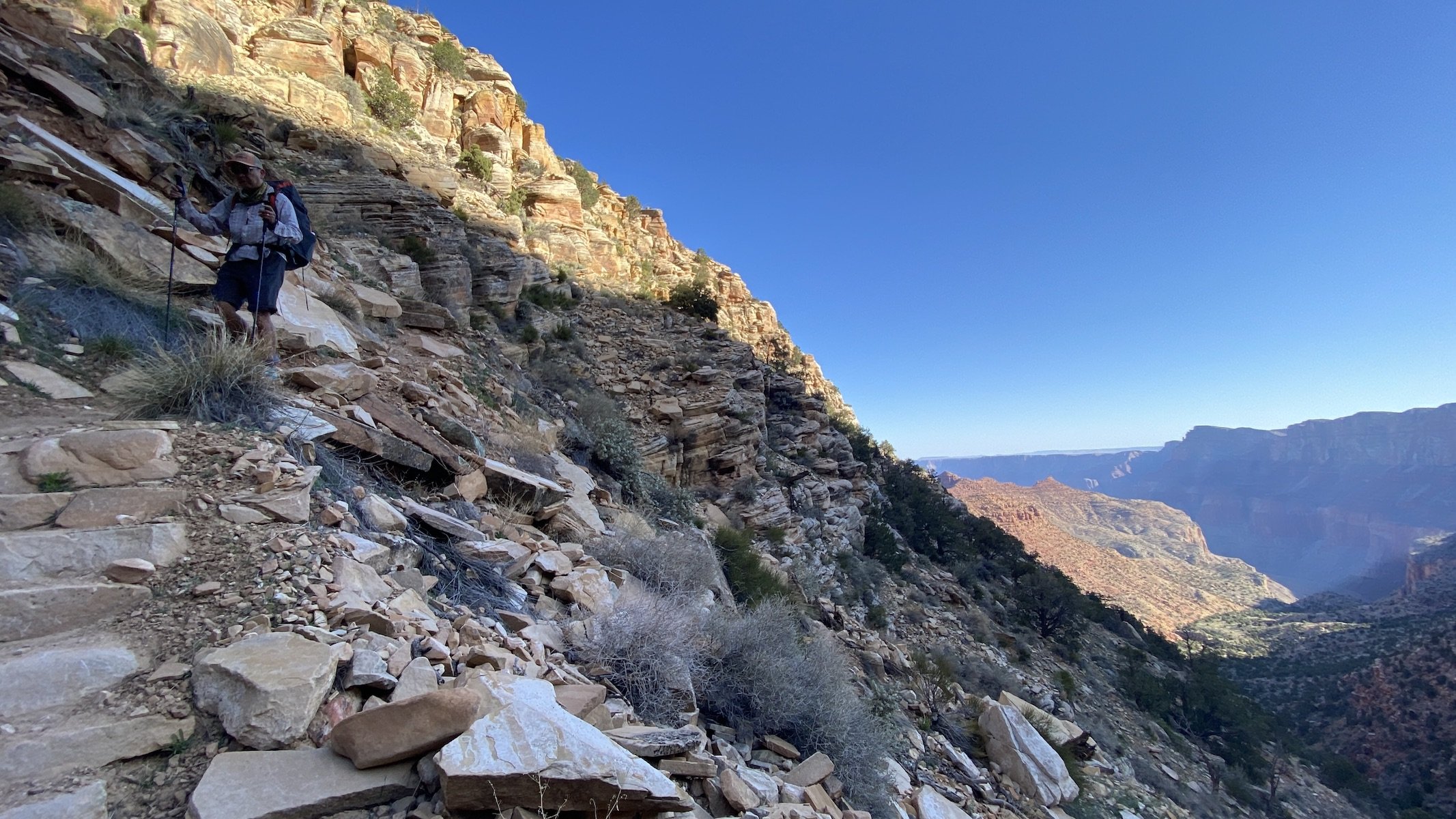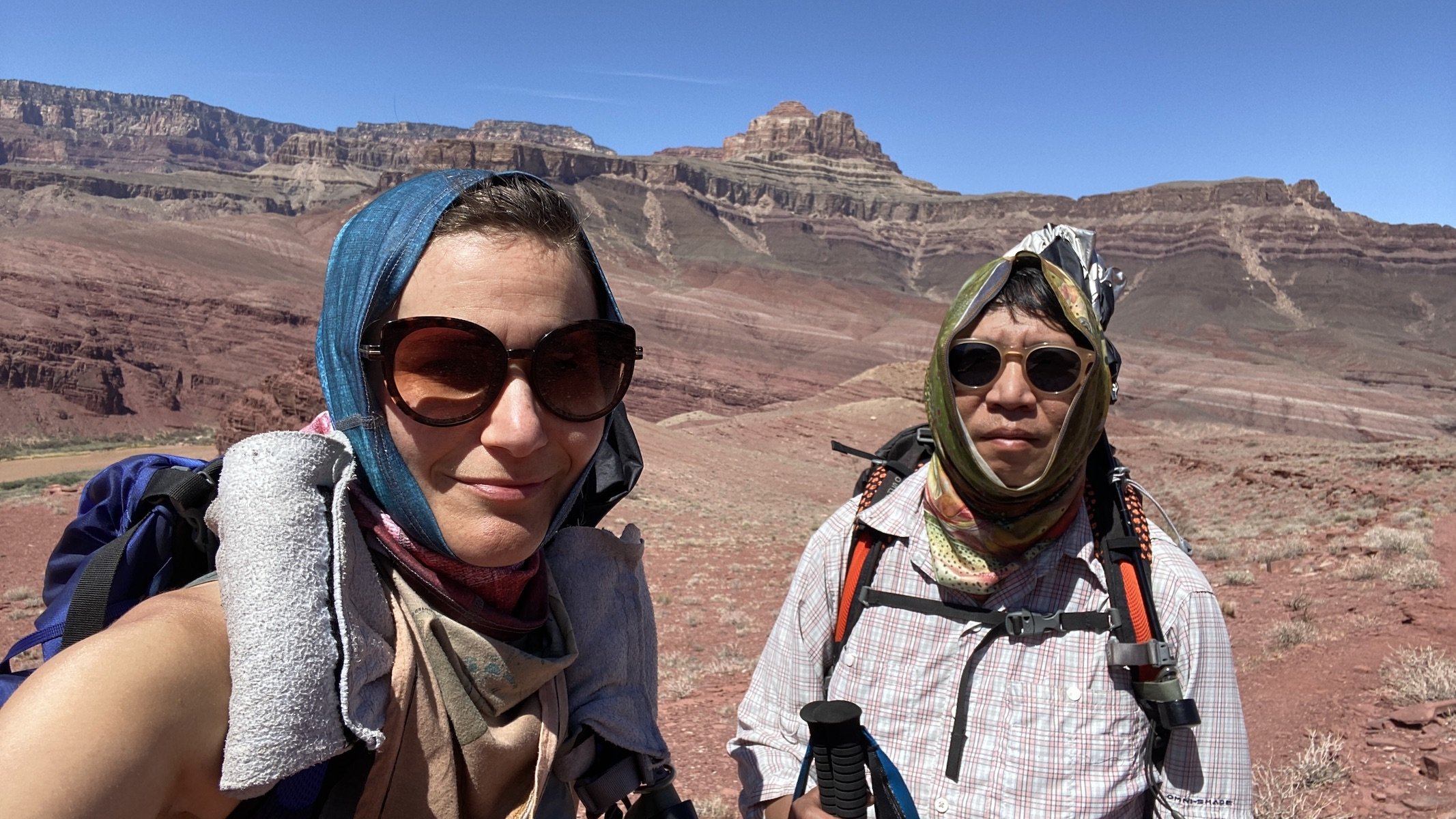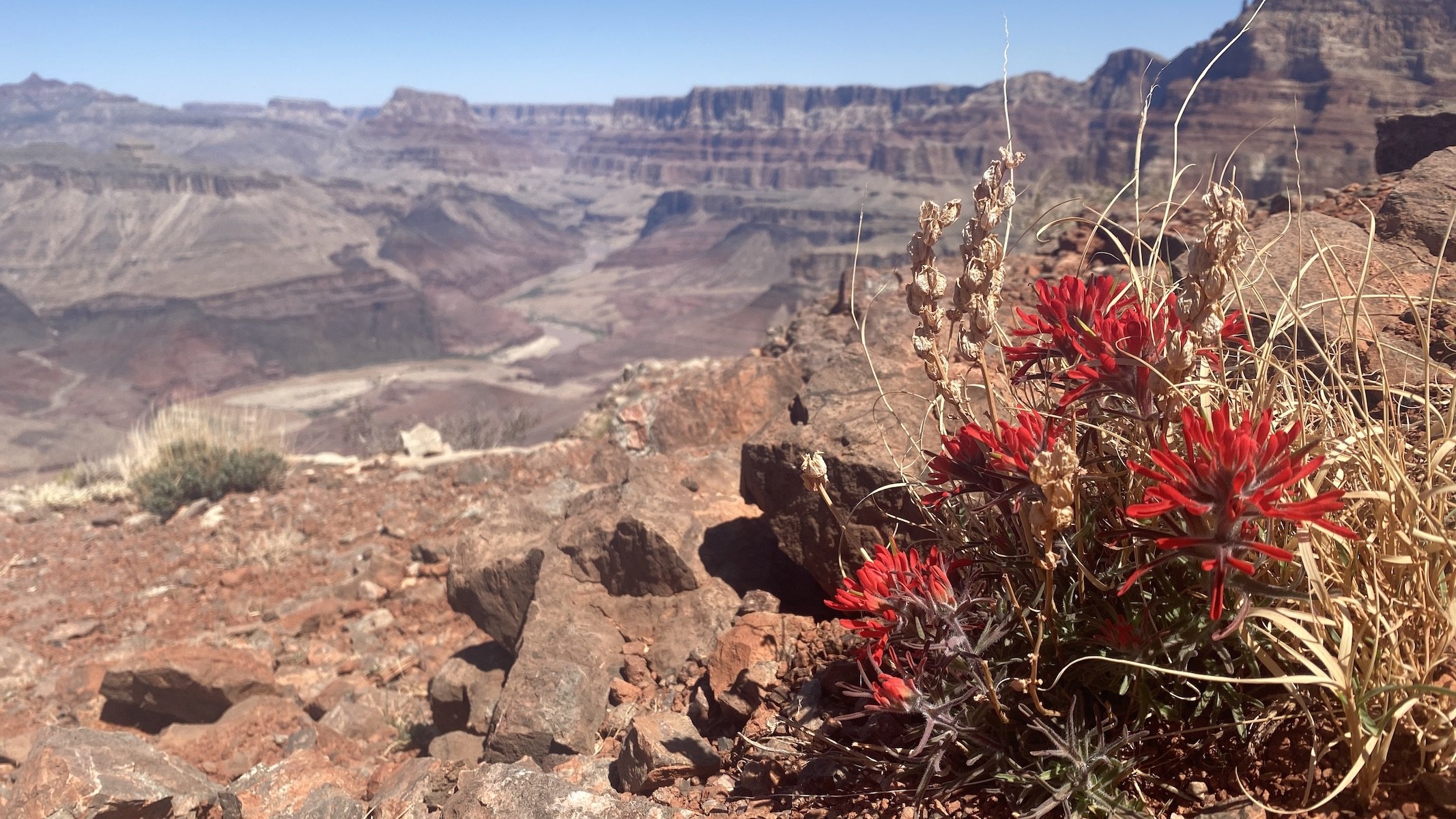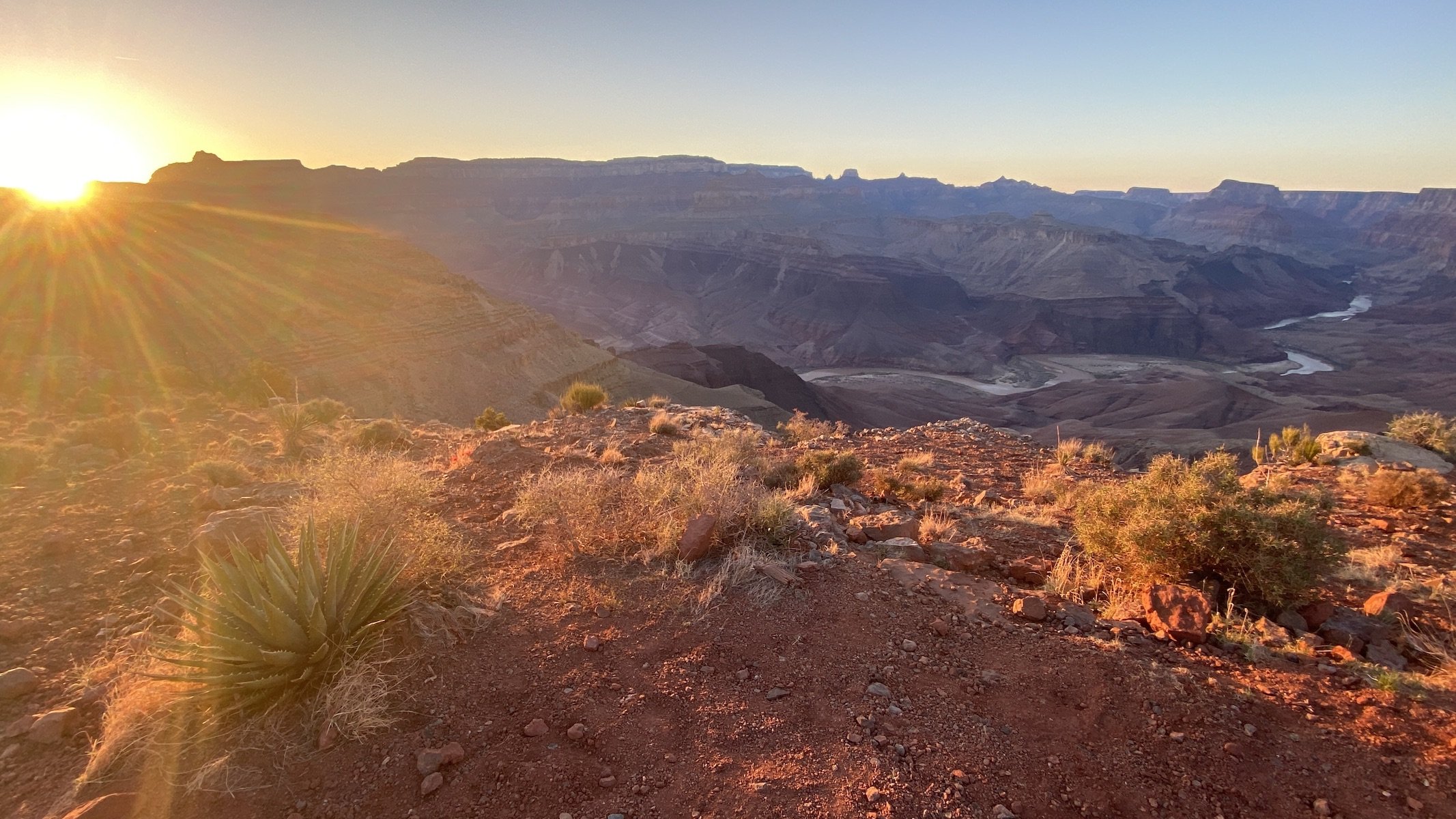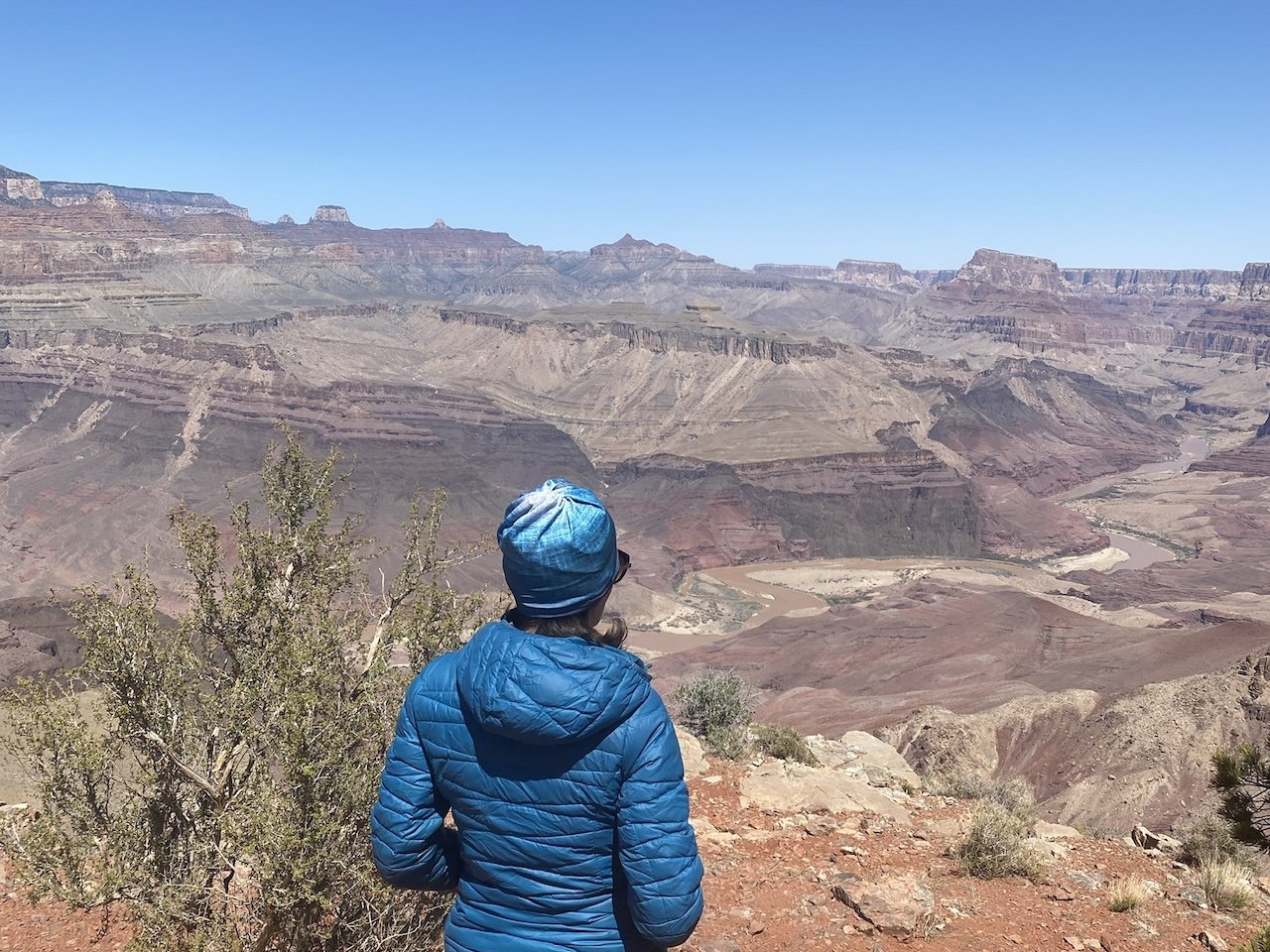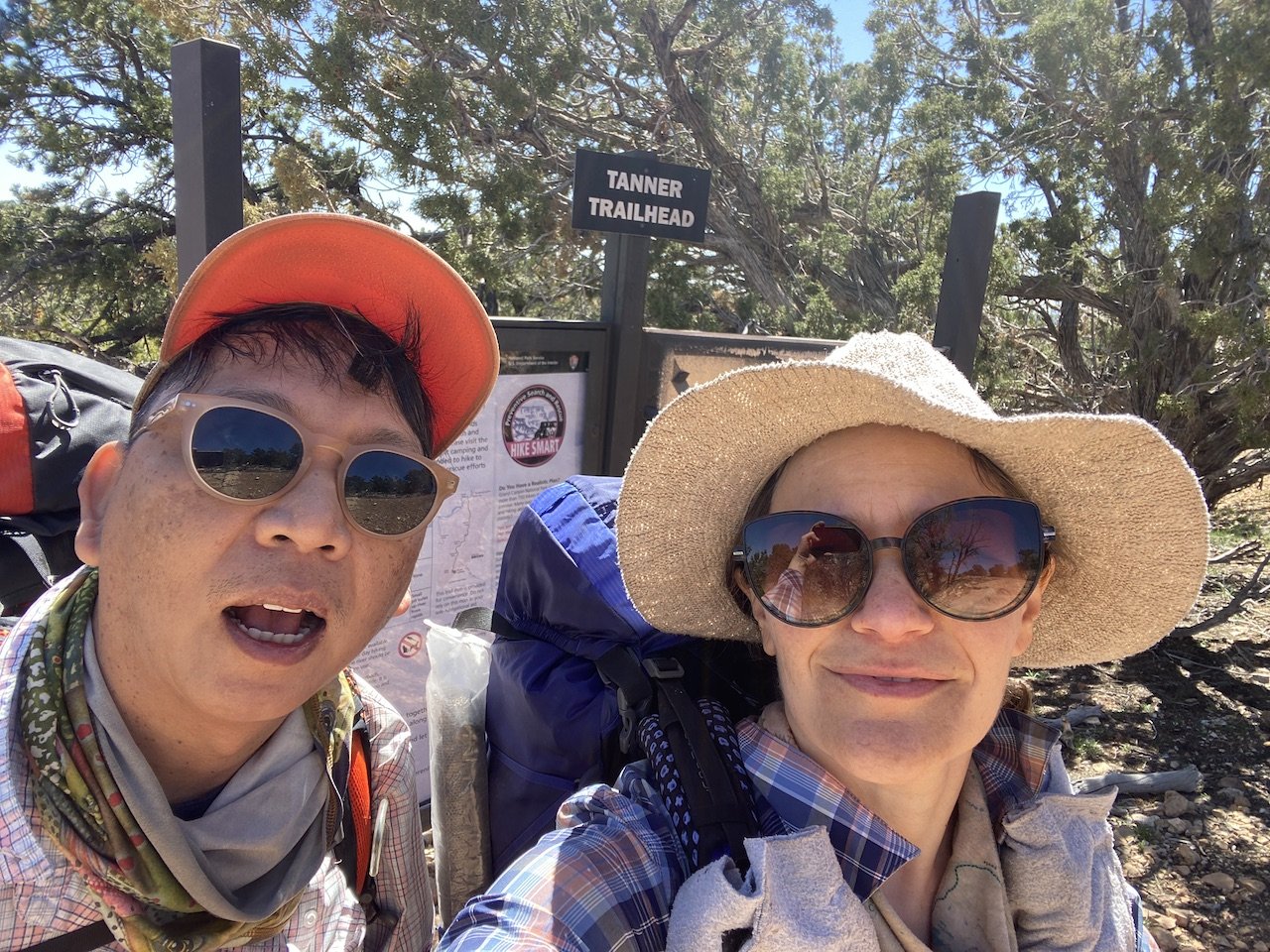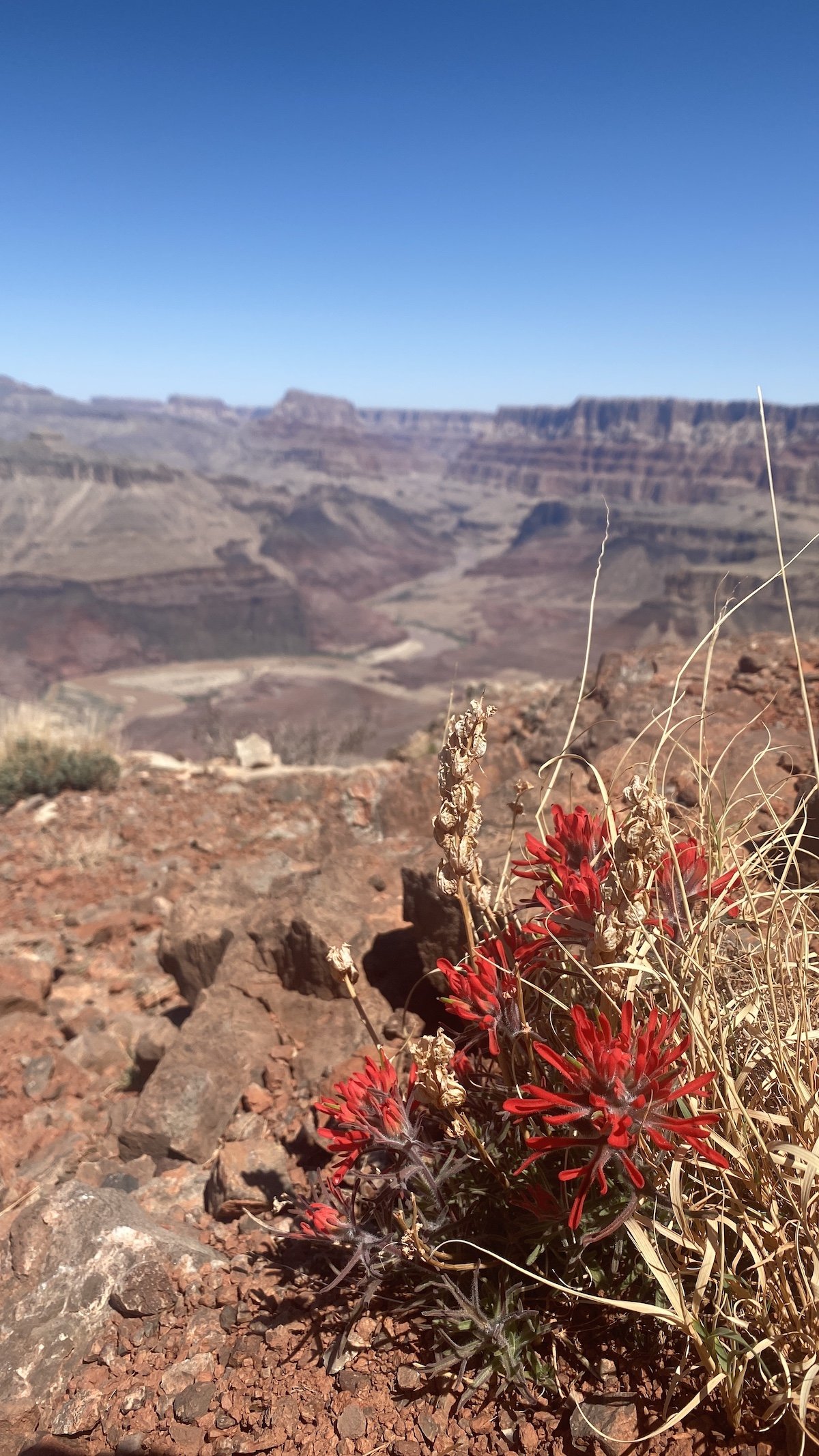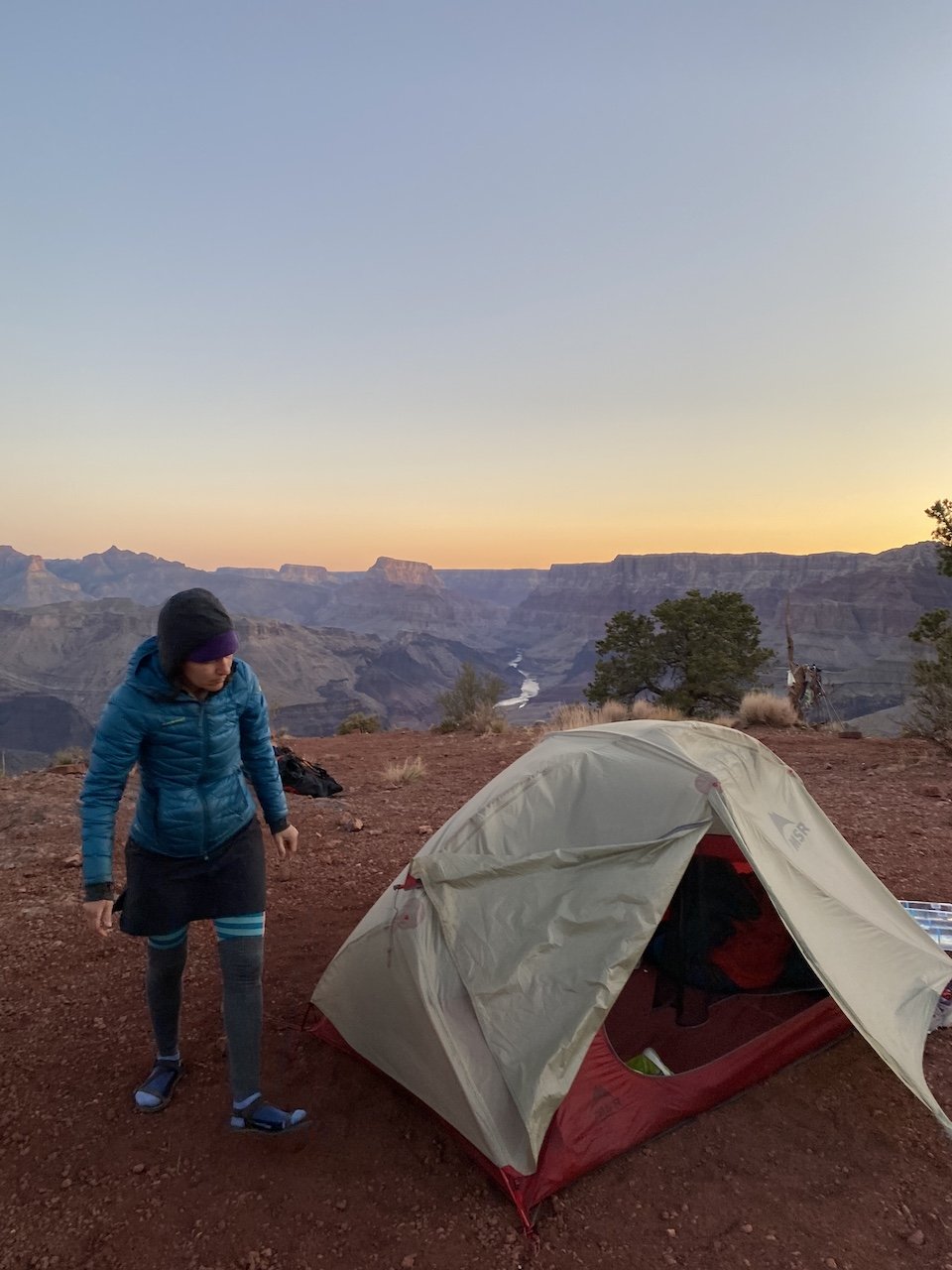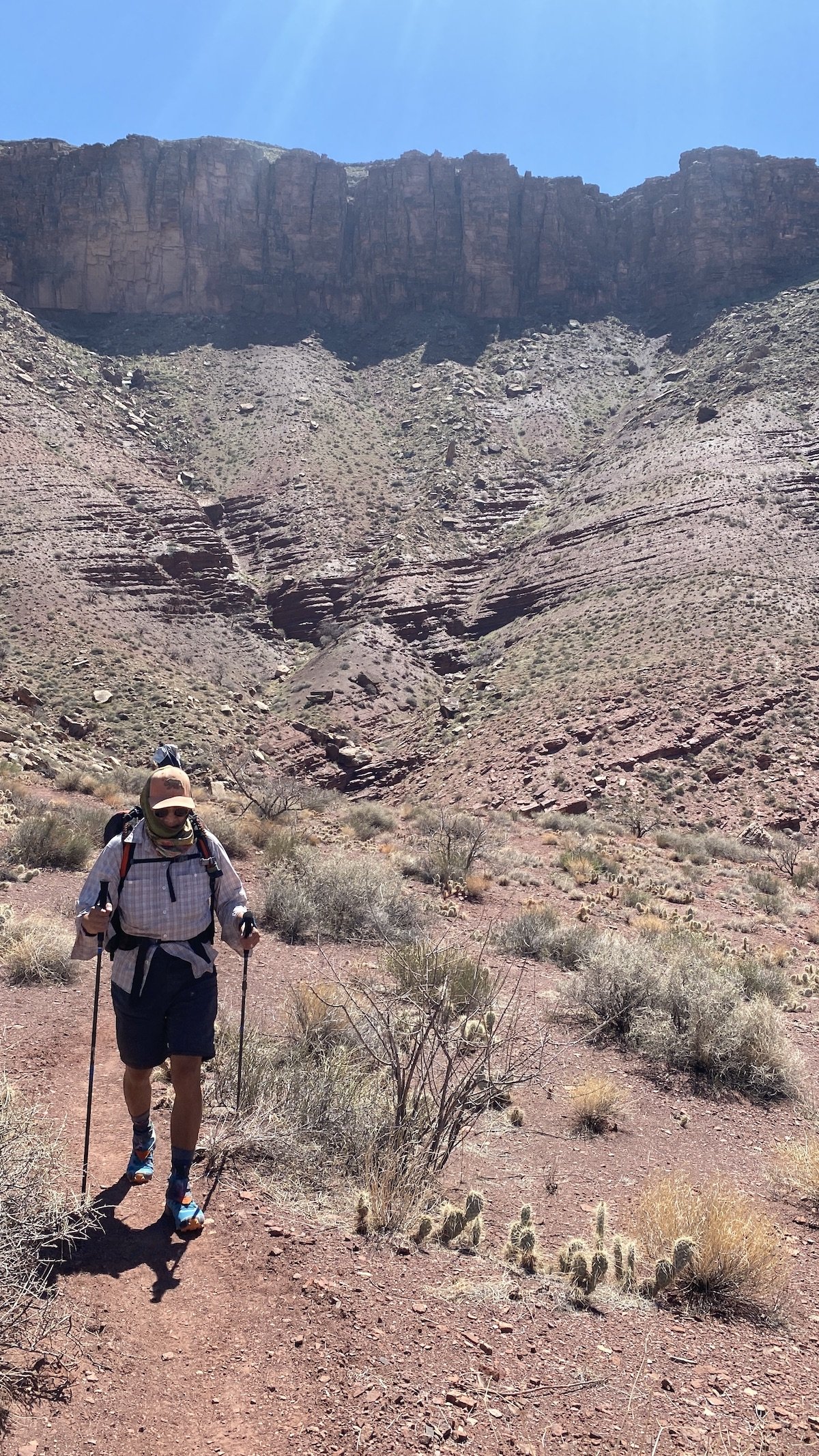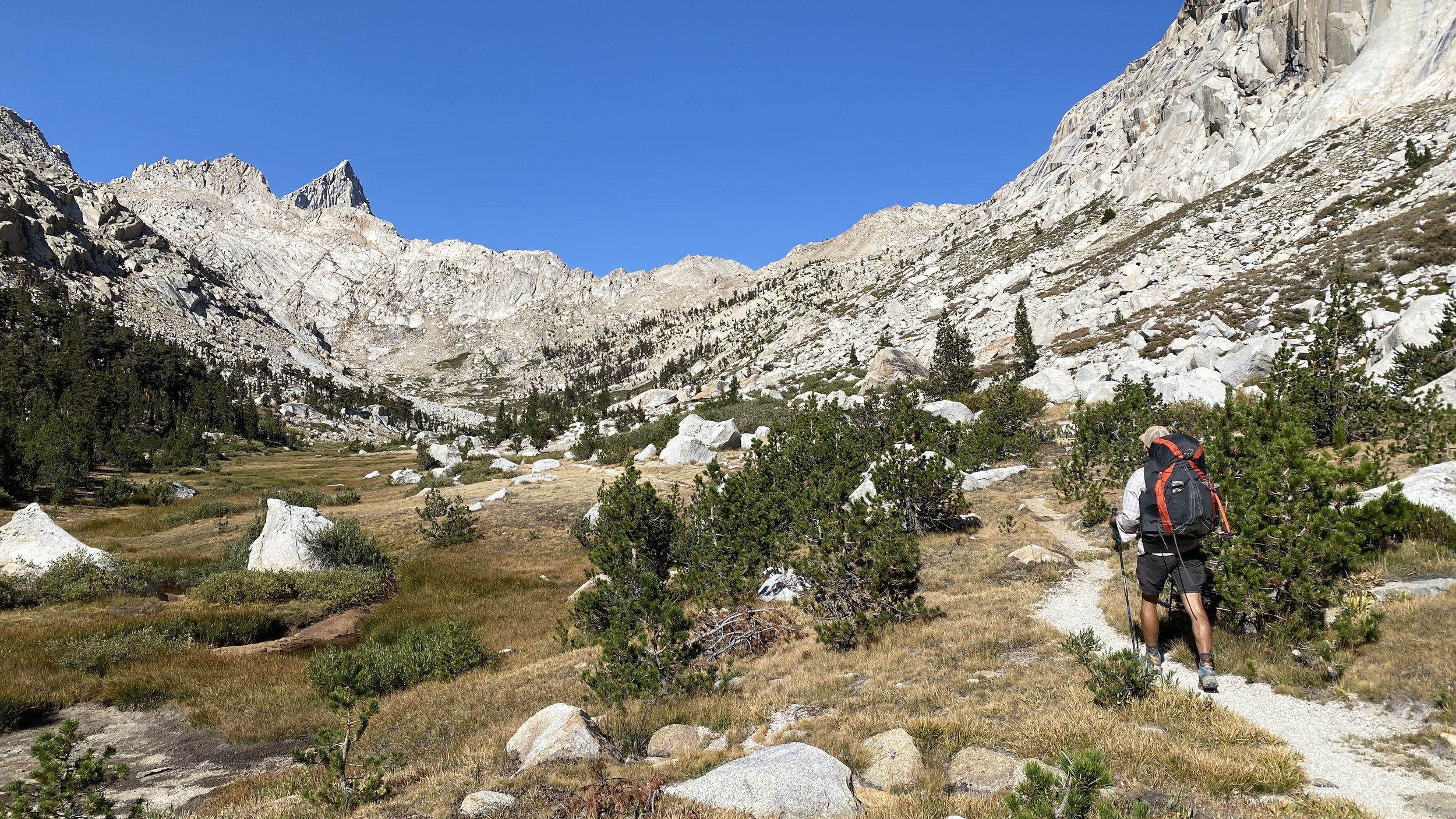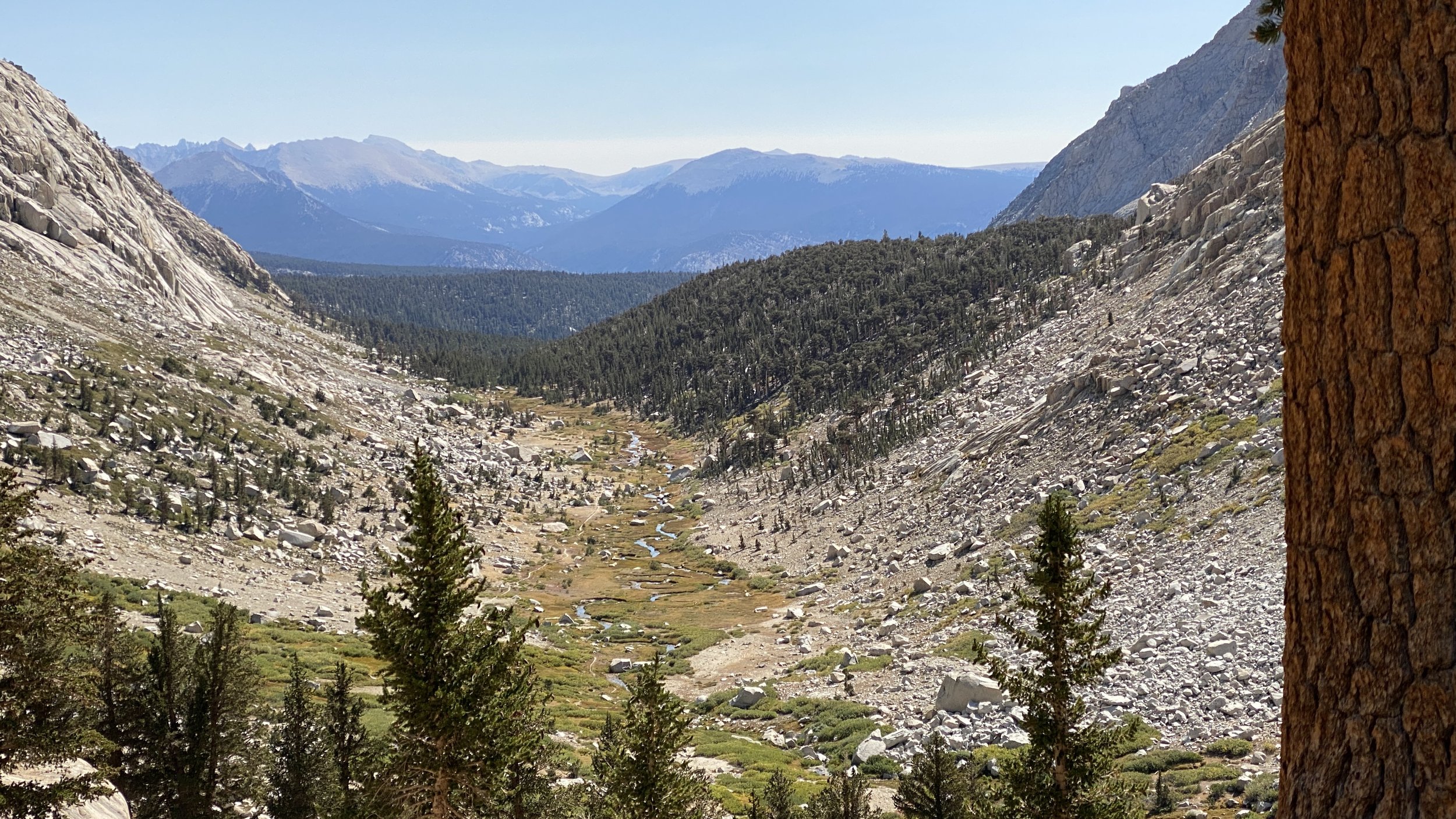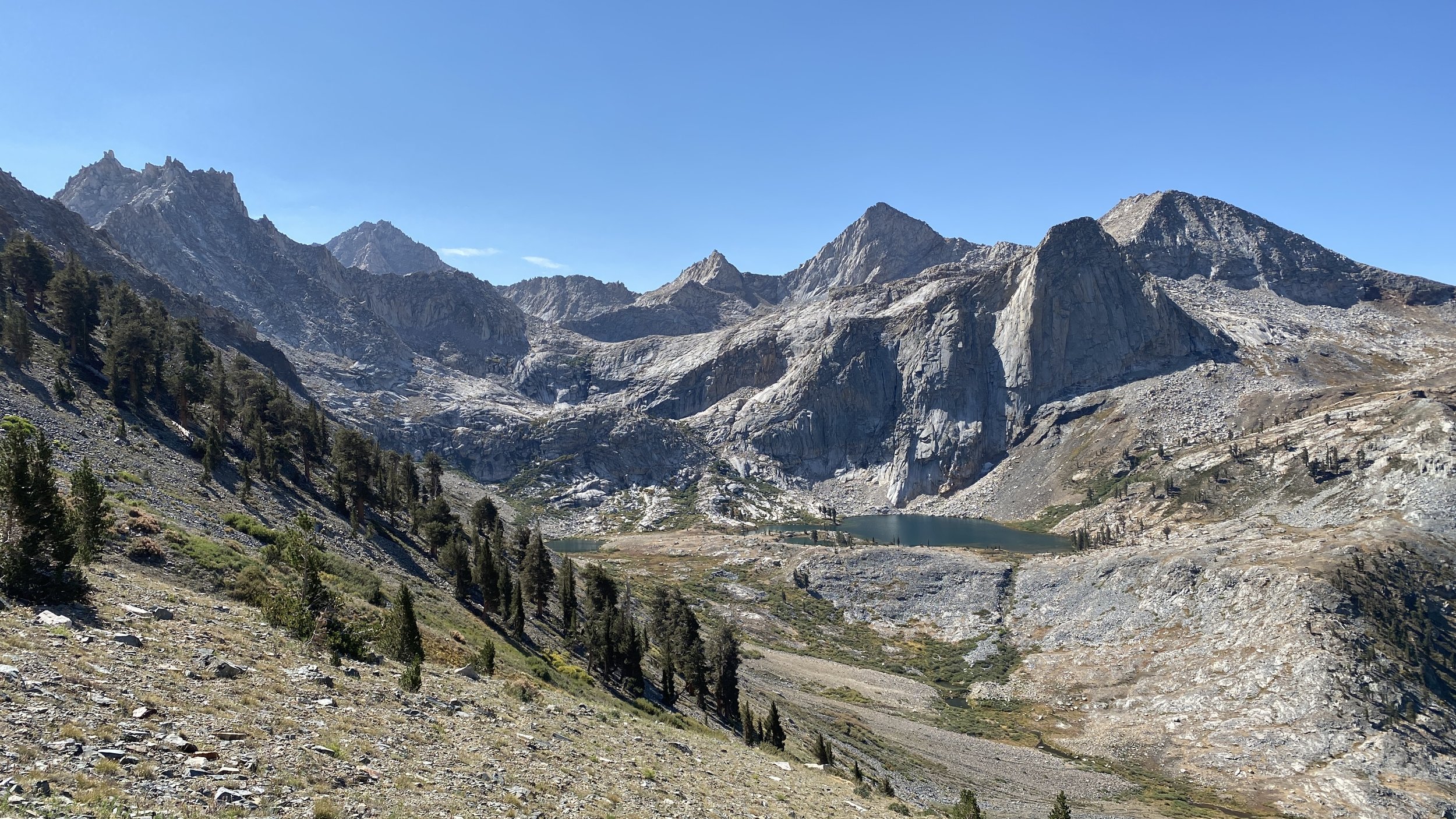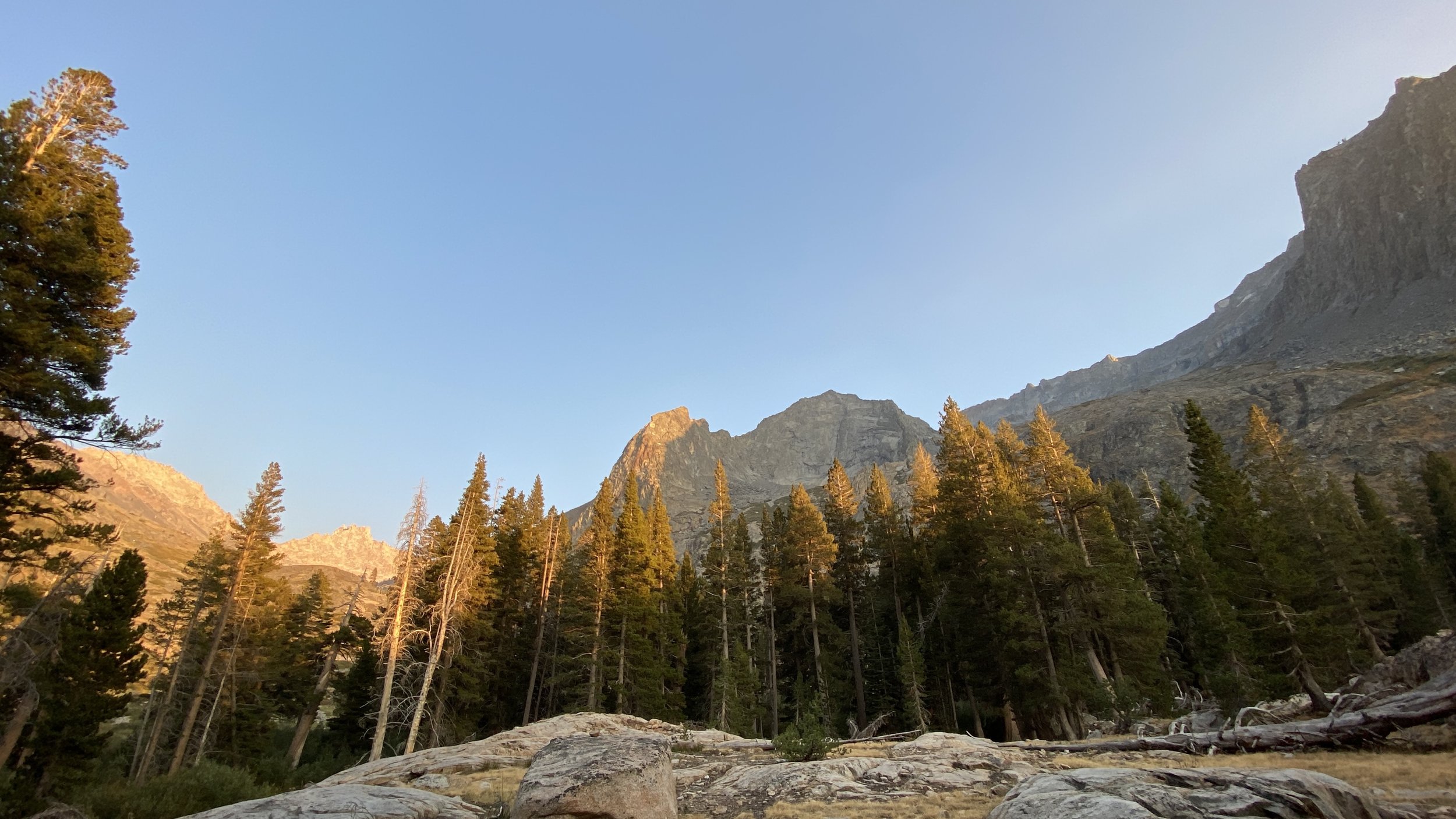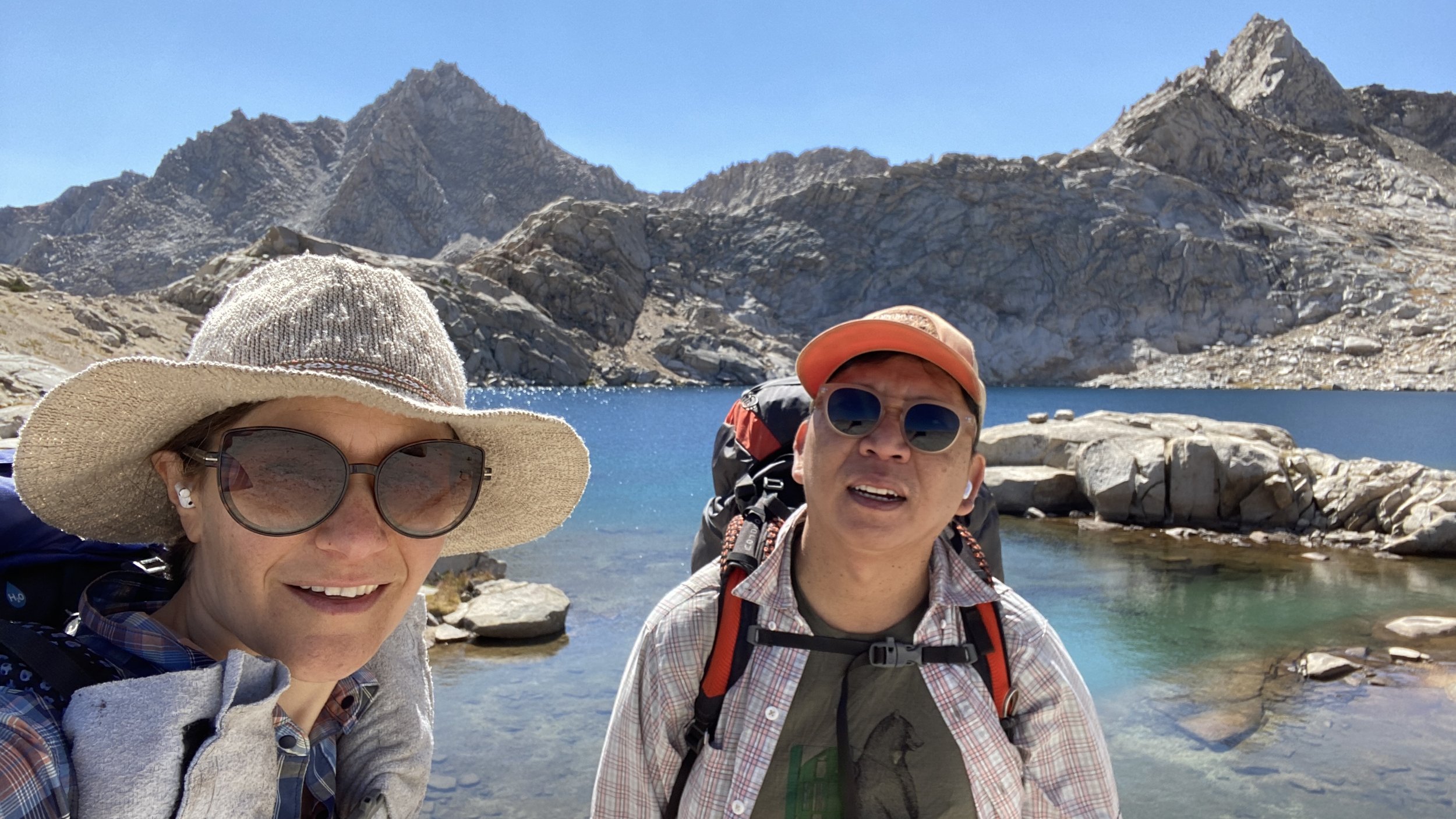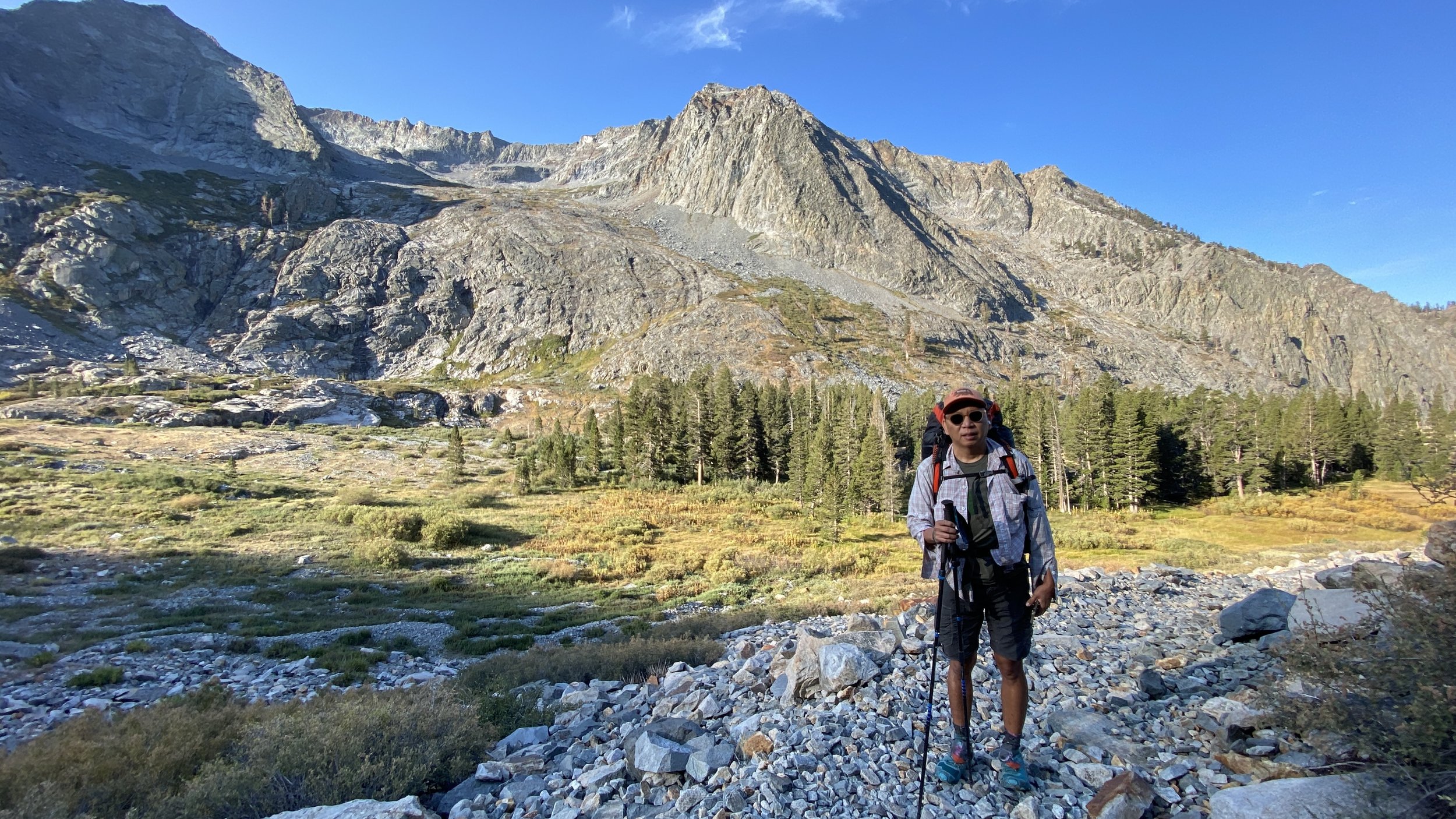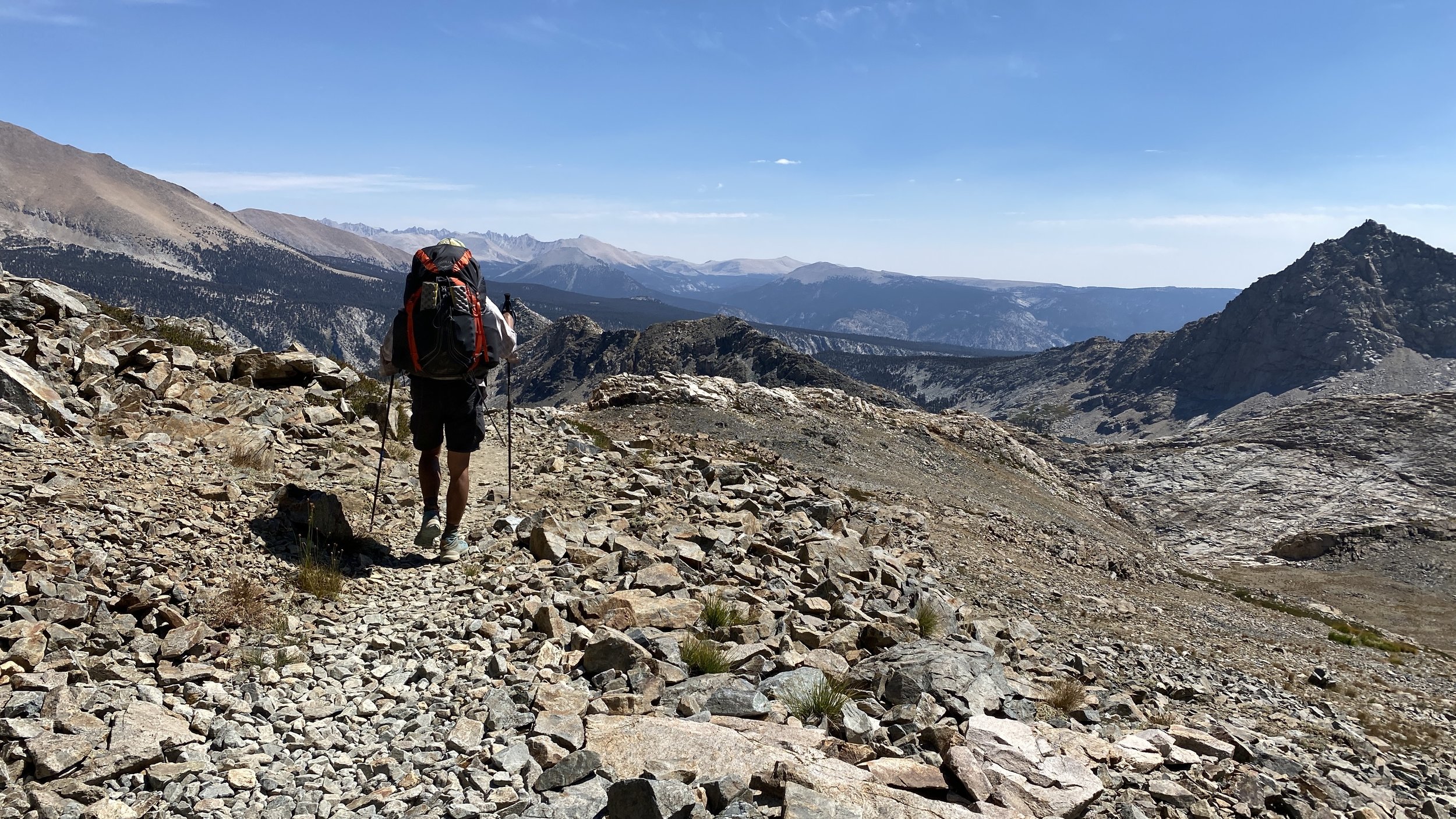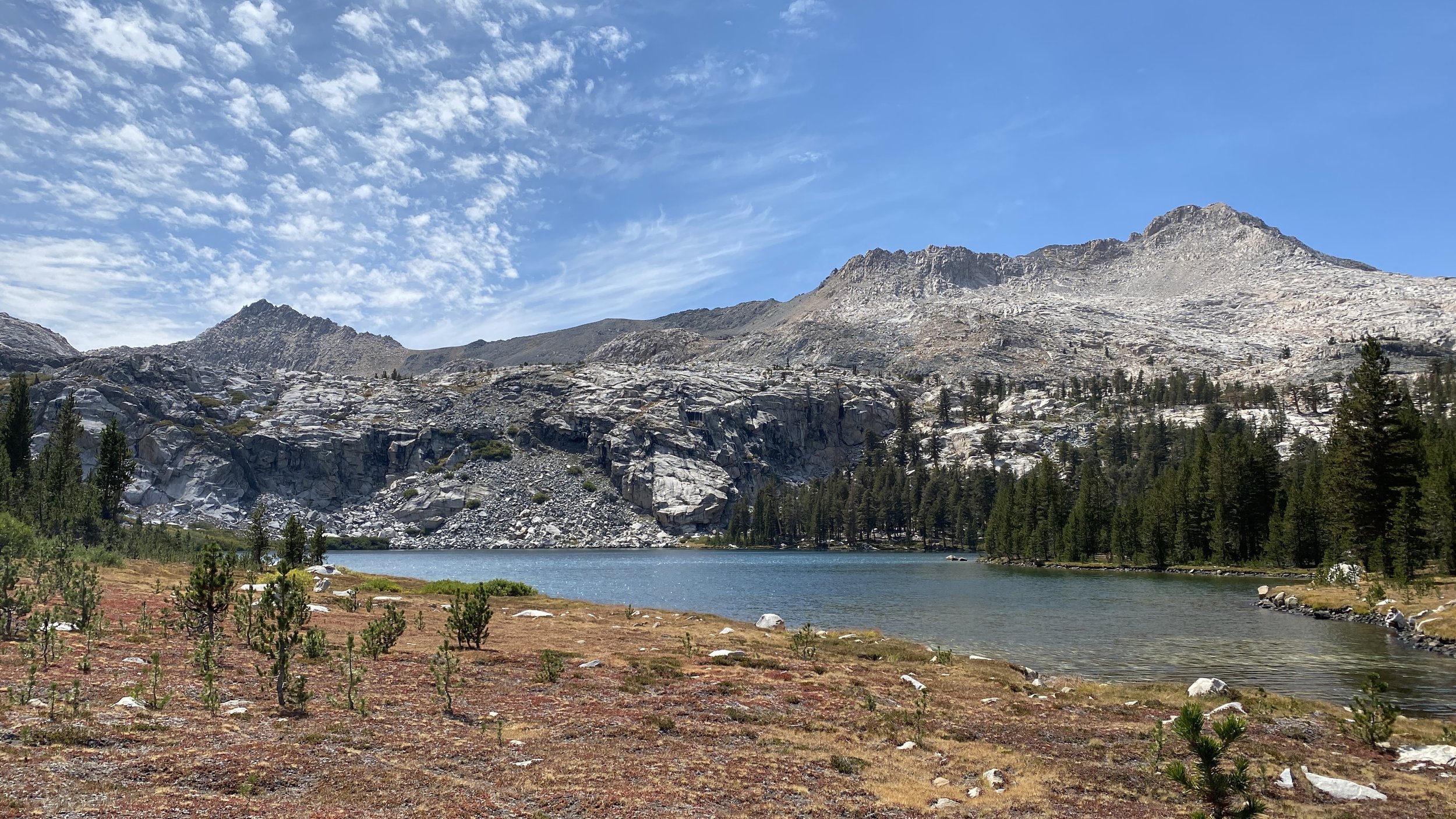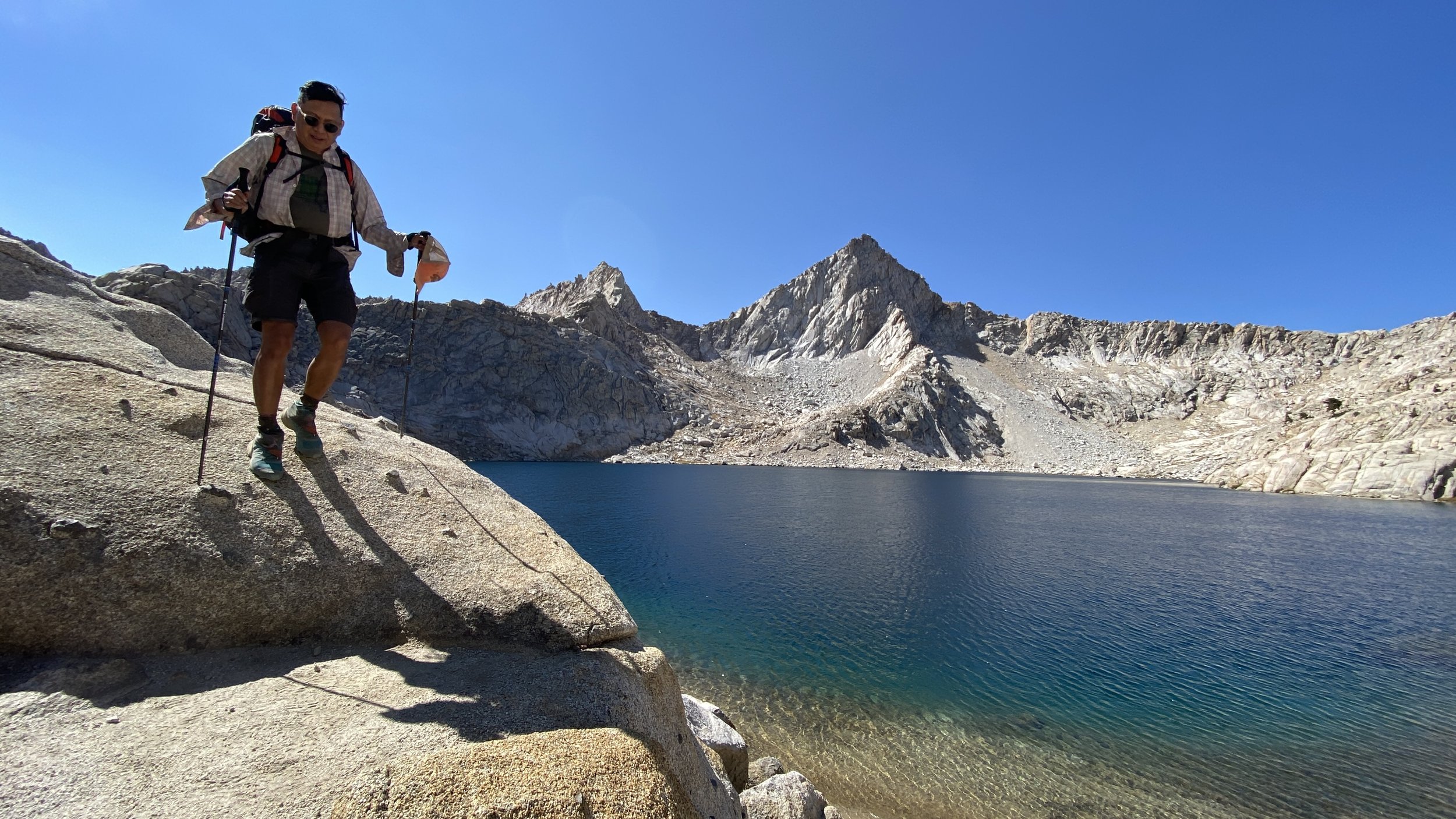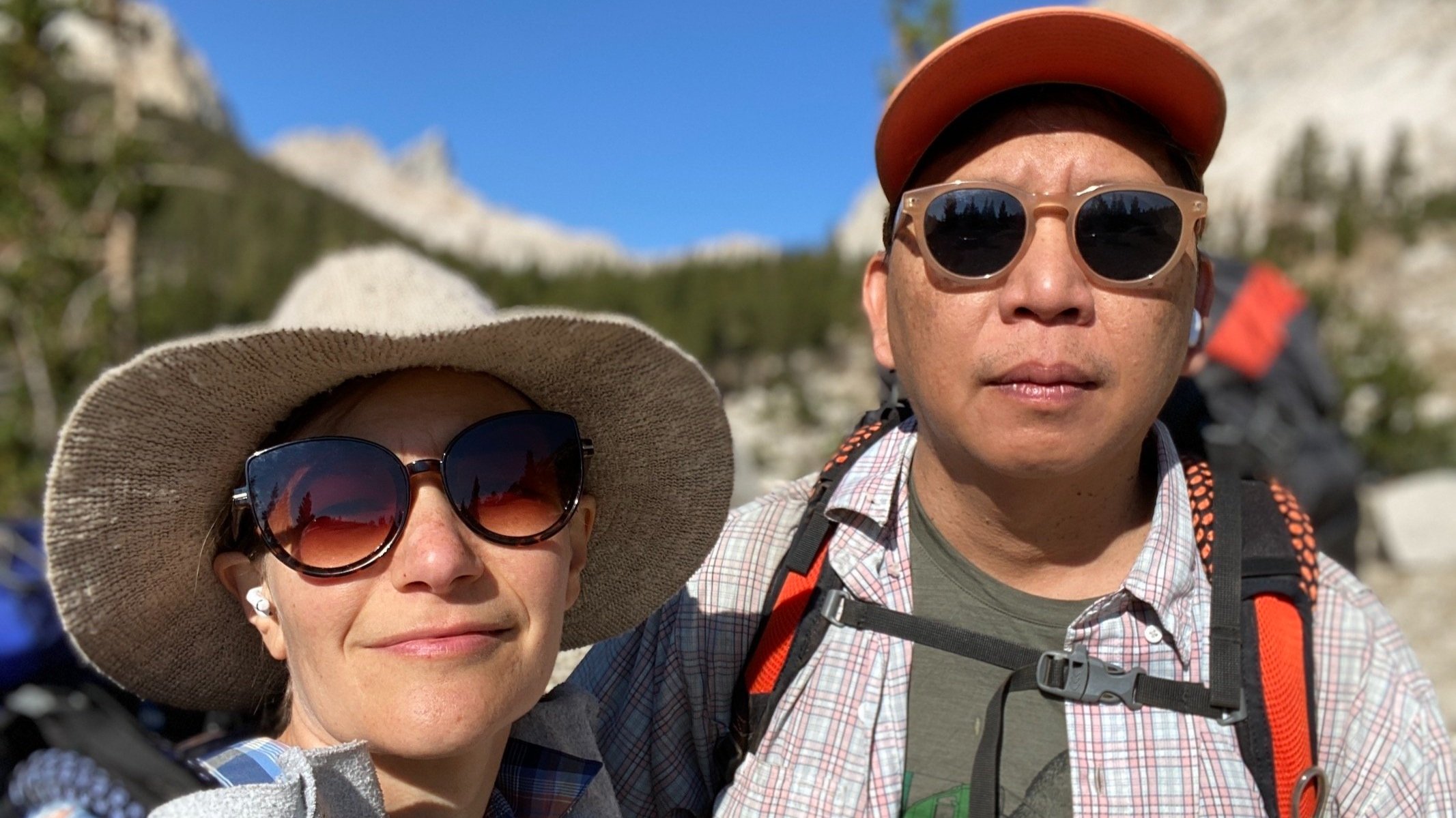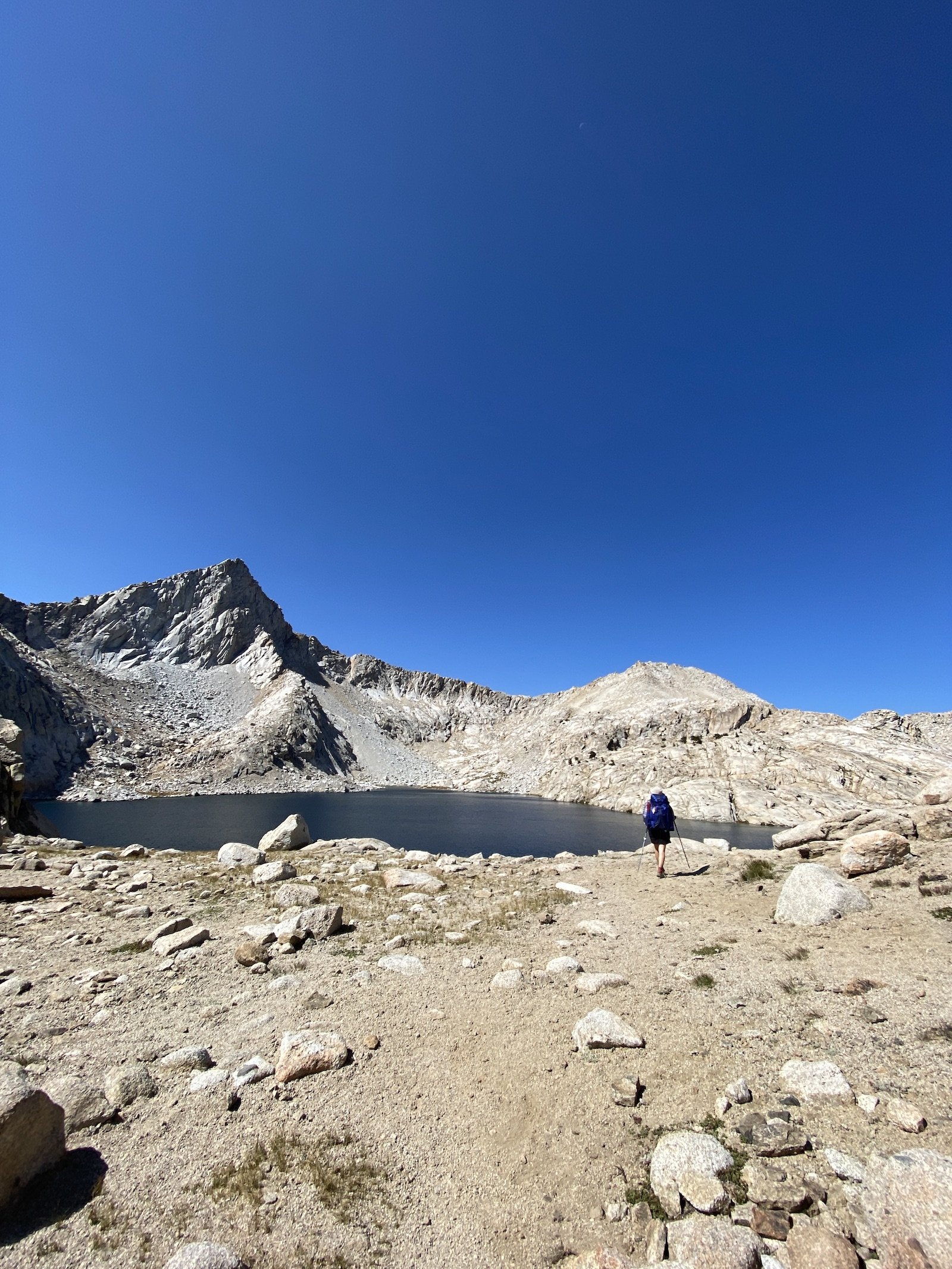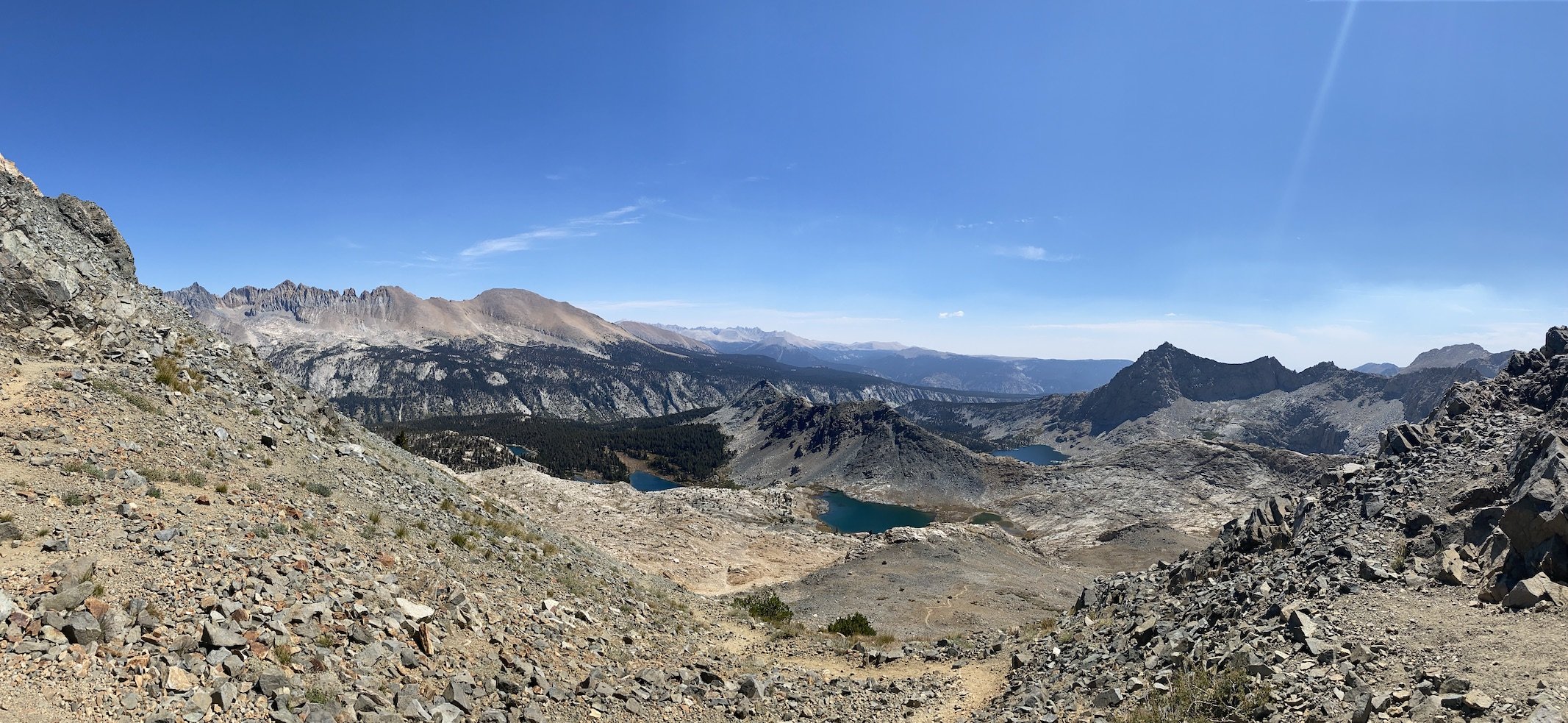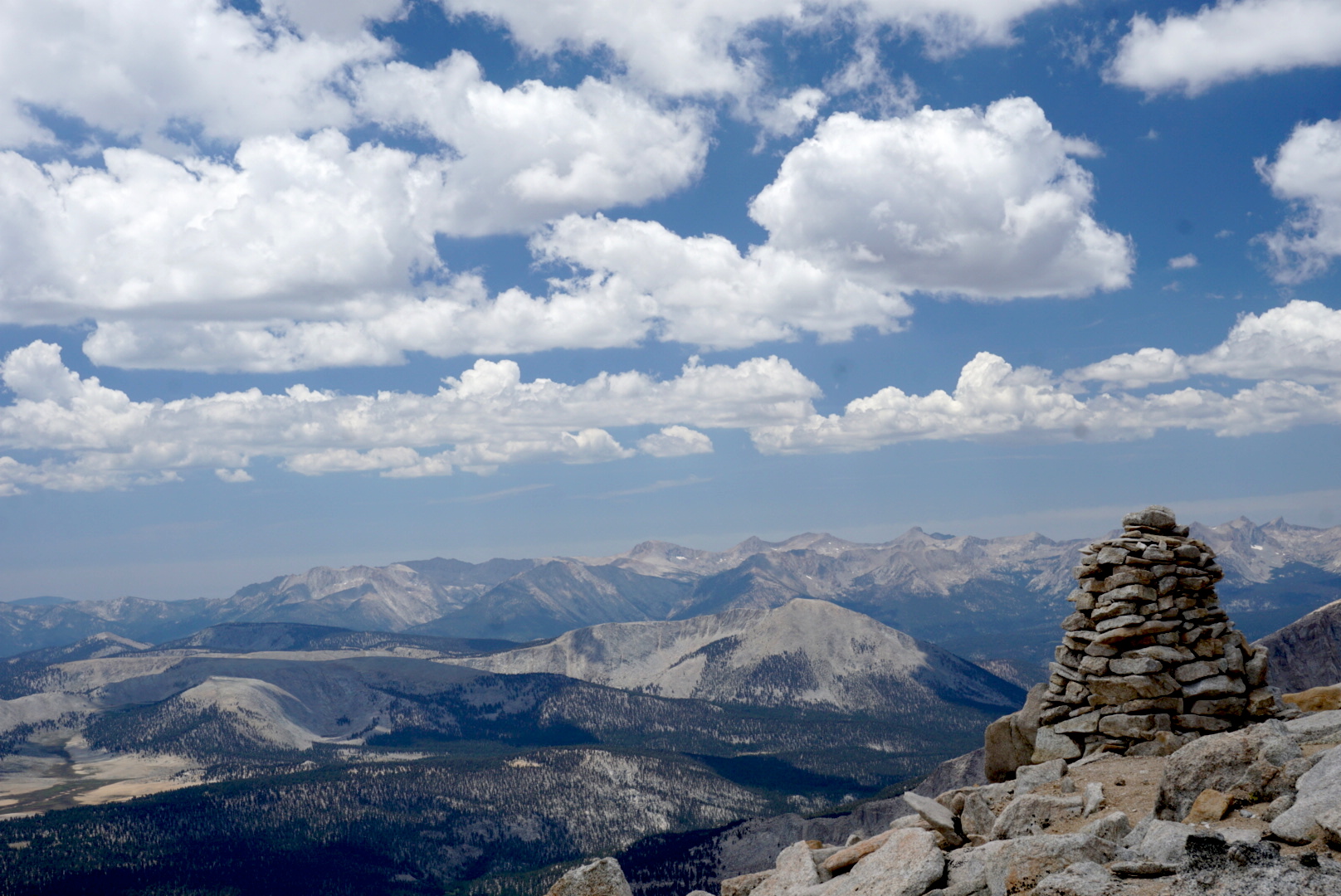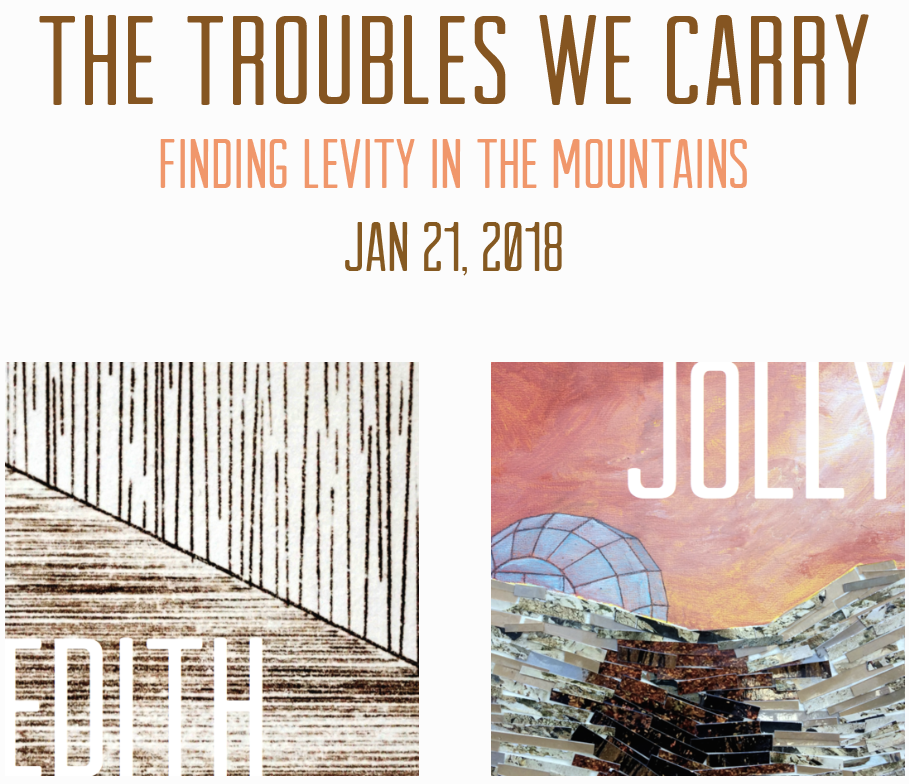It had been a few years since we last visited this part of the Sierra and it was time to pay this photogenic landscape a return visit. We started with a night at Onion Valley campground to help these sea-level dwellers acclimate. We were catching the tail end of a week of challenging weather in this region and we caught some afternoon rain, but nothing too intense.
Day 1
We started at Onion Valley trailhead and went over Kearsarge Pass by late morning, then continued on the high trail, rather than the low trail that leads down toward Kearsarge Lakes and Charlotte Lake. Clouds had been forming, and by mid-afternoon rain and some thunder arrived. We set up camp about 0.75 mi south of Glen Pass, nearish one of the tarns that dot this part of the trail.
Conditions were drier than we expected given the winter had brought average snowpack in the Sierra. Already, many creeks and streams were down to a trickle or totally dry, and many of the tarns had visibly shrunk, likely to be gone by early fall.
What was truly delightful about this side of Glen Pass was that the pika population was alive and well, with many critters (so many we lost count!) industriously skipping from rock to rock to gather their stockpiles of vegetation for the winter. From this camping location, we were treated to a 360-degree sound bath of syncopated pika screeches — to our right, the left, behind us, in front of us! The only other place we had seen so many pikas was near Tuolumne Peak in Yosemite (see The Pika Diaries!). It was a big treat to see these hardy little non-hibernating vegetarians doing their thing.
Day 2
We went over Glen Pass early and descended toward Rae Lakes, chatting with a steady stream of JMTers and a few weekenders. Some were visiting from far-flung states — a solo hiker from Florida, a family from Maryland — and were just discovering the incredible magic of the Sierra for the first time. Seeing them in awe was a pleasant reminder of just how lucky we are to live in proximity to the Range of Light.
At Rae Lakes we left the JMT and picked up the trail toward Sixty Lake Basin. As we ascended, the trail afforded beautiful views of Rae Lakes, the Painted Lady, and eventually Fin Dome. It is an easy trail to follow, and as it ascends and then summits to drop into Sixty Lakes Basin, the intimacy of this basin becomes apparent. It feels smaller in scale than many Sierra basins, with each of the many lakes in its own bite-sized, forested valley. We found a great spot to camp on the north end of the long, unnamed lake locally referred to as Finger Lake, just east of Mount Cotter. It is at this spot that the grander views up into the high basin above treeline really open up. We typically don’t camp so close to a lake — it brings colder temperatures, more condensation, and often more wind — but it was a jaw-dropping spot. We stayed two nights.

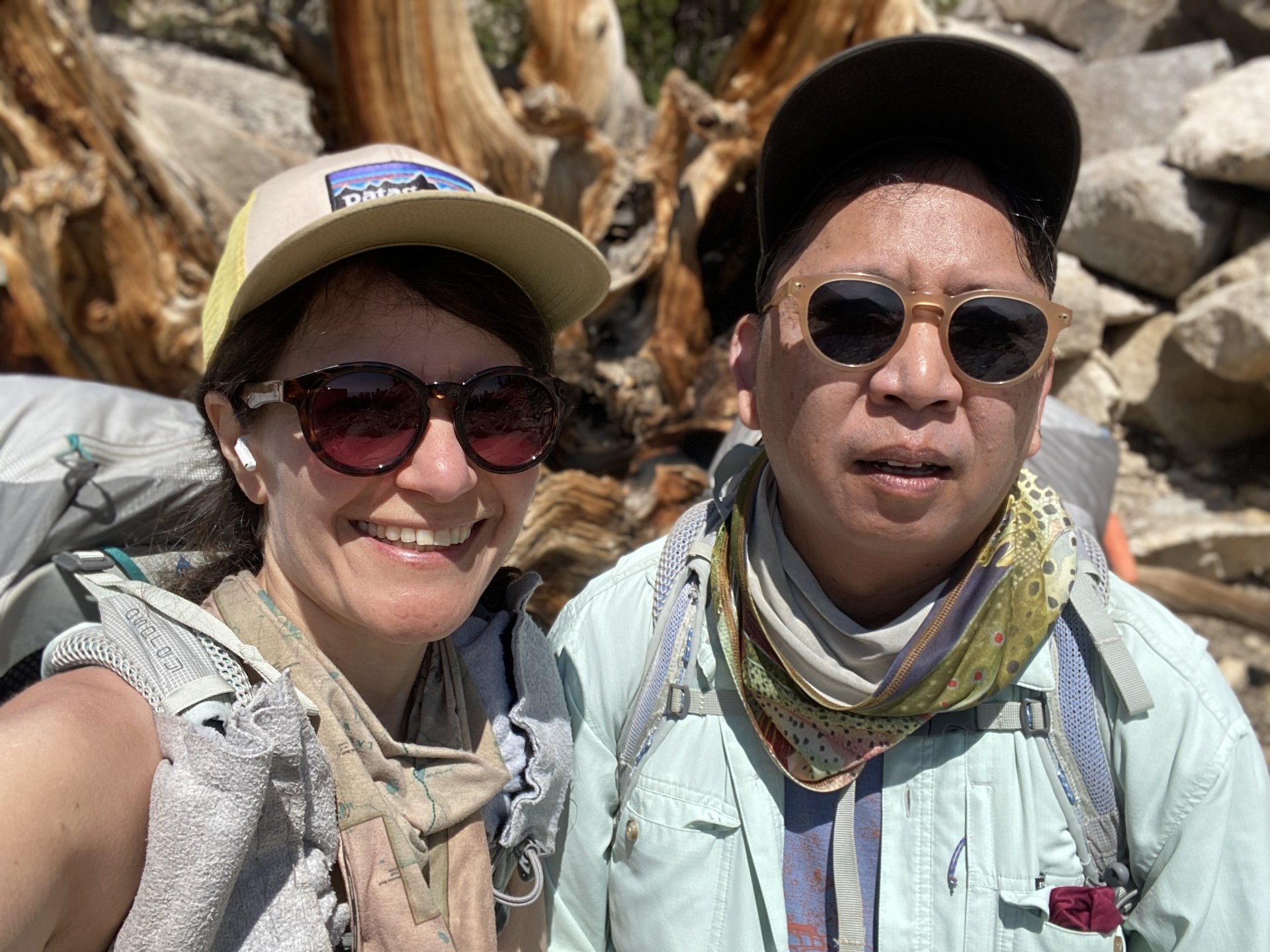









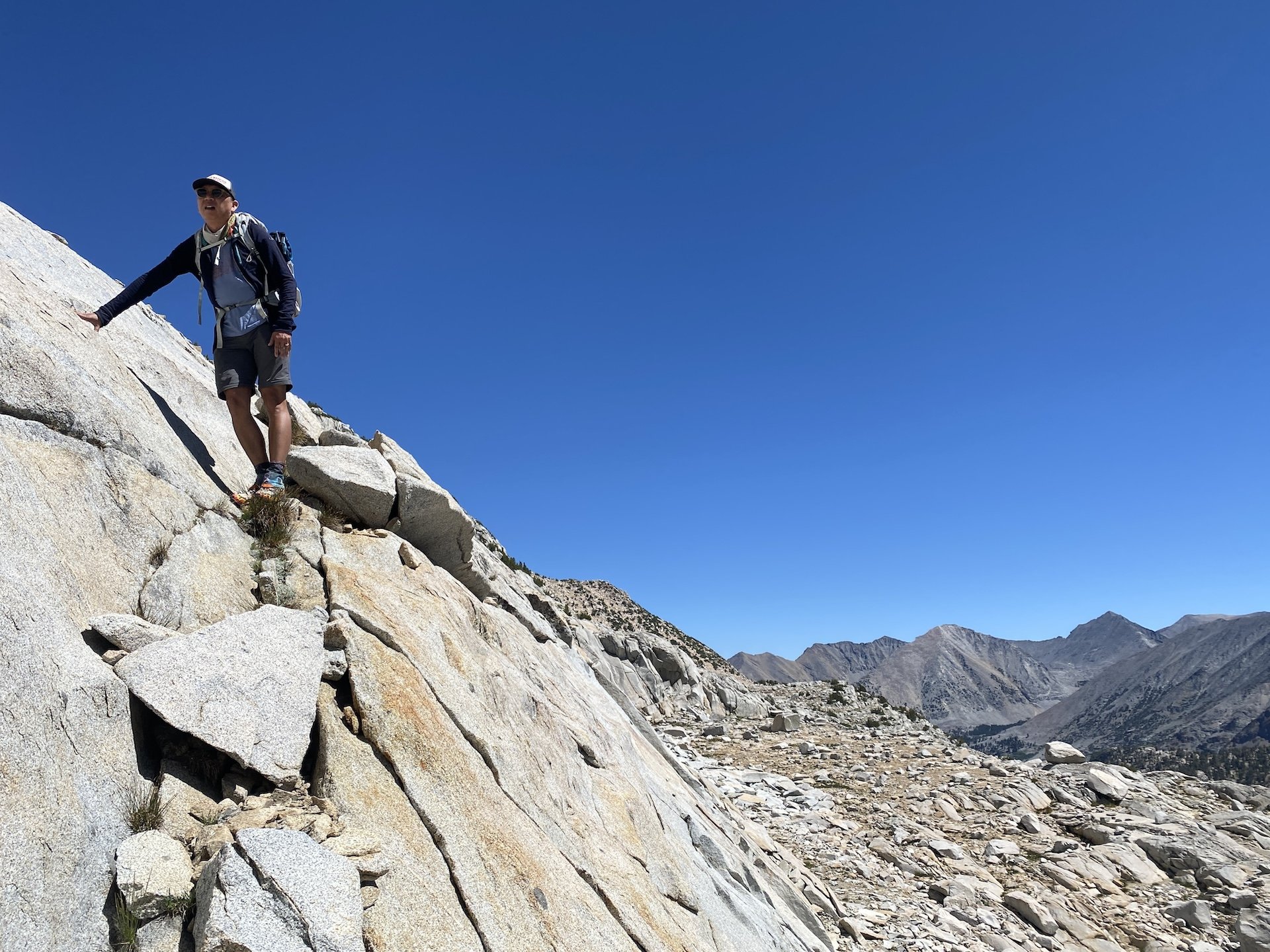
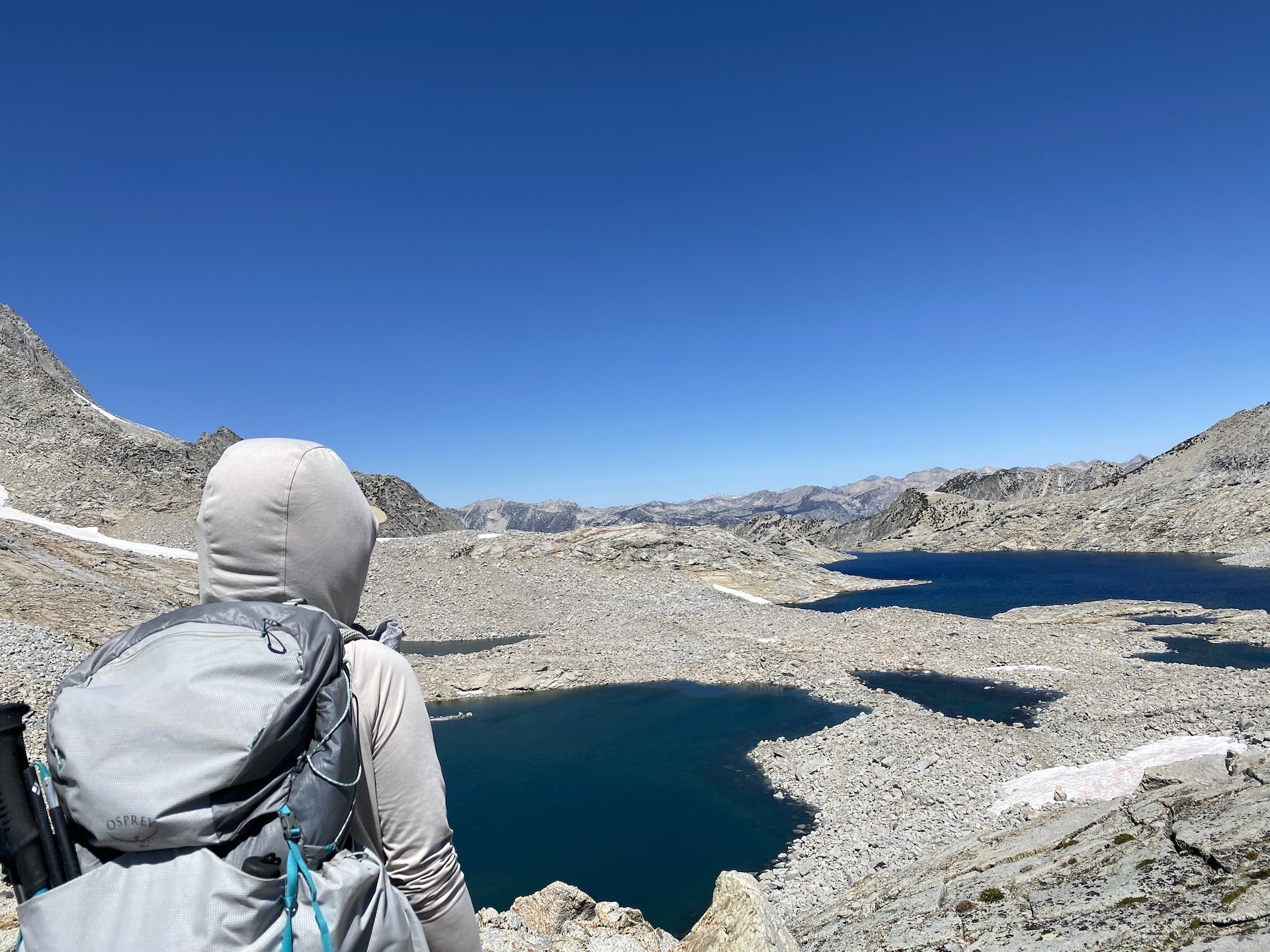









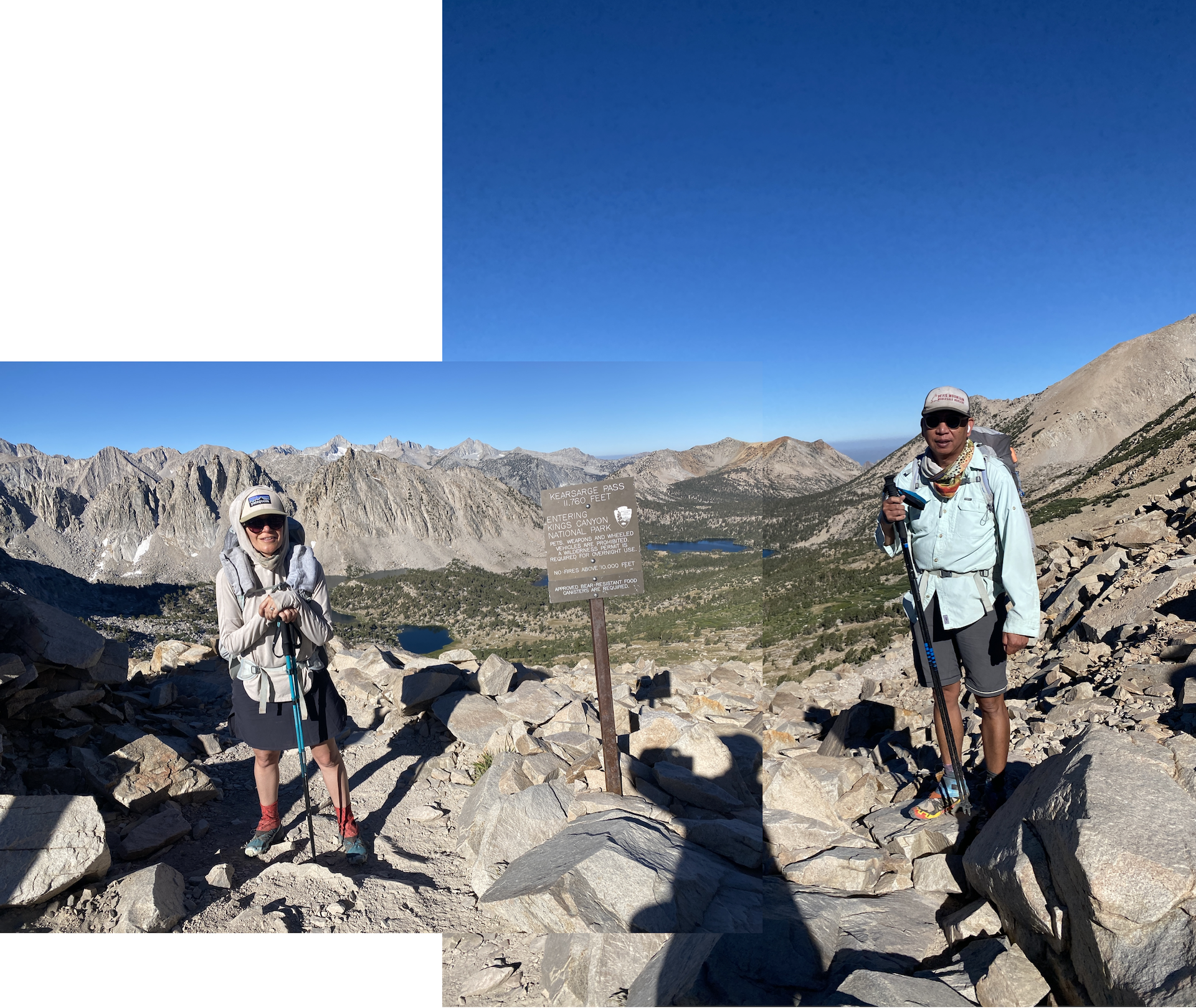
Day 3
We day hiked cross-country up the basin. This can be accomplished by staying on the west side of Finger Lake. We went high almost immediately to avoid the steep drop-offs encountered along the ledges closer to the lake, alternately following and then ignoring some cairns along the way. The brief description in Secor’s High Sierra was helpful.
We meandered our way up, encountering some class 2 talus and boulder sections. We stayed due south for much of the route, aiming for the tarns and lake before turning west and zigzagging up ledges to the top. A nice surprise was seeing the last lake before reaching the col come into view to the east with each step, which has a beautiful turquoise blue color owing to the glacial melt that feeds it. It was a treat to see this vibrant hue — there are very few Sierra lakes this color.
Eventually, after about 2 slow miles we made it up to Sixty Lake Col, which offers awesome views into Gardiner Basin and its sparse moonscape. Here we lingered over a lazy lunch, watching a group of about 10 hikers on the Gardiner side crossing their way precariously along what looked to us like the wrong (read: exceedingly steep and eroded) side of the lake nearest the col. At the col we spoke with a solo hiker, Carl from Richmond, CA, who was doing a multiday off-the-beaten-path route starting at Baxter Pass. For having the reputation of being a seldom-visited basin, Gardiner sure seemed busy the day we were there! We opted not to go down into Gardiner Basin, and instead headed back and past camp to explore other parts of Sixty Lake Basin, where we picked up the visible trail once more.
Gardiner Basin from Sixty Lake Col
Day 4
We hiked back the way we came, going back down toward Rae Lakes and over Glen Pass. Once again, we spoke to many hikers along this fairly busy path. We opted to dry camp along the high trail to enjoy one more quiet night on the trail. We found a delightful spot a little over a mile west of Kearsarge Pass, on a promontory ledge with gorgeous views of Bullfrog Lake and the Kearsarge Pinnacles, where we soaked in the afternoon sun and enjoyed a trail happy hour before an early dinner.
Day 5
Enticed by the promise of a hearty meal in Lone Pine, we hiked down at a steady pace. We saw a pair of rather large and healthy-looking sooty grouse foraging near the trail. It was already fairly hot at these lower elevations by the time we reached the trailhead by mid-morning, and we were glad not to be among the hikers just starting their uphill trek!
This area holds a special place in my heart. Onion Valley is it is the first place I ever camped. In preparation for my first night in a tent, I did a great deal of reading about camping in bear country, acclimating to being at altitude, having the right gear etc. Despite my over-preparation, on the morning after my first night I reached into my jacket pocket to find two single-serve packets of honey that I had forgotten to take out of the tent. I thought myself lucky not have been visited by Winnie the Pooh or any other honey-loving ursine!
Days: 5 (July 2024)
Mileage: 37 mi.
Elevations: Onion Valley trailhead 9,200’; Kearsarge Pass 11,700'; Glen Pass 11,969’; Sixty Lake Col 11,700’. Total elevation gain 9,678’.
Camp locations: tarn south of Glen Pass; Sixty Lake Basin (2 nights); High Trail ~1 mi west of Kearsarge Pass.






